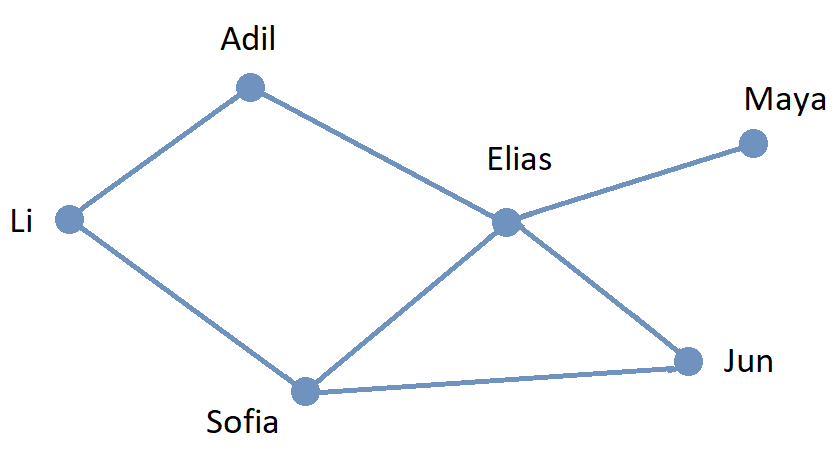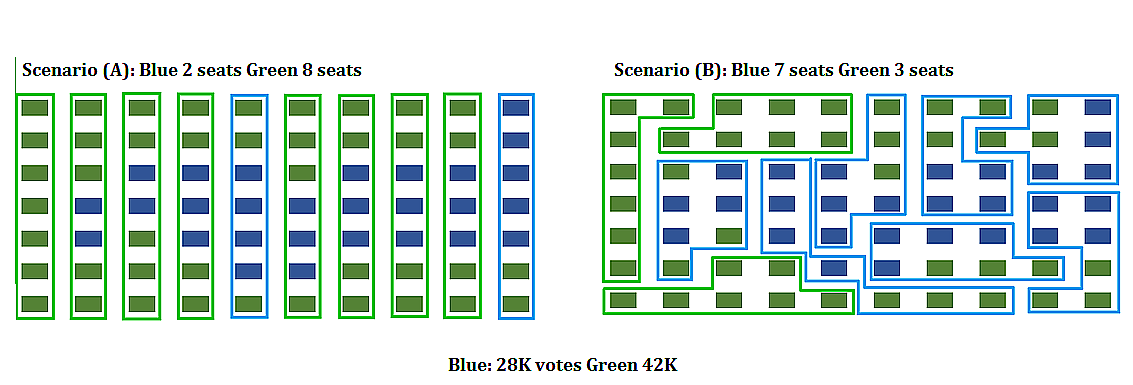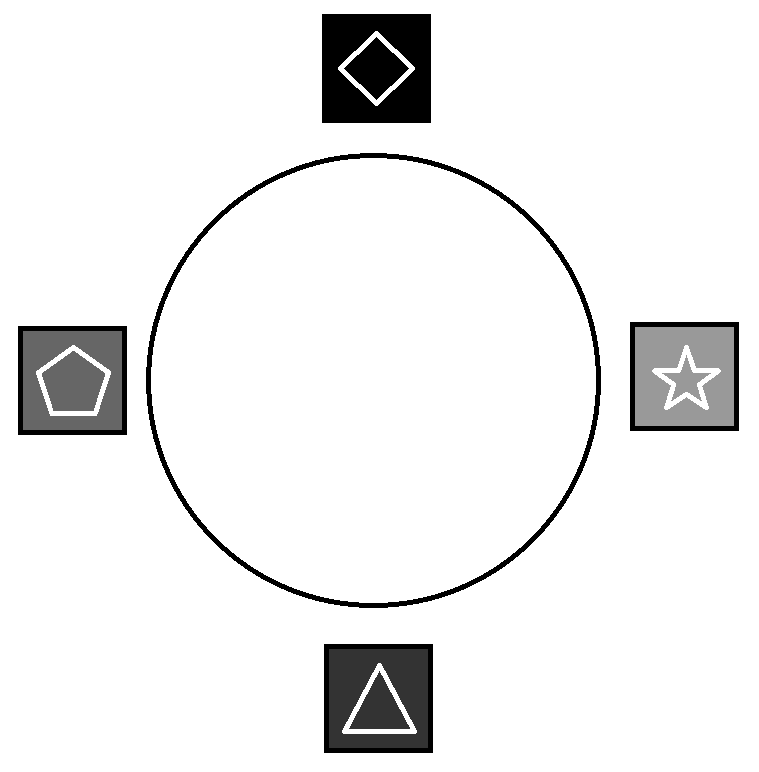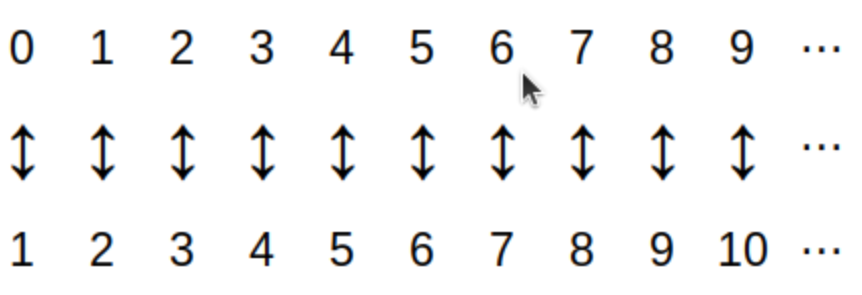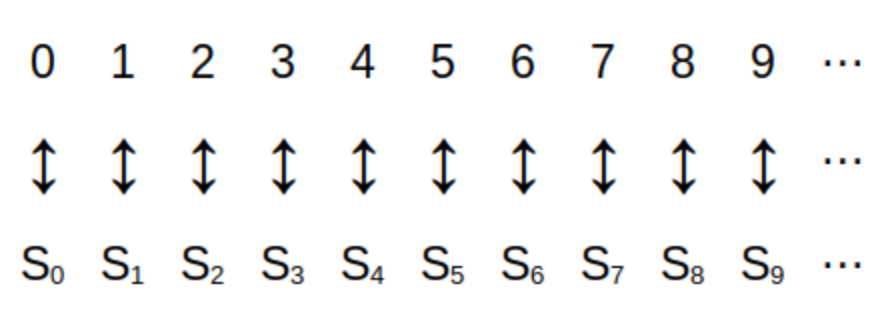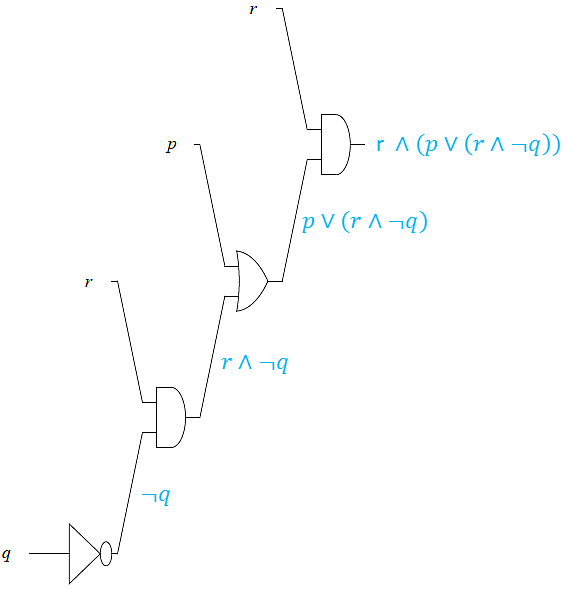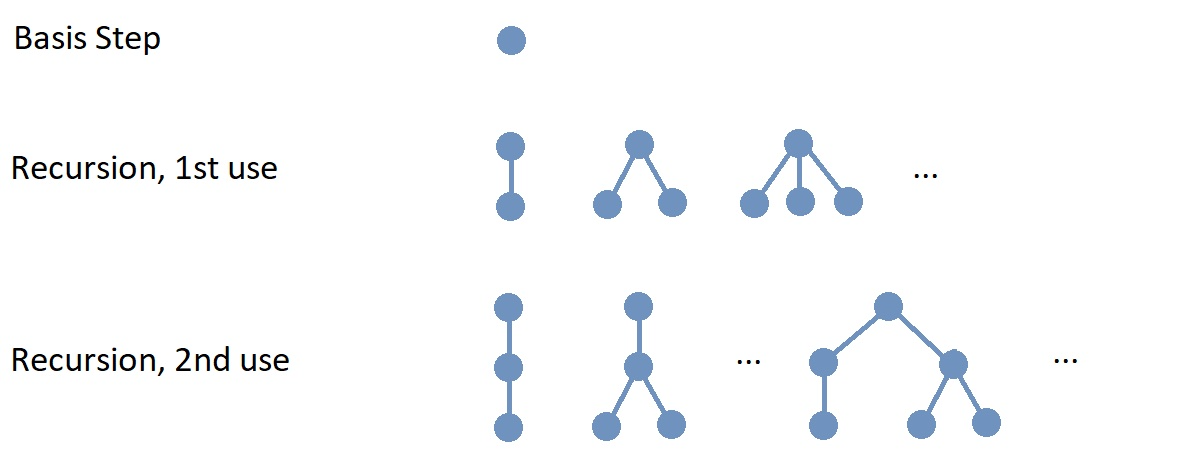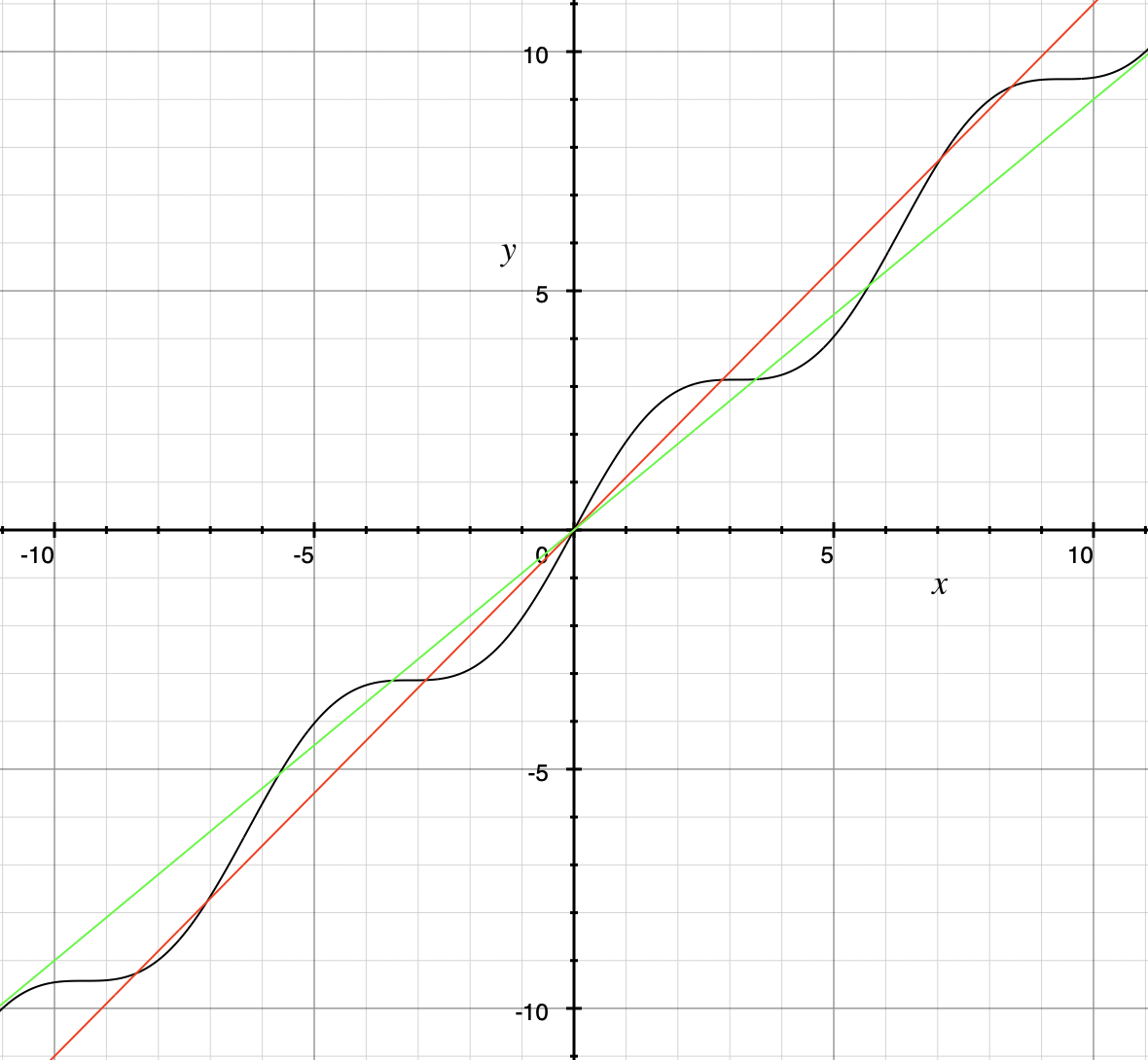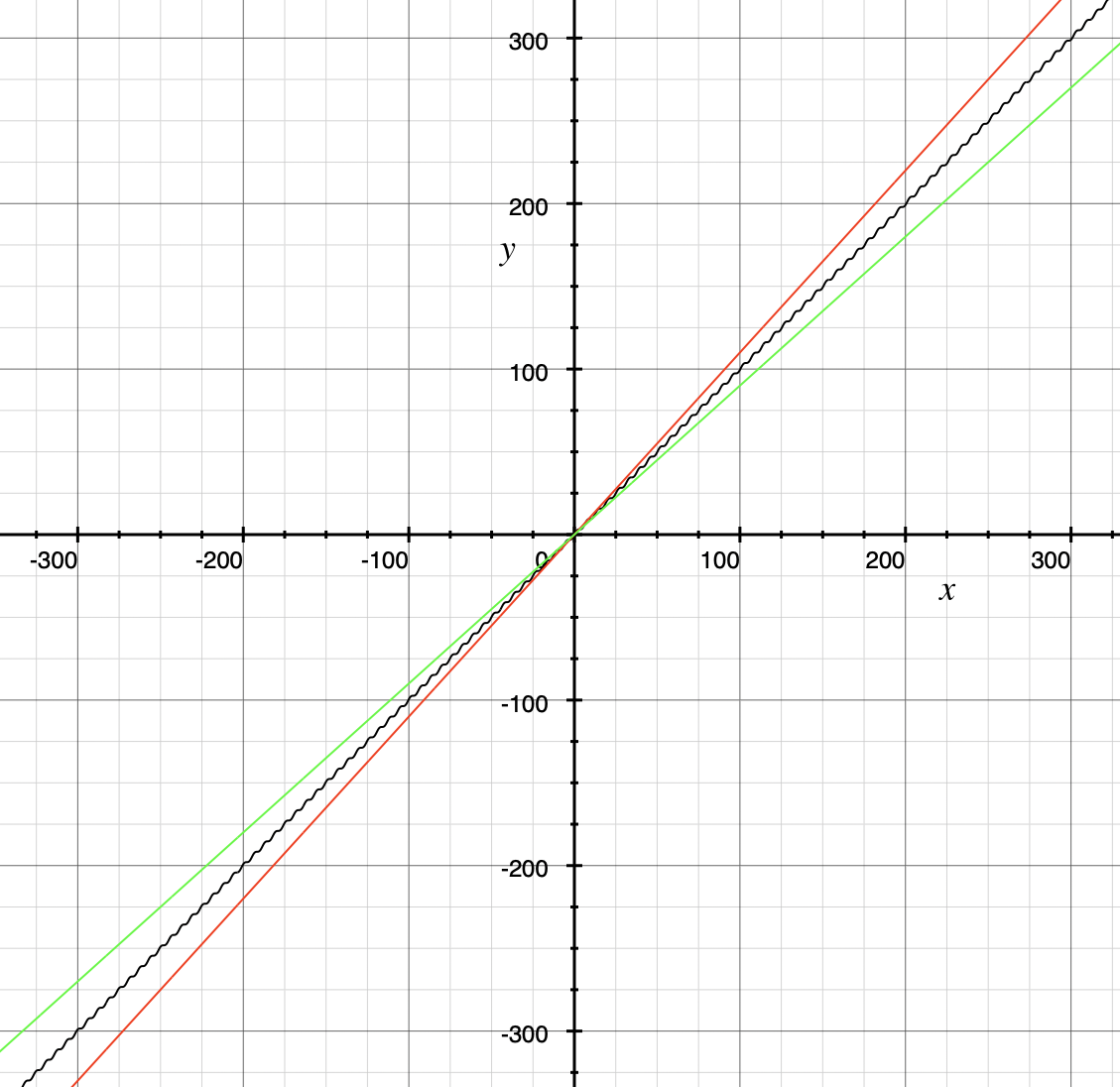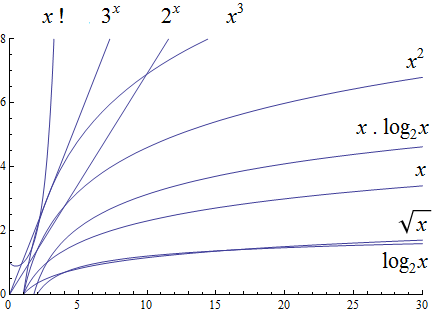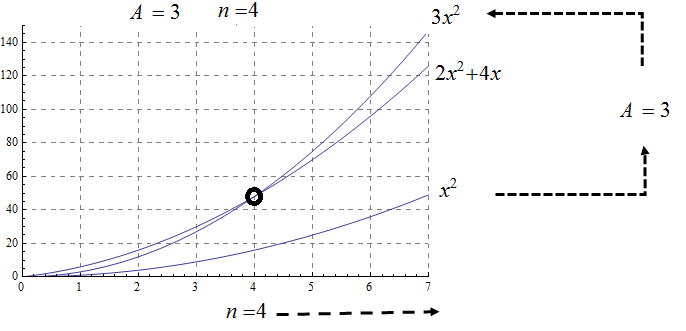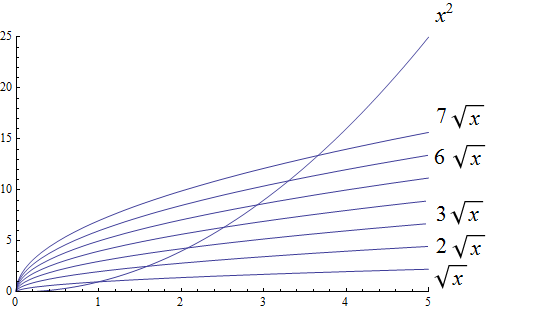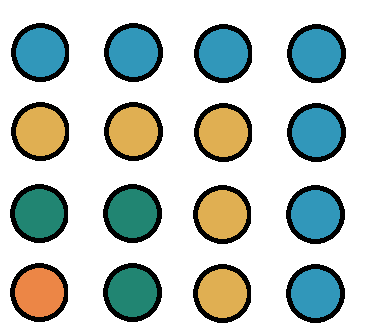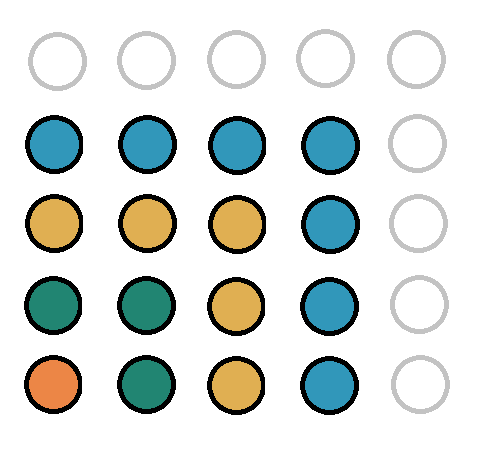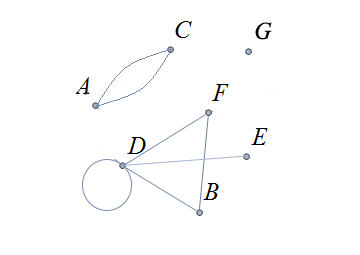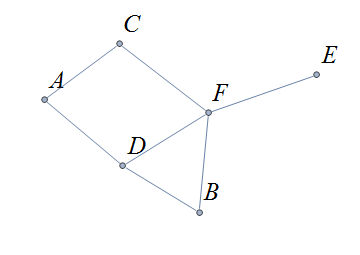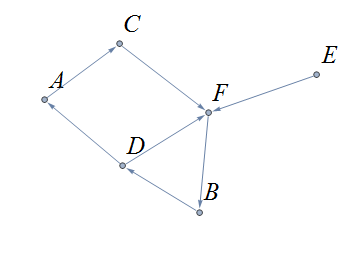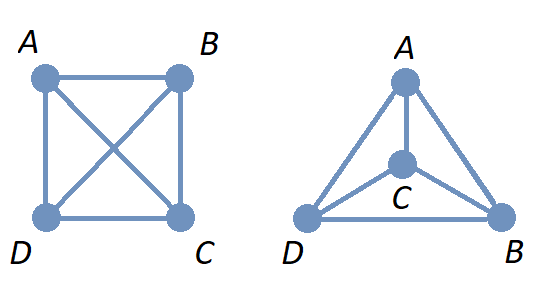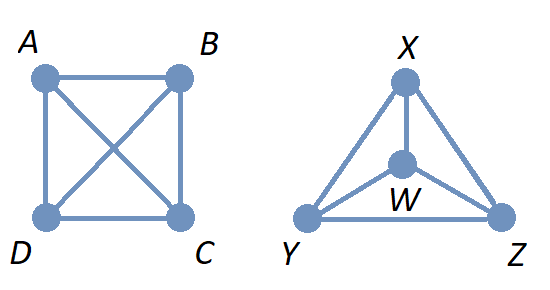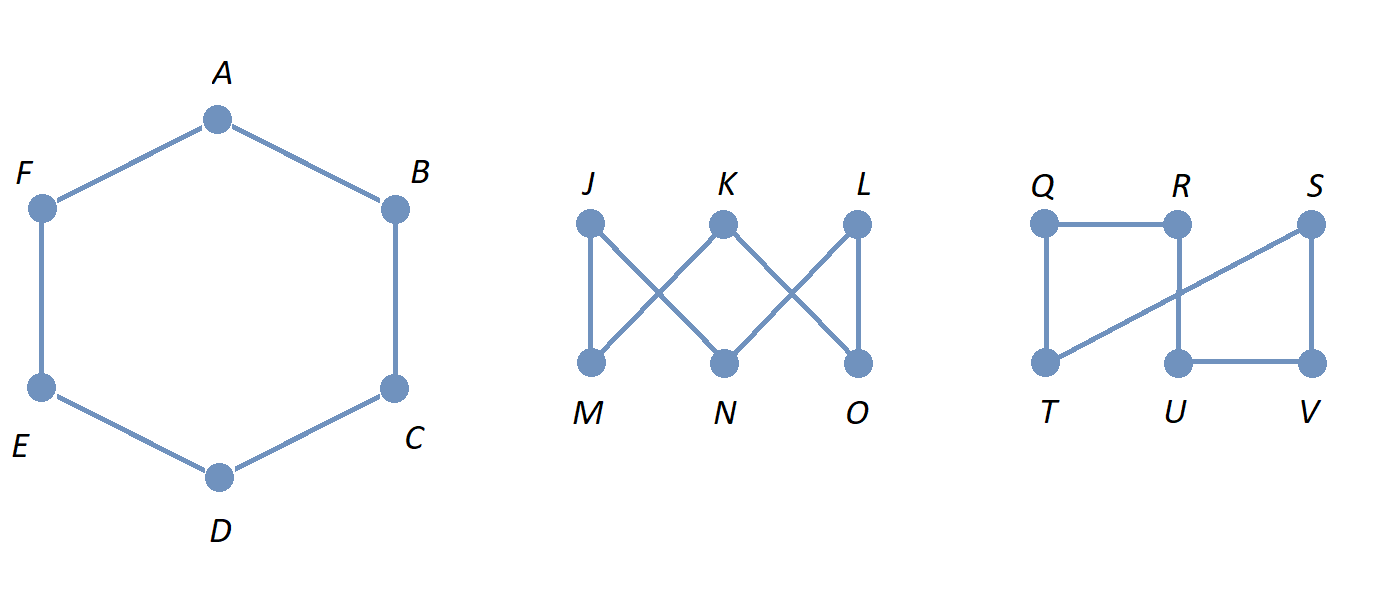1. About this text
This revision of the book was last updated on December 2, 2024.
|
This is an old revision of the Remix. The current revision can be viewed here. |
This work, "Discrete Math - The MKD Remix" by Mark Kelly Davis, is adapted from “Discrete Math” by Mohamed Jamaloodeen, Kathy Pinzon, Daniel Pragel, Joshua Roberts, and Sebastien Siva. “Discrete Math” is used under CC BY-NC 4.0. All files for “Discrete Math” are available at its associated GitHub repository.
This work, "Discrete Math - The MKD Remix", is licensed under CC BY-NC 4.0 by Mark Kelly Davis.
1.1. How does the Remix differ from the original work?
The remixer’s goal is to adapt the original “Discrete Math” to create an OER textbook for a one-semester Discrete Mathematics/Discrete Structures course for Computer Science students who have some experience coding in Java, Python, or another high-level programming language, and have completed an Algebra Ⅱ-level (or equivalent) mathematics course. The Remix is a work-in-progress that will continue to evolve over time toward this goal.
The remixer’s intent is that the Remix:
-
address topics and learning outcomes listed for
-
ACM/IEEE-CS/AAAI Joint Task Force on Computer Science Curricula "Computer Science Curricula 2023" MSF-Discrete: Discrete Mathematics
-
ACM/IEEE-CS Joint Task Force on Computing Curricula "Computer Science Curricula 2013" Discrete Structures (DS) but omitting the DS/Discrete Probability topics and learning outcomes.
Note: ACM CCECC "Computer Science Curricular Guidance for Associate-Degree Transfer Programs with Infused Cybersecurity" Discrete Structures Knowledge Area (DS) is a list of learning outcomes and assessment rubrics that does not specify topics, so the remixer preferred the 2013 document to that June 2017 update. -
California Community Colleges (CCC) C-ID Math 152: Discrete Structures content areas Ⅰ through Ⅴ, omitting area Ⅵ. Discrete Probability.
Note that the content listed for C-ID Math 152: Discrete Structures is identical to the topics listed for ACM/IEEE-CS CS2008 Review Taskforce "Computer Science Curriculum 2008: An Interim Revision of CS 2001" Discrete Structures (DS). -
additional topics from the ACM CCECC Software Engineering curriculum 2005 Discrete Structures Mathematics course.
-
-
use terminology, definitions, notation, and symbols that align with commonly-used textbooks such as Kenneth H. Rosen’s Discrete Mathematics and Its Applications, 8th Edition.
-
incorporate team-worthy tasks, currently in beta testing, for many of the topics
-
give learners the ability to start learning new content based on what the learners likely know already, then move toward building a formal understanding (e.g., pointing out that the set of odd integers and the set of even integers are the two equivalence classes corresponding to a relation, and that the rules for adding and multiplying odd and/or even numbers is an example of modular arithmetic.)
-
organize the content in "chunks" for ease of reading and digestion of new ideas
-
refer to original sources (e.g., Pascal’s handwritten triangle as well as earlier non-European references to and uses of the number triangle.)
If you are looking for an OER textbook for a Discrete Mathematics course intended primarily for Mathematics majors (e.g., one that does not include topics such as Big-O complexity analysis of algorithms, relations, and binary tree traversal algorithms), there are many suitable ones that exist. For example, see Oscar Levin’s Discrete Mathematics: An Open Introduction, 3rd edition.
1.1.1. About the use of Python in the Remix
The Remix is intended for a course that does not require programming. Python is not part of the course content.
The original “Discrete Math” uses Python code samples throughout the textbook and includes "Introduction to Python" as its 3rd chapter. The Remix repurposes this content: Code samples in the Remix are used as "pseudocode that can run on a computer," with coding that uses "just enough Python" to illustrate important abstract ideas and concepts. Most of the existing Python examples were altered, and many new Python examples were introduced throughout the Remix. Note that, in order to illustrate concepts and ideas in the style of pseudocode, much of the Python code shown in the Remix avoids using built-in functions and often uses less efficient data structures and algorithms! For example, in the chapter "Algorithms & Big-O", code samples for sorting and searching avoid using built-in Python functions in order to illustrate all steps needed by the algorithm. In many cases, a comment can be found near a non-optimal code example that explains or illustrates a more Pythonic way of coding.
-
The chapter "Introduction to Python" was moved to the appendices.
1.1.2. Partial list of changes made (or to be made) to the Remix.
-
Terminology, definitions, and notation and symbols were changed throughout the Remix to align with other commonly-used textbooks. For example, the Remix defines the set of natural numbers \(\mathbb{N}\) to include the integer 0 as an element; this definition is very common and is in fact a "standard" that appears in International Standard ISO 80000-2:2019, Quantities and units — Part 2: Mathematics.
-
In the chapter "Introducing Discrete Mathematics," informal definitions of foundational mathematical ideas needed in the course are introduced. This is done so that learners can see what they do (or do not) already know and create the necessary basis to learn the course content. In addition, a new Appendix, "On-Demand Math Resources" was written which includes material that learners can refer to as needed.
-
The "Counting" chapter was split into two chapters, "Counting: Arithmetic Techniques" and "Counting: Permutations And Combinations".
-
The "new" chapter "Number Bases" is based on the original "Number Theory" chapter, but content on divisibility, congruence, and modular arithmetic was moved into the chapters "Introducing Discrete Mathematics" and "Relations" of the Remix.
-
The order of the chapters "Set Theory" and "Logic" was swapped. New material was inserted into each of the two chapters. The section "Representing Sets as Lists" was omitted from the "Set Theory" chapter.
-
A new chapter, "Proofs: Basic Techniques," was written and inserted after "Logic."
-
The chapter "Sequences and Recursion" is based on the original chapter "Sequences, Recursive Definitions, and Induction," which was split into two new chapters, "Sequences and Recursion" and "Proofs: Mathematical Induction." "Sequences and Recursion" appears before and as a lead-in to "Functions" since sequences are a special case of functions and recursion is often used to define functions.
-
The chapter "Functions" was moved to its new position, several chapters after "Set Theory." This was done for the following reasons:
-
The learner is expected to have a basic working understanding, from previous classes, of the one-to-one correspondence concept: A unique pairing of each element in one set with elements in another set.
-
The learner is expected also to have a basic working understanding of the function concept: A rule/mapping/association that takes certain objects as inputs and assigns each such input to exactly one output object.
-
It is likely that the learner has some ability to work with function notation and operations such as composition and inversion of functions from previous mathematics courses.
-
The remixer felt that a precise, formal definition of function, as well as properties such as injectivity and surjectivity, could be delayed until after learners had used their previous knowledge of functions.
-
-
A new chapter, "Relations," was written to include topics listed in the ACM/IEEE-CS/AAAI and CCC C-ID courses but absent from the original work, and was inserted after "Functions". This chapter also includes some of the content on divisibility, congruence, and modular arithmetic from the "Number Theory" chapter of the original work.
-
The order of the chapters "Algorithms" and "Growth of Functions" was swapped, then the title "Growth of Functions" was changed to "Rates of Growth of Functions" and the title "Algorithms" was changed to "Algorithms and Their Analysis." New content was inserted into each of the chapters and existing content was revised.
Note that algorithms and their analysis are not mentioned explicitly as topics to be included in the ACM/IEEE-CS/AAAI and CCC C-ID courses, but these topics fit naturally as a motivation to learn much of the other content of the Remix. -
The chapter "Proofs: Mathematical Induction" is based in part on the original chapter "Sequences, Recursive Definitions, and Induction," but the content of this chapter was heavily rewritten and new content was inserted. This chapter now appears after the chapter "Algorithms and Their Analysis;" this placement was done so that mathematical induction can be viewed as a way of validating algorithms rather than as just another more complicated proof technique.
-
The original chapter "Graph Theory" will be split into two chapters, "Graphs" and "Trees". Additional content as well as team-worthy activities will be introduced into each of the new chapters.
2. Introducing Discrete Mathematics
This chapter was last updated on August 28, 2024 (added water glass example and link to video about \(\pi\) to section 2.1)
Contents locked until 11:59 p.m. Pacific Standard Time on December 20, 2024.
Welcome to the Remix! I hope this textbook provides you an opportunity for a stimulating and intellectually enjoyable learning experience.
Mathematics is one of human civilization’s greatest tools: It involves pattern noticing, collecting, counting, generalizing, formalizing, and abstracting. The development of mathematics is a continuing work that spans at least 5,000 years and many different peoples and cultures. This development will continue long after you and I are gone - never forget that we are living during an era that will be someone else’s Ancient History!
2.1. What is "Discrete Mathematics"?
There seems to be no universally agreed-upon definition of "discrete mathematics," but I, the remixer, will try to explain what it is.
Discrete mathematics is the mathematics people use to study and understand structures built from individual objects in a way that the individual objects can still be treated as separate from one another within the structure. In such a structure, the individual objects can put into categories and counted; it makes sense to ask questions like "What is the next object in the structure after this one?" or "Which other objects are the closest to this one?" (where "closest" could refer to physical distance or could mean most similar in color or size) or "How many objects in the structure have a certain property?" Discrete mathematics is a collection of tools that can be used to answer these kind of questions.

As an example, consider a wall, a structure built from individual stones and bricks, part of which is shown in the image to the right. The objects in the structure are the stones and bricks. You can still identify individual objects even though they were combined to build the larger structure, and can classify individual objects by type (either stone or brick) or by color or by the how close to the top of the wall the objects are. You can try to count the total number of individual objects, and you can count the number of individual objects that are next to any one object you choose. The wall is a (non-mathematical) example of a discrete structure.
Image credit: "Vintage Stone And Brick Wall" by Paul Brennan. The image is dedicated to the public domain under CC0.
Here are two more examples of discrete structures.
-
The set of humans in a family can be treated as a discrete structure.
We tend to perceive humans as individuals who can be separated from one another, and questions like "Which humans are siblings of this human?" and "Which humans are parents of this human?" and "How many children does this human have?" make sense. -
The set of integers, in the usual order, as represented on a number line is a discrete structure.
It makes sense to ask questions like "What is the next integer after -2?" or "What are the integers that are closest to -2?" for this structure.

So what kind of structure is not discrete? Consider the water in the glass shown in the image. The water in the glass is a structure, but for most of human history it has not been seen as made up of objects that are of a different nature than the structure. That is, many generations of humans have recognized the difference between a wall and the individual stones and bricks that make up the wall, but likely have perceived water as being made up of… water. This is why humans tend to use measurement of quantities of water, using units such as fluid ounces or milliliters. In our time we humans understand that the water is built from molecules, but because the molecules are so tiny, so numerous, and so densely distributed throughout the structure, we humans (except perhaps chemists, physicists, and some engineers) still ignore the individual molecules and use measurement instead of counting. For example, a recipe might call for "8 ounces of water" but never would ask for "7.6 × 1024 molecules of water." Notice that the measurement units do not correspond in any natural way to the individual molecules or groupings of the molecules (unless, perhaps, you are a chemist, physicist, or engineer.)
Notice also that the glass container itself is another structure in which individual molecules tend to be ignored.
Image credit: "Water Glass" by Peter Griffin. The image is dedicated to the public domain under CC0.
Humans use continuous mathematics like calculus to study a structure that is built from objects that are densely distributed throughout the structure. For such a structure, measurement and approximation is more appropriate than counting.
-
The set of real numbers, in the usual order, as represented on a number line is NOT a discrete structure.
It does NOT makes sense to ask about "the next real number after \(\pi\) on the number line" because if we think c is the "best candidate" for "the next real number after \(\pi\) on the number line" then the number \(c_{1} = \frac{c+\pi}{2},\) which is the midpoint of the interval with endpoints c and \(\pi,\) is closer to \(\pi\) than is c, so \(c_{1}\) is a better candidate than the "best candidate" for "the next real number after \(\pi\) on the number line"… that is, the concept "the next real number after \(\pi\) on the number line" does not make sense for this structure as such a number cannot exist! Likewise, "the real numbers that are closest to \(\pi\)" do not exist.
Instead, "the real numbers that differ from \(\pi\) by less than \(\epsilon\)" makes sense for any positive number \(\epsilon\) (The symbol \(\epsilon\) is the Greek letter "epsilon".) By choosing \(\epsilon\) as small as we like, we can describe the real numbers that are as close to \(\pi\) as needed to use as approximations to \(\pi.\) This is why (and how) limits are defined and used in courses like precalculus and calculus, subjects that involve the real number line.
Note 1: The set of real numbers is called the continuum in advanced mathematics courses.
Note 2: The technique used to justify that "the next real number after \(\pi\) on the number line" does not exist is called proof by contradiction and will be discussed along with other techniques in the Proofs: Basic Techniques chapter of this textbook.
Note 3: Is \(\pi\) really on the number line? Click here to view an artist’s explanation about where \(\pi\) lies on the number line. Be warned that some of what this artist says (about history, about \(\pi\) being equal to 3.14) is not correct, but the visualization still may be helpful to you.
2.2. To The Student: Some Things To Know Before You Begin
Here are some things to orient you.
2.2.1. How To Use This textbook
The textbook is designed to build on your previous knowledge, and then build new knowledge and understanding by visiting the topics over and over again. In the next subsection, the basis of foundational mathematical ideas are discussed. You are encouraged to read through all of those foundational topics and to work through the Questions and Challenges.
There are two analogies that I, the remixer, like to use here:
-
Think of the course presented in the Remix as a language course.
You will use this language to talk about mathematics and computer science as you continue along your professional path. You cannot master a new language by learning some words or grammar in the first few weeks of a language course and then "forgetting" that content later, but still succeed in the course and master the language to use beyond the course. You need to assume that everything you learn in this textbook will apply later in the textbook and in your later learning. One of the goals of this textbook is to help you build a broad and rich vocabulary in discrete mathematics and a way of thinking that will apply to your future work. -
Think of the course presented in the Remix as exercising at a gym.
You will build your strength and awareness about your abilities by working out. It may be tempting to watch others "demonstrate" how to do certain exercises and then choose not to do them yourself, but you are selling yourself short. A physical trainer usually knows already what they are capable of doing, so no compliment is being paid if you tell them "Wow, you’re really strong"… the trainer’s goal is to get you to say "Wow, I’m starting to get really strong!"
2.2.2. Foundations
Learning discrete mathematics requires putting together old ideas in new ways and adding new ideas to the mix. This subsection highlights some of the old ideas you will need to get the most out of this textbook. Also, you’ll find opportunities here to practice with the built-in tools that are part of the textbook.
Some of these ideas may be old for you, but some others will probably be new. To use this textbook effectively, you’ll need to be able to work with these ideas with relative ease. If a few of these ideas are brand new to you, that is fine: All of these ideas will be discussed again, much more formally and in greater detail, later in the textbook.
-
A set is an unordered collection of zero or more objects. You can think of a set as a list of the names of the objects included, but we do not care about the order of the names in the list and we do not care if the list contains duplicate names.
An example is the set of the names of the additive primary colors of light which can be written as \[\{ \text{"red"},\,\text{"green"},\,\text{"blue"},\,\text{"red"} \}\] which contains exactly three elements: "blue", "green", and "red." It does not matter that "red" appears twice, and it does not matter that the order of the colors in the list "blue", "green", and "red" is different from the order used in the previous set notation. We could define the same set with any other list that contains the same three elements, for example, \(\{ \text{"green"},\,\text{"red"},\,\text{"blue"} \}.\)
As you will see in the Set Theory chapter, it is common practice to use uppercase English letters to stand for sets; this is similar to how lowercase letters are used as variables or constants in algebra. For example, you could write \[P = \{ \text{"red"},\,\text{"green"},\,\text{"blue"},\,\text{"red"} \}\] which allows you to refer to the set as P instead of needing to read the list of elements every time you want to talk about the set. This is like using the Greek letter π instead of needing to read off the first few digits of the non-repeating decimal expansion 3.14159265359….-
NOTE 1: In mathematics, a set like P, that is, \(\{ \text{"red"},\,\text{"green"},\,\text{"blue"},\,\text{"red"} \}\) is treated as a constant, so you cannot remove elements or insert new elements once a set has been defined and described. As an example, if you wanted to insert the name "white" into the set, you would need to define a new set \[ C = \{ \text{"red"},\,\text{"green"},\,\text{"blue"},\,\text{"red"},\,\text{"white"} \}\] that contains four elements by appending "white" to the list used to define the old set P.
-
NOTE 2:
-
One way of creating a new set from two other sets is to form the union of the two sets. The union of two sets is formed by joining the sets.
For example, If \(P = \{ \text{"red"},\,\text{"green"},\,\text{"blue"},\,\text{"red"} \}\) and \(T = \{ \text{"yellow"},\,\text{"red"},\,\text{"blue"} \}\), then the union of the two sets is \(\{ \text{"red"},\,\text{"green"},\,\text{"blue"},\,\text{"red"}, \, \text{"yellow"},\,\text{"red"},\,\text{"blue"} \},\) the set that contains the colors that are in at least one of the sets \(P\) and \(T.\) -
Another way of creating a new set from two other sets is to form the intersection of the two sets. The intersection is the meeting of the two sets.
For example, If \(P = \{ \text{"red"},\,\text{"green"},\,\text{"blue"},\,\text{"red"} \}\) and \(T = \{ \text{"yellow"},\,\text{"red"},\,\text{"blue"} \}\), then the intersection of the two sets is \(\{ \text{"red"},\,\text{"blue"} \},\) the set that contains the colors that are in both of the sets \(P\) and \(T.\)
Likewise, if \(S = \{ \text{"yellow"},\,\text{"cyan"},\,\text{"magenta"} \},\) the set of additive secondary colors, then the intersection of \(P\) and \(S\) is the set \(\{ \},\) the set that contains zero elements. We call the set \(\{ \}\) the empty set.
-
-
NOTE 3: We can define a subset of any set by selecting zero or more of the members of the set. For example, \(\{ \text{"green"},\,\text{"blue"} \}\) and \(\{ \text{"green"} \}\) are subsets of \(\{ \text{"red"},\,\text{"green"},\,\text{"blue"},\,\text{"red"} \},\) and so is \(\{ \},\) the empty set.
-
NOTE 4: A set can also be defined by a property instead of a list. This will be explained in the Set Theory chapter.
-
-
A one-to-one correspondence between two sets A and B pairs each member of the set A with exactly one member of set B, and each member of set B with exactly one member of set A.
-
A bitstring is a finite sequence of bits, that is, the binary digits 1 and 0. Bitstrings can be used to represent a sequence of answers to "Yes-No" or "True-False" questions. Bitstrings can also be used to represent numbers in binary notation, which will be discussed in the Number Bases chapter.
-
A natural number is one of the nonnegative integers. The letter \(\mathbb{N}\) denotes the set of natural numbers, that is, \[\mathbb{N} = \{ 0,\,1,\,2,\,3,\,\ldots \}\] where the three dots are used because we cannot write down the infinitely-long list of natural numbers.
-
NOTE: We almost always use the base-ten (decimal) place-value system to represent natural numbers, but later in this textbook you will see that there are other number base systems such as the base-two (binary) place-value system, that are useful in some contexts.
-
WARNING: The definition of natural numbers used in this textbook is an ISO standard, but be aware that other textbooks and sources may use the "nonstandard" definition that the natural numbers are the positive integers. In this textbook, the set of natural numbers ALWAYS include zero as well as the positive integers, which is the standard definition.
-
-
Are you surprised to see Counting as a topic in a university-level mathematics course? You probably learned to count by putting physical objects (like fingers) into a one-to-one correspondence with number words such as "one, two, three, …" when you were a young child. That way of counting is fine for small sets, but the counting techniques discussed in this textbook let you count the number of elements in very large sets quickly.
-
The Pigeonhole Principle states that if \(n\) is a positive integer and \(n+1\) objects are going to be assigned to \(n\) categories then one of the categories must be assigned at least 2 of the objects. Click here to see a popular photoshopped image that illustrates this principle.
-
A function from set D to set C is a rule that assigns to each element in D (that is, to each input value) exactly one output value from C. We also say each input value is mapped to the output value. A much more formal definition will be given in the Functions chapter of the textbook, but for now it is enough to understand functions in this way.
-
The rule may be represented by a mathematical equation, a verbal description, a table of paired values, a plot of points, … or even code 😎!
-
The set D of all input values is called the domain of the function.
-
The set C that contains the output values is called the codomain of the function.
-
The range of the function is the set that contains only the output values and no other elements. The range is always a subset of the codomain C, but may not contain every element of C. That is, some elements of C may not be outputs for the function. It is often important to distinguish the range from the codomain; this is discussed in detail in the Functions chapter.
-
Here is another example.
-
A sequence is a function from the natural numbers, or a subset of the natural numbers, into another set (e.g., the natural numbers, or the real numbers, or a nonnumerical set.) For example, we can define a sequence by the rule \[a_{i} = 2i+1 \text{ for every natural number } i \] which describes the sequence of positive odd integers \(a_{0} = 1,\) \(a_{1} = 3,\) \(a_{2} = 5,\) and so on.
-
NOTE 1: It is common to use i as a variable in sequence notation because i is the initial letter of the word index. This i has nothing to do with the complex number \(\sqrt{-1}.\) Mathematicians recycle and reuse letters!
-
NOTE 2: It is traditional to write the input variable for a sequence as a subscript instead of putting it between parentheses. In the preceding example, \(a_{i} = 2i+1\) has the same meaning as \(a(i) = 2i+1\).
-
NOTE 3: The output values of a sequence are called terms. For example, the 0th term of the sequence is \(a_{0} = 1,\) the 1st term of the sequence is \(a_{1} = 3,\) and so on.
-
-
Summation notation is used to abbreviate a finite sum of numbers that contains a large number of addends. As an example, the sum \(1+3+5+7+9+11+13+15+17+19\) can be abbreviated as \(\sum\limits_{i=0}^{9}(2i+1)\). Likewise, the sum of the first \(500\) positive odd integers, \(1+3+5+\ldots+995+997+999\), can be abbreviated as \(\sum\limits_{i=0}^{499}(2i+1)\).
-
NOTE 1: The variable i used in summation notation is called the index of summation. We substitute each integer value for i, starting with the lower limit and stopping at the upper limit, into the algebraic expression or function written to the right of the capital Greek letter \(\sum\), "sigma".
-
NOTE 2: "Infinite sums," more properly called infinite series, are not discussed in this discrete mathematics textbook. Each infinite series is defined as the limit of its sequence of partial (finite) sums, and "limits" is a topic from continuous mathematics, not discrete mathematics.
-
-
Recursion is a process that defines an object, or computes a value, or describes the construction of an object or set of objects, using steps that refer to one or more previously completed steps.
-
Recurrence relations consist of one or more equations that define a sequence or a function with domain \(\mathbb{N}.\)
-
In English, there are four types of sentences, depending on what is being communicated: statements (or declarative sentences), commands, exclamations, and questions. A proposition is a statement that declares a fact that is either True or False (but not both!) In mathematics, we are usually most interested in analyzing and verifying propositions.
-
A predicate is an incomplete proposition that contains one or more variables that need to be filled in to complete the proposition. One example of a predicate is "My major is \(\rule{12mm}{.5pt}\)." Notice that this becomes a proposition once the blank, which represents the variable in this case, has been filled in.
Another example of a predicate is "The positive integers m and n are prime numbers." Again, this becomes a proposition once values are substituted for the two variables.
In this textbook, predicates will often be written in a way similar to functions: \[ P(m, n) = \text{"The positive integers } m \text{ and } n \text{ are prime numbers."} \] Notice that the output of the predicate is a statement but the output does not tell us whether the statement is True or False - think of this like a programmer: The return value is a string, not a Boolean.
Two predicates are equivalent if for every possible substitution for the variables, the statement produced by the first predicate is true if and only if the statement produced by the second predicate is true.
-
An algorithm is a finite sequence of commands and statements that describe a process for completing a task.
One example is the following (correct but inefficient) algorithm for division of positive integers.-
Task: Given two positive integers a and b, compute the quotient q and remainder r so that
\(a = q \cdot b + r\) and \(0 \leq r < b.\) -
Input: Two positive integers a and b
-
Steps:
-
Set r equal to a and set q equal to 0.
-
If r is greater than or equal to b
-
set r equal to r - b
-
add 1 to q
-
-
If r is greater than or equal to b then repeat step 2
-
-
Output: Integers q and r such that both \(a = q \cdot b + r\) and \(0 \leq r < b.\)
-
q is the quotient, that is, the number of times step 2 was executed.
-
r is the remainder, that is, the result of the last execution of step 2, so \(r = a - q \cdot b.\)
-
-
-
Based on the case \(b=2\) in the division algorithm discussed above (and the Challenge), every integer a can be written in the form \(a = q \cdot 2 + r\) where q is an integer and \(0 \leq r < 2.\) The integer a is even if \(r=0\) and is odd if \(r=1.\) So we have a precise formal way of understanding and discussing odd and even integers - this may seem unnecessary (or even completely silly), but as you continue reading this textbook you will see that precise formal definitions and descriptions are useful when you need either to justify that certain statements are true or to validate that certain processes always produce correct and expected results.
-
Suppose that \(a\) and \(b\) are integers, which could be positive or negative or zero. The integer b is called a factor of a (or divisor of a), and a is called a multiple of b if \(a = q \cdot b\) for some integer q. For example, 2 is a factor of 10, and 10 is a multiple of 2, because \(10 = 5 \cdot 2.\) As another example, \(-2\) is a factor of 10, and 10 is a multiple of \(-2\) because \(10 = (-5) \cdot (-2).\)
-
A positive integer n that is greater than 1 is called prime if the only positive integer factors of n are 1 and n itself, and is called composite otherwise. For example, 2 is prime since its set of positive integer factors is \(\{ 1,\,2 \}\), but 6 is composite since its set of positive integer factors is \(\{ 1,\,2,\,3,\,6 \}\).
-
NOTE: The integer 1 is considered neither prime nor composite. The reason for this is beyond the scope of this textbook but would be discussed in a more advanced math course in ring theory.
-
-
A relation on the sets A and B is an association between elements from set A and set B; A and B are often the same set. Relations will be defined much more formally and precisely in the Relations chapter of the textbook.
Here are some examples of relations:-
The ordering relation "is less than," \(x < y,\) for real numbers x and y. So \(3 < 4\) but \(5 \nless 4.\) The slash through the "<" symbol means that "5 is not related to 4" in the way we want.
The orderings \(>\), \(\geq\), and \(\leq\) are also examples of relations. -
The equality relation \(s=t\) for any elements s and t of the same set A.
A related example is inequality, \(s \neq t.\) -
The divisibility relation "a is a divisor of b" (or "a divides b") for integers a and b; this is sometimes written as \(a \mid b.\) So for example, \(2 \mid 4\) but \(3 \nmid 4.\)
-
For two integers a and b, we say that "a has the same parity as b" if either both a and b are odd or both a and b are even.
-
Any function \(f\) with domain A and codomain B is a relation since the function associates each element a in A with exactly one element b of B, namely \(b = f(a)\).
-
A relation can also involve more than two sets. As an example, imagine a database of records that has three fields: a student’s name, a student’s college identification number, and the student’s major. The database can be viewed as a set R of ordered triples. So, for example, if a student named Chris Garcia has identification number 900123001 and is a Computer Science major, the set R would contain as an element the ordered triple ("Chris Garcia", 900123001, "Computer Science").
-
-
A graph is a mathematical object that consists of vertices (also called nodes) that are connected by edges. Graphs are often represented by a drawing like the ones shown in the following examples, but you can also represent a graph in other ways that are easier to use in code; this will be discussed in the Graphschapter. It is very important to remember that a graph is NOT the same as a drawing of the graph; in fact, a graph can usually be drawn in many different ways that may look very different. What is important is not the drawing, but the connections between the vertices that are represented by the edges.
Notice that the drawing of a graph is not treated like a geometric polygon: The only two points "on an edge" are the edge’s endpoints! Edges are just connectors between vertices and the points along an edge are ignored. Also, in a drawing of a graph, the lengths of the edges and the straightness or curvedness of the edges are not important, just the connections between the edges' endpoints.
| Some high school-level textbooks use the term vertex-edge graph to distinguish this type of graph from graphs of equations, functions, or statistical data. |
The design of this book is to introduce each concept informally, as was done for the preceding foundational ideas, then notice properties and patterns, generalize from what has been noticed, and formalize the ideas to prepare for even deeper analysis.
And congratulations if you read through all of those foundational mathematical ideas in this subsection and worked through all the Questions and Challenges! If you compare the list of ideas to the Table of Contents, you will see that you have touched on every one of the topics that will be discussed in this textbook!
2.2.3. On-Demand Math Resources and Library Of Functions Appendices
Two appendices to this textbook contain additional mathematics that you may need to review as you work your way through the textbook.
2.2.4. Do I Need To Know How To Program In Python?
You are NOT expected to know the Python programming language before you start this course.
As you’ve seen above, this textbook contains Python code snippets that are designed to aid your understanding of the mathematical concepts. It is NOT one of the goals of this textbook to teach you Python, but instead "just enough Python" to be able to examine, run, and alter the existing code snippets.
The appendices "An Introduction to Python" and "Python Syntax Examples" cover most of the basic concepts you will need from the Python programming language.
2.3. Applications of Discrete Mathematics
Remixer’s Note: This section is taken from the original “Discrete Math” book, with only a few minor edits.
Discrete mathematics is applied in many areas including the physical, engineering, and increasingly, the social sciences.
2.3.1. Applications to Applied Mathematics
Most problems that involve computational methods, need to be solved using computers. Rather than solve for the temperature map of an entire planar region, we solve for the temperature using a discrete set of mesh or grid of points on a representative subset of the planar region.
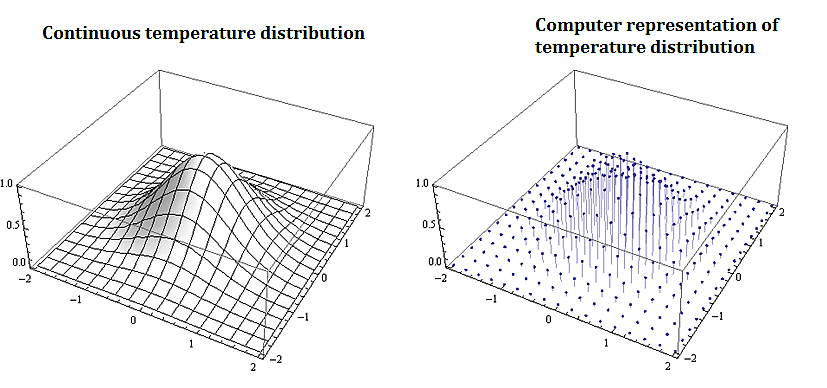
2.3.2. Applications to Information Technology and Computer Science
Discrete mathematics is needed for computer science as information and data is stored digitally. Digitally represented data is inherently discrete and is processed using discrete methods. For example a course grid discrete representation of the 2-d temperature distribution from the plate above could be:
\( \left(\begin{matrix}1&1&1\\2&4&8\\3&9&27\\4&16&64\\5&25&125\\\end{matrix}\right) \)
A voter registry may have voters in a database accessible from a list:
\( \left(\begin{matrix}John\ Smith\\Raheem\ Johnson\\.\\.\\.\\Sarah\ Muller\\\end{matrix}\right) \)
Which may need to be accessed and sorted, say geographically or alphabetically.
2.3.3. Applications to Data Science
Data science solutions to many problems use machine learning algorithms that are inherently discrete in nature. The information that needs processing is discrete, as are the basic problems in data science such as classification or clustering problems. In particular
-
Information consisting of data sets is represented using various data structures including graphical structures such as trees. Data science methods and algorithms involve procedures that manipulate these graphical structures to, for example, networks, classification trees, and decision trees.
-
Classification problems are discrete in nature. Classifying tumors as malignant or as benign involves trying to predict if a variable \(Y\) that we can think of as taking on two values either \(0\) or \(1\) either malignant or benign. There are various algorithms used in classification problems, such as the binary tumor classification, including methods from probability.
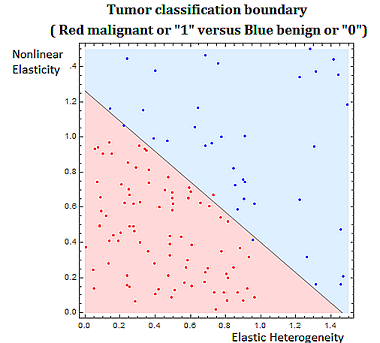
2.3.4. Applications to Engineering
Digital signal processing involves taking a video, audio, or other signal like temperature, pressure, position and velocity, which is continuous, digitizing it and then processing the digital signal mathematically.

2.3.5. Applications of Combinatorics
Combinatorics involves in part the study of counting the number of objects, satisfying a specified condition, from sets of variable size. Enumeration and combinatorics is important in many areas and examples including:
-
Calculating the number of steps an algorithm needs to process a data set of variable size \(𝑛\). This problem is called the computational cost of the algorithm as a function of \(𝑛\).
-
Calculating the possible number of codes in a cryptographic code system
2.3.6. Applications of Graph Theory
Graph theory, which is the study of structures constructed with nodes and the edges joining them, has applications in many fields including,
-
Chemistry - representing molecular bonding and structure
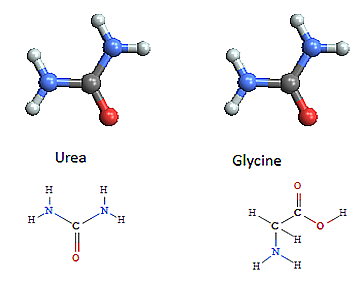
-
Information technology and computer science - ranking pages on the internet, with pages considered as nodes and page links as edges.

-
Industrial engineering and network optimization
-
Traffic routes (computer, internet, air, highway, subway systems) can be represented with stations as nodes and connections as edges.
-
Often we are interested in finding an optimal path in a network such as in the following example, finding the shortest tour over a series of towns on a map.
-
An example of the shortest tour problem, is shown below, using a software solution.

2.3.7. Applications of Probability and Statistics
Many probability assignments are based on counting and combinatorial methods.
-
If we assume that the likelihood of rain is the same on any day in the month of September, we might be interested in the probability that it rains on \(0\) days, it rains on exactly \(1\) day, exactly \(2\) days, etc. Such probability assignments are called discrete distributions, by contrast with continuous distributions like the bell curve.
-
Also probability and statistical techniques are often used in data science. The binary classification problem, of say classifying a tumor as malignant or benign, uses a statistical modeling technique, called regression, specifically logistic regression to determine the strength of the relationship between the independent variable, and dependent heterogeneity variable. In the tumor grading example the independent variable would be \((x_1,x_2 )\) (elastic heterogeneity, nonlinear elasticity), and the dependent variable would be \(Y\), classified as \(0\), or \(1\), (malignant or benign).
2.3.8. Applications to Social Sciences
Discrete mathematical techniques are important in understanding and analyzing social networks including social media networks.
The mathematics of voting is a thriving area of study, including mathematically analyzing the gerrymandering of congressional districts to favor and/or disfavor competing political parties. The following example illustrates some of the fundamental ideas related to gerrymandering.
3. Counting: Arithmetic Techniques
This chapter was last updated on September 3, 2024
Contents locked until 11:59 p.m. Pacific Standard Time on December 20, 2024.
Many of us learned how to count when we were young children. We may have counted up to 10 on our fingers, or up to 20 on our fingers and toes, but we probably never counted up to much more than 100. However, many problems in computer science or mathematics require that we count the number of elements of sets that contain millions or billions of elements, or even more.
This chapter introduces techniques for counting the number of elements of a set. These techniques can be used quickly and efficiently no matter the size of the set.
3.1. Some Foundational Counting Principles
Each of the four arithmetic operations corresponds to a rule we can use to count quickly.
3.1.1. The Sum Rule
The sum rule, also called the addition principle, describes the number of possible choices of one element from a union of two sets that share no common elements.
This is called the sum rule for counting because it involves adding to find a total. The sum rule can also be extended to more than two sets, as long as every pair of the sets have no elements in common.
3.1.2. The Subtraction Rule
The subtraction rule describes the number of possible choices of one element from a union of two sets that do share one or more common elements.
The subtraction rule is a special case of the inclusion-exclusion principle that involves only two sets. The inclusion-exclusion principle is discussed in more detail in the Set Theory and Proofs: Mathematical Induction chapters.
Video Example
3.1.3. The Product Rule
To find the total number of outcomes for two or more successive events where both events must occur, multiply the number of outcomes for each event together. For instance, if you want to find the number of outcomes possible when you roll a die and toss a coin, you could use the product rule. It is important to note that the events must be independent, meaning one doesn’t effect the other.
The product rule also called the multiplication principle.
Video Example
The following video example features Dr. Joshua Roberts, Associate Professor of Mathematics at Georgia Gwinnett College.
3.1.4. The Division Rule
This rule is used when there are \(n\) ways to complete a procedure, but for each of those ways is equivalent to \(d\) ways (including the way itself.)
The next example uses both the product and division rules.
3.2. The Pigeonhole Principle
A suprising number of counting problems can be solved with the so-called pigeonhole principle.
Click here to see a photoshopped image that illustrates this principle.
3.3. Exercises
-
There are 67 mathematics majors and 124 computer science majors at a college. There is no student who is both a mathematics major and a computer science major.
-
In how many ways can two representatives be picked so that one is a mathematics major and one is a computer science major?
-
In how many ways can one representative be picked who is either a mathematics major or a computer science major?
-
-
A multiple-choice test contains 20 questions, and each question has four choices.
-
In how many ways can a student answer all of the questions on the test if each question must be answered?
-
In how many ways can a student answer all of the questions if the student is allowed to not answer one or more questions?
-
-
How many different three-letter initials, using uppercase English letters, are there?
-
How many different three-letter initials, using uppercase English letters, end with "R"?
-
How many bit strings are there of length five?
-
How many bit strings are there of length five that begin and end with 1?
-
How many bit strings are there of length less than \(n\), where \(n\) is a positive integer, that start and end with 1?
-
How many license plates can be made using three digits followed by four uppercase English letters if:
-
Digits and letters can be repeated?
-
Digits and letters cannot be repeated?
-
-
Each student in a Discrete Mathematics class is a mathematics major, a computer science major, or a double major in both mathematics and computer science. If the class has 5 mathematics majors (including double majors), 23 computer science majors (including double majors), and 7 double majors, how many students are in the class?
-
Suppose a computer system requires a password of length no less than 7 and no more than 10 characters, and each character must be an English lowercase letter, an English uppercase letter, a digit, or one of six special characters (*, >, <, !, +, =).
-
How many different passwords are available?
-
Suppose a hacker can check a potential password once every nanosecond (1 nanosecond is \(1 \times 10^{-9}\) seconds). How long will it take the hacker to check every potential password?
-
-
Suppose that there are 29 students in a class, all of whose last names use only English letters. Explain why at least 2 students in the class have last names that begin with the same letter.
-
Show that in any set of 5 integers, there are at least two of them that have the same remainder when divided by 4.
-
A bag contains 8 red balls and 7 blue balls.
-
How many balls must be chosen to be sure of choosing 3 of the same color?
-
How many must be chosen to be sure of choosing 3 red balls?
-
-
Someone cleaning out their attic finds a box containing 12 rock CDs and 12 country CDs. What is the minimum number of CDs they can take out to guarantee at least one of each type?
-
Give an argument that there are at least two people in California with the same number of hairs on their head.
4. Number Bases
This chapter was last updated on September 4, 2024.
Contents locked until 11:59 p.m. Pacific Standard Time on December 20, 2024.
It’s likely that you learned how to represent positive integers using the base-ten place-value system when you were young. This system uses ten symbols, the Hindu-Arabic numerals ‘0’, ‘1’, ‘2’, ‘3’, ‘4’, ‘5’, ‘6’, ‘7’, ‘8’, and ‘9’, to represent any natural number.
You may know that computers use base-two (binary) instead of base-ten (decimal), but what exactly does that mean? Computers store and manipulate data using sequences of bits (‘0’ and ‘1’), so it often is much more natural to express numbers in base-two instead of base-ten.
In this chapter, you will learn how to represent natural numbers using place-value systems with bases other than ten.
4.1. Numbers, Numerals, and Digits
In everyday life, it is common to treat numbers and numerals as if they are the same. However, it is important in this chapter to distinguish these concepts.
-
A number is an abstract idea or mental concept of a count, a measure, a rank in an ordering, etc..
-
A numeral is a word, phrase, symbol, or string of symbols that is used to represent a number.
-
A digit is a single symbol that represents a number. A digit is a numeral, but multiple digits can be combined to create other numerals. For example, each of the ten Hindu-Arabic numerals is a digit that represents a natural number that is less than ten, and multiple Hindu-Arabic numerals can be combined to create numerals that represent numbers that are greater than or equal to ten.
NOTE: The word "digit" comes from the Latin word digitus which means "finger" or "toe."
In the same way that we can use multiple words to represent a single number, so can we use a place-value numeral system with a positive integer base b that is different than ten to represent a number.
However, It is often useful to represent natural numbers using a different number base, such as binary (base-two), octal (base-eight), or hexadecimal (base-sixteen). As you may already know, computer arithmetic is based on binary, which is base-two; you can develop algorithms that are much more effective and efficient when this is kept in mind!
4.2. Review Of The Base-Ten Place Value System
It’s likely that everything you are about to read in this section is knowledge you’ve had for many years. The purpose of stating everything so explicitly is to provide an example you can compare with place-value systems that use other bases.
A base-ten numeral is a string formed from one or more digits (i.e., Hindu-Arabic numerals.)
-
The string is read from left-to-right.
-
Each digit in the string represents a multiple of a power of the base, ten, depending on the its position in the string.
-
The rightmost place represents a multiple of 1 (which is ten raised to the power zero) and each of the other places represents a multiple of a power of ten that is one greater than the power of ten represented by the place to its right.
-
Notice that the base itself, the number ten, is represented by the string "10" in this place-value system. The string "10" represents the number described by the phrase "1 ten plus 0 ones".
-
As an example, the string "101" represents the number described by the phrase "1 hundred plus 0 tens, plus 1 ones," where 1 hundred is the same as ten tens. That is, \[ 101 = 1 \cdot 10 \cdot 10 + 0 \cdot 10 + 1 \cdot 1 \] The expression on the right-hand side of the previous equation is referred to as expanded form in school-level mathematics.
NOTE: The Hindu-Arabic numerals evolved from earlier Brahmi versions. You can look at the image at this web page which shows a few steps in this evolution. Also, you can learn more about the history of the Hindu-Arabic numerals from the links in the "Notes" and "References" sections of this Wikipedia page.
4.2.1. An Algorithm That Computes The Digits Of A Base-Ten Numeral
In this subsection, an algorithm is presented for computing the digits in the expanded form of a base-ten numeral of the natural number \(n.\) This may seem to be a complicated way to do something very simple since we could just read off the digits, but the important thing to notice about this algorithm is that the role that ten plays can be played by any other positive integer constant greater than one! This means that this algorithm can be adapted to find the "digits" in the expanded form of a base-\(b\) numeral for the number \(n\) for any base \(b\) we choose.
-
Task: Given the natural number n, compute an array of natural numbers \(s = [ r_{0}, \, r_{1}, \, \ldots \, r_{k} \)] so that each of \(r_{0}, r_{1}, \ldots , r_{k}\) is represented by a single digit in base-10, and \[ n = r_{k} \cdot 10^{k} + \ldots + r_{1} \cdot 10^{1} + r_{0} \cdot 10^{0} \] where \(k\) is the greatest natural number such that \(10^{k} < n.\)
-
Input: The natural number \(n\)
-
Steps:
-
Set \(a\) equal to \(n\)
-
Set \(s\) to the empty array (We will append the values \(r_{0}, r_{1}, \ldots , r_{k}\) to the array \(s\) as we compute them)
-
Divide \(a\) by 10 to find natural numbers \(q\) and \(r\) such that both \(a = q \cdot 10 + r\) and \(0 \leq r < 10.\)
-
Append \(r\) to the end of array \(s.\)
-
If \(q \neq 0\)
-
set \(a\) equal to \(q\)
-
go to step 3
-
-
Return the sequence \(s.\)
-
-
Output: An array of natural numbers \(s = [ r_{0}, \, r_{1}, \, \ldots \, r_{k} \)] where each number is represented by a single digit, and \[ n = r_{k} \cdot 10^{k} + \ldots + r_{1} \cdot 10^{1} + r_{0} \cdot 10^{0}.\]
-
That is, we rewrite \(n\) as \(r_{0} + 10 \cdot (r_{1} + 10 \cdot (r_{2} + \ldots r_{k-1} + (10 \cdot (r_{k})) \ldots ))\)
4.3. The Base-Two Place Value System (Binary Notation)
Next, let’s describe the base-two (binary) place value system. You will see that much of what is done here can be achieved by simply replacing "ten" by "two" in what was described in the previous section.
A base-two numeral is a string formed from one or more digits (i.e., the binary digits or bits ‘0’ and ‘1’.)
-
The string is read from left-to-right.
-
Each digit in the string represents a multiple of a power of the base, two, depending on the its position in the string.
-
The rightmost place represents a multiple of 1 (which is two raised to the power zero) and each of the other places represents a multiple of a power of two that is one greater than the power of two represented by the place to its right.
-
Notice that the base itself, the number two, is represented by the string "10" in this place-value system. The string "10" represents the number described by the phrase "1 two plus 0 ones".
-
As an example, the string "101" represents the number described by the phrase "1 four plus 0 twos, plus 1 ones," where 1 four is the same as two twos. That is, \[ 101 = 1 \cdot 10 \cdot 10 + 0 \cdot 10 + 1 \cdot 1 \text{ (🤯: Wait… WHAT?!?) }\] Yes, this equation is correct in the base-two place value system! "10" is how the number two is represented in base-two notation!
As an analogy, the string "pie" signifies very different things in English (a baked dessert) and Spanish (a foot.) We must take care to know which language we are working with!
|
To avoid confusion, it is traditional to use notation to indicate that the strings "10" and "101" are not base-ten numerals. In this textbook, we will write base-two numerals between a pair of parentheses followed by a subscript indicating the base. The subscript is written as a base-ten numeral. For example, we could rewrite the previous equation as \[(101)_{2} = (1)_2 \cdot (10)_2 \cdot (10)_2 + (0)_2 \cdot (10)_2 + (1)_2 \cdot (1)_2 \] which translates into base-ten as \(5 = 1 \cdot 2 \cdot 2 + 0 \cdot 2 + 1 \cdot 1.\) We can also write \(5 = (101)_2\) which is a way of saying that the base-ten numeral and the base-two numeral signify the same number. |
The reason we use base-ten numerals as the subscripts on numerals in other bases is because base-ten is so dominant: It is the "privileged" base, so we need to indicate when a different base is being used… and we don’t need to use the parentheses or subscripts if we are already working in base-ten.
|
Also, the use of notation like the parentheses and subscript is not necessary if it is clear from the context that a numeral is not a base-ten numeral. For example, \[ \text{chmod 755 hello.txt} \] is a Unix/Linux command that changes the file permission bits (read, write, execute) of the file "hello.txt" for the file’s owner, the file’s group, and any other user. In this example, the string "755" is not a base-10 numeral, but is in octal (base-eight). Octal will be discussed later in the chapter. No subscript is used in the Unix/Linux command because it is natural to an experienced user of that operating system to use octal in the context. Also, we can omit the parentheses and subscripts if we want to tell a couple of "jokes:" |
You are ready to convert base-ten numerals to base-two now.
4.3.1. An Algorithm That Computes The Digits Of A Base-Two Numeral
In this subsection, an algorithm is presented for computing the digits in the expanded form of a base-two numeral of the natural number \(n.\) This algorithm has been adapted from the one stated for base-ten in the previous section. Notice that all numerals used in this algorithm are base-ten numerals unless otherwise indicated.
-
Task: Given the natural number n, compute an array of natural numbers \(s = [ r_{0}, \, r_{1}, \, \ldots \, r_{k} \)] so that each of \(r_{0}, r_{1}, \ldots , r_{k}\) is represented by a single digit in base-2, and \[ n = r_{k} \cdot 2^{k} + \ldots + r_{1} \cdot 2^{1} + r_{0} \cdot 2^{0} \] where \(k\) is the greatest natural number such that \(2^{k} < n.\)
-
Input: The natural number \(n\)
-
Steps:
-
Set \(a\) equal to \(n\)
-
Set \(s\) to the empty array (We will append the values \(r_{0}, r_{1}, \ldots , r_{k}\) to the array \(s\) as we compute them)
-
Divide \(a\) by 2 to find natural numbers \(q\) and \(r\) such that both \(a = q \cdot 2 + r\) and \(0 \leq r < 2.\)
-
Append \(r\) to the end of array \(s.\)
-
If \(q \neq 0\)
-
set \(a\) equal to \(q\)
-
go to step 3
-
-
Return the sequence \(s.\)
-
-
Output: An array of natural numbers \(s = [ r_{0}, \, r_{1}, \, \ldots \, r_{k} \)] where each number is represented by a single digit, and \[ n = r_{k} \cdot 2^{k} + \ldots + r_{1} \cdot 2^{1} + r_{0} \cdot 2^{0}.\]
-
That is, we rewrite \(n\) as \(r_{0} + 2 \cdot (r_{1} + 2 \cdot (r_{2} + \ldots r_{k-1} + (2 \cdot (r_{k})) \ldots ))\)
Here is a link to an alternate method of finding the base-two numeral for a number.
If you made it to this sentence without skipping any of the discussion above, congratulations! If you did skip some of the discussion, go back and try your best to understand what the algorithm in the previous example is computing: The array \(s\) holds the digits, in reverse order of the binary notation for the number \(n.\) Compare what is done in this algorithm to the one for base-ten in the previous section… they are computing the digits for a numeral, but in different bases. If you can understand this algorithm, you will likely understand the rest of the chapter.
4.4. The Base-\(b\) Place Value System
We can now describe the base-\(b\) place value system for any natural number \(b>1.\).
A base-\(b\) numeral is a string formed from one or more digits out of a set that contains \(b\) digits.
-
The string is read from left-to-right.
-
Each digit in the string represents a multiple of a power of the base, \(b,\) depending on the its position in the string.
-
The rightmost place represents a multiple of 1 (which is \(b\) raised to the power zero) and each of the other places represents a multiple of a power of \(b\) that is one greater than the power of \(b\) represented by the place to its right.
-
Notice that the base itself, the number \(b,\) is represented by the string "10" in the base-\(b\) place value system. The string "10" represents the number described by the phrase "1 \(b\) plus 0 ones".
-
As an example, the string "101" represents the number described by the phrase "1 b-_squared plus 0 _b, plus 1 ones." That is, \[ 101 = 1 \cdot 10 \cdot 10 + 0 \cdot 10 + 1 \cdot 1 \text{ (🤯: Again?!?) }\] Yes, this equation is correct, too, in the base-b place value system!
We can use a pair of parentheses followed by the subscript \(b\) to indicate the base, where \(b\) is written as a base-ten numeral. For example, we could rewrite the previous equation as \[(101)_{b} = (1)_b \cdot (10)_b \cdot (10)_b + (0)_b \cdot (10)_b + (1)_b \cdot (1)_b \] which translates into base-ten as \(b^2 + 1 = 1 \cdot b \cdot b + 0 \cdot b + 1 \cdot 1.\)
4.4.1. An Algorithm That Computes The Digits Of A Base-\(b\) Numeral
This is an adaptation of the algorithm presented earlier for base-two. Notice that all numerals used in this algorithm are base-ten numerals unless otherwise indicated.
-
Task: Given the natural number n, and positive integer constant \(b > 1\) compute an array of natural numbers \(s = [ r_{0}, \, r_{1}, \, \ldots \, r_{k} \)] so that each of \(r_{0}, r_{1}, \ldots , r_{k}\) is represented by a single digit in base-\(b\), and \[ n = r_{k} \cdot b^{k} + \ldots + r_{1} \cdot b^{1} + r_{0} \cdot b^{0} \] where \(k\) is the greatest natural number such that \(b^{k} < n.\)
-
Input: The natural number \(n\)
-
Steps:
-
Set \(a\) equal to \(n\)
-
Set \(s\) to the empty array (We will append the values \(r_{0}, r_{1}, \ldots , r_{k}\) to the array \(s\) as we compute them)
-
Divide \(a\) by \(b\) to find natural numbers \(q\) and \(r\) such that both \(a = q \cdot b + r\) and \(0 \leq r < b.\)
-
Append \(r\) to the end of array \(s.\)
-
If \(q \neq 0\)
-
set \(a\) equal to \(q\)
-
go to step 3
-
-
Return the sequence \(s.\)
-
-
Output: An array of natural numbers \(s = [ r_{0}, \, r_{1}, \, \ldots \, r_{k} \)] where each number is represented by a single digit, and \[ n = r_{k} \cdot b^{k} + \ldots + r_{1} \cdot b^{1} + r_{0} \cdot b^{0}.\]
-
That is, we rewrite \(n\) as \(r_{0} + b \cdot (r_{1} + b \cdot (r_{2} + \ldots r_{k-1} + (b \cdot (r_{k})) \ldots )).\) The result is the digits that allows us to write \(n\) as \((r_{k}\ldots r_{1}r_{0})_b\) in base-\(b\) notation.
4.4.2. Octal Notation (Base-8)
4.4.3. Hexadecimal Notation (Base-16)
4.4.4. A Theorem (To Be Proven Later)
We can summarize what the algorithm does as a mathematical theorem, though technically at this point, it’s only a conjecture, an educated guess based on a few cases that seem to indicate that the algorithm will always work. You will learn a technique that will prove the theorem by validating the algorithm for all choices of natural numbers \(n\) and \(b>1\) in the Proofs: Mathematical Induction chapter.
4.5. Converting From Base-\(b\) to Base-Ten
In this section we show how to rewrite a base-\(b\) numeral in base-ten.
The base-ten numeral of a positive integer is referred to as the decimal expansion.
Several common bases used in computer science are base \(2\), base \(8\), and base \(16\), which are referred to as binary, octal, and hexadecimal, respectively. Binary digits are often referred to as bits. Note that, when finding the hexadecimal expansion of a positive integer, in addition to the usual digits \(0\) through \(9,\) we require an additional 6 digits. We will represent these by the letters \(\mathrm{A}\) through \(\mathrm{F}\), where \((\mathrm{A})_{16} = 10,\) \((\mathrm{B})_{16} = 11,\) \((\mathrm{C})_{16} = 12,\) \((\mathrm{D})_{16} = 13,\) \((\mathrm{E})_{16} = 14,\) and \((\mathrm{F})_{16} = 15.\)
4.6. Base Conversion Among Binary, Octal, and Hexadecimal
One of the ways that octal (base-eight) and hexadecimal (base-sixteen) are used in computer science is to abbreviate long bitstrings. The following examples will show how this is done.
Suppose we want to convert the positive integer \(n\) from hexadecimal to binary. One method would be to first convert \(n\) from hexadecimal to decimal, and then convert the result from decimal to binary. However, we can also take advantage of the fact that \(2^4 = 16.\) This implies that we can express each hexadecimal digit of \((n)_{16}\) uniquely as a block of 4 bits as follows:
We then concatenate our blocks, removing any leading zeros if necessary.
To convert \(n\) from binary to hexadecimal, we simply break up \((n)_2\) into blocks of 4 binary digits, adding a suitable number of leading zeros if necessary. We convert each block of 4 bits to hexadecimal digits and concatenate our results, removing any leading zeros if necessary.
A similar method can be used to convert between octal and binary. We can take advantage of the fact that \(2^3 = 8.\) This implies that we can express each octal digit of \((n)_{8}\) uniquely as a block of 3 bits as follows:
We then concatenate blocks, removing any leading zeros if necessary.
Also, the following table can be used to covert quickly between decimal, hexadecimal, octal, and binary in a similar way.
Conversion table for different bases
Decimal |
0 |
1 |
2 |
3 |
4 |
5 |
6 |
7 |
8 |
9 |
10 |
11 |
12 |
13 |
14 |
15 |
Hexadecimal |
0 |
1 |
2 |
3 |
4 |
5 |
6 |
7 |
8 |
9 |
A |
B |
C |
D |
E |
F |
Octal |
0 |
1 |
2 |
3 |
4 |
5 |
6 |
7 |
10 |
11 |
12 |
13 |
14 |
15 |
16 |
17 |
Binary |
0 |
1 |
10 |
11 |
100 |
101 |
110 |
111 |
1000 |
1001 |
1010 |
1011 |
1100 |
1101 |
1110 |
1111 |
4.7. Exercises
-
Convert to decimal (base 10)
-
\((10262)_7\)
-
\((30A8)_{16}\)
-
\((1000010001100)_2\)
-
\(({12307)}_{60}\)
-
-
Convert \(\left(2039\right)_{10}\) from decimal (base 10) to
-
base 7
-
binary
-
hexadecimal (base 16)
-
octal (base 8)
-
-
Convert \(\left(2599\right)_{10}\) from decimal to
-
base 5
-
binary
-
hexadecimal
-
base 3
-
-
Convert the following hexadecimal numerals to binary numerals
-
\(\left(6F203\right)_{16}\)
-
\(\left(3FA20C45\right)_{16}\)
-
\(\left(FACE\right)_{16}\)
-
-
Convert the following binary numerals to hexadecimal numerals
-
\(\left(1111100111010101101\right)_2\)
-
\(\left(\ 10001111101011\right)_2\)
-
\(\left(1100101011111110\right)_2\)
-
5. Counting: Permutations and Combinations
This chapter was last updated on September 12, 2024.
Contents locked until 11:59 p.m. Pacific Standard Time on December 20, 2024.
Many problems can be solved by counting the number of possible outcomes when choosing \(r\) elements from a set that contains \(n\) elements, with no repetition allowed (that is, each element can only be counted once). To be clear, this assumes that \(r\) and \(n\) are natural numbers and \(r \leq n.\)
Some of these problems involve choosing an ordered sequence of \(r\) elements while other problems involve choosing a subset of \(r\) elements.
This chapter presents techniques for doing this type of counting. These techniques are built on the ones you studied in the Counting: Arithmetic Techniques chapter.
5.1. The Factorial Of A Number
The factorial is a function defined for all natural numbers as described below.
5.2. Permutations
A permutation of a set of elements is an ordered arrangement of the elements without repetition of elements. A permutation may involve every element of the set, or only some of the elements of the set. That is, a permutation is a sequence of elements from the set, where no element can appear more than once in the sequence.
Note: If you studied outside the USA, you may have learned that a permutation must involve every element of the set, and that the term variation is used when the arrangment involves only some (but not all) of the elements of the set. In this textbook, all of these are called permutations.
Consider the last four uppercase English letters \(W, X, Y, Z\).
-
\(WXYZ, XWYZ, WXZY\) are permutations of the letters taken four at a time
-
\(XZW, WXY, WXZ\) are permutations of the letters taken three at a time
-
\(WX, WY, ZX\) are permutations of the letters taken two at a time
Note: To be more formal, the sequences above could be written as tuples of the form \((W, X, Y, Z),\) \((X, W, Y, Z),\) \((W, X, Z, Y),\) and so on, but the notation used is simpler without the extra symbolic clutter of parentheses and commas.
Notice that no letter is repeated in a permutation.
How can you count all the possible permutations of a set? For small sets like the set of the last four uppercase English letters, you could list all the possible permutations of \(W, X, Y, Z\) to determine that there are 24 permutations of the letters taken four at a time, 24 permutations of the letters taken three at a time, and 6 permutations of the letters taken three at a time. But what if you wanted to find all the possible permutations of all twenty six uppercase English letters \(A, B, \ldots , W, X, Y, Z\)? It would be very time consuming to write out all possible permutations of, say, the twenty six uppercase English letters taken twenty one at a time, let alone all the other possible permutations. We will develop a technique for doing this kind of counting now.
Suppose you have a set that contains \(n\) elements and want to construct a \(2\)-permutation of the elements. There are \(n\) possible choices for the first element, and once that element is chosen, there are \(n-1\) possible choices for the second element. The product rule lets you conclude that there are \(n(n-1)\) ways to choose the two elements, taking into account that the order of the choices matters.
Now we can generalize this argument, informally: Suppose you have a set that contains \(n\) elements and want to construct an \(r\)-permutation, where \(r \le n.\) There are \(n\) possible choices for the first element, \(n-1\) possible choices for the second element, and so on, until we have \(n-(r-1)\) possible choices for the \(r\text{th}\) element. Apply the product rule repeatedly to conclude that there are \( n(n-1)\cdots (n-r+1)\) \(r\)-permutations of the \(n\) elements.
The process in the previous paragraph can also be viewed recursively. Suppose you have a set that contains \(n\) elements and want to construct an \(r\)-permutation, where \(r \le n.\) There are \(n\) possible choices for the first element, and the product rule let’s us conclude that the number of \(r\)-permutations of the \(n\) elements, \(P(n,r),\) is the product of \(n\) and \(P(n-1,r-1).\) Noticing that \(P(n-r,0) = 1\) lets us draw the same conclusion as in the previous paragraph: There are \(P(n,r) = n \cdot \left((n-1)\cdots (n-r+1) \right)\) permutations of \(n\) elements taken \(r\) at a time.
Video Example
The following video example features Dr. Joshua Roberts, Associate Professor of Mathematics at Georgia Gwinnett College.
Here is another way to think about counting the number of permutations of \(n\) elements taken \(r\) at a time: Imagine writing down all possible permutations of \(n\) elements taken \(n\) at a time, that is all possible ordered arrangements of all \(n\) elements. Notice that if we only care about the first \(r\) elements in the list, then there are \(n-r\) elements at the end of the list that we can rearrange in any of \((n-r)!\) ways without changing the order of the the first \(r\) elements. Now apply the division rule from the Counting: Arithmetic Techniques chapter: We have a procedure, ordering all \(n\) elements, that can be completed in \(n!\) possible ways, but for each way of completing this procedure there are \((n-r)!\) possible ways with the same outcome for ordering the first \(r\) elements. The division rule lets you conclude that there are \(\frac{n!}{(n-r)!}\) ways to order the first \(r\) elements.
Video Example
The following video example features Dr. Joshua Roberts, Associate Professor of Mathematics at Georgia Gwinnett College.
5.3. Combinations
A selection of elements from a set of \(n\) elements where order of selection does not matter is called a combination. Notice that each combination corresponds to a subset of the set of \(n\) elements.
Consider the letters \(W, X, Y, Z\) and choose three at a time where the order does not matter. In this case we are selecting a subset of size three instead of a sequence of length three. The sets \(\{ W, X, Y \}\) and \(\{ X, Y, W \}\) are just two ways of describing the same set since the order in which elements of a set are listed does not matter.
-
There are four possible ways to choose three letters without regard to order: \(\{ W, X, Y \}\), \(\{ W, X, Z \}\), \(\{ W, Y, Z \}\), and \(\{ X, Y, Z \}\).
-
There are six possible ways to choose three letters without regard to order: \(\{ W, X \}\), \(\{ W, Y \}\), \(\{ W, Z \}\), \(\{ X, Y \}\), \(\{ X, Z \}\), and \(\{ Y, Z \}\).
-
There are four possible ways to choose one letter (without regard to order): \(\{ Z \}\), \(\{ Y \}\), \(\{ X \}\), and \(\{ W \}\). (Keep reading to find out why this "reversed" ordering of the subsets was used.)
This shows that there are 4 combinations of 4 elements taken 3 at a time, 6 combinations of 4 elements taken 2 at a time, and 4 combinations of 4 elements taken 1 at a time.
Next, notice that every \(r\)-combination corresponds to \(P(r, r) = r!\) different \(r\)-permutations. That is, to select a \(r\)-permutation we could instead first select a \(r\)-combination without regard to order and then order the \(r\) elements.
As an example, suppose we have \(n\) elements and want to construct a \(3\)-permutation. We could instead first choose a \(3\)-combination of the elements. There are \(C(n,3)\) possible \(3\)-combinations. Once we have chosen a specific \(3\)-combination, we can reorder the 3 elements in \(P(3,3) = 3!\) ways. This argument shows that \(P(n,3) = C(n,3) \cdot P(3,3) = C(n,3) \cdot 3!\), so \(C(n,3) = \displaystyle \frac{P(n,3)}{3!}\).
We can generalize this argument for each natural number \(r \leq n\) to arrive at the next theoren.
Video Example
Video Example
5.3.1. Properties Of Combinations
RECOMMENDATION: The "Binomial" activity can replace this subsection.
In this subsection you will learn about some properties of \(C(n, r)\) and a famous "number triangle;" you will see that the values listed in the triangle coincide with the values of \(C(n,r).\)
Pascal’s Triangle
Consider the following number triangle. \[{\displaystyle {\begin{array}{c}1\\1\quad 1\\1\quad 2\quad 1\\1\quad 3\quad 3\quad 1\\1\quad 4\quad 6\quad 4\quad 1\\1\quad 5\quad 10\quad 10\quad 5\quad 1\\1\quad 6\quad 15\quad 20\quad 15\quad 6\quad 1\\1\quad 7\quad 21\quad 35\quad 35\quad 21\quad 7\quad 1\end{array}}}\]
We refer to the top row of this triangle as "row 0," and the left side of the triangle as "column 0" (so the columns are actually drawn diagonally.) Notice that each number that is in row 2 or lower (and not on one of the sides of the triangle) is the sum of the two numbers directly above it in the triangle. For example, in row 5, column 2 row, the number 10 is the sum of the numbers in row 4, column 1 (the number 4) and row 4, column 2 (the number 6.)
This number triangle is often called "Pascal’s Triangle" after the French mathematician Blaise Pascal who wrote about the triangle in the mid-1600’s A.D.. However, the number triangle was known for centuries before Pascal lived. You may also want to see the "History" section of this wikipedia pagefor additional information.
The Numbers in the Triangle Are The Values Of \(C(n,r)\)
Notice that \(C(0,0),\) \(C(1,0),\) and \(C(1,1)\) are all equal to 1. These numbers match the values in row 0 and row 1 of the triangle.
Now, consider an alternative way we can compute \(C(n+1,r).\) Imagine we have a set containing \(n+1\) elements, where one of the elements is "special" - in how many ways can we choose \(r\) of the elements? There are two cases: We can choose the "special" element and then choose \(r-1\) other elements from the remaining \(n\) elements, or we can ignore the "special" element and choose \(r\) elements from the remaining \(n\) elements.
As a specific example, suppose we want to choose 2 elements form the set of letters \(\{ J, K, L, M, N\}\). We could treat \(J\) as a special element. In the first case, we would always choose \(J\) and then choose 1 of the 4 remaining letters; there are \(C(4,1)\) ways to do this. In the second case, we never choose \(J\), and must choose two other letters; there are \(C(4,2)\) ways to do this. In all, there are \(C(5,2)\) ways to choose 2 letters from the set, and the sum rule from the Counting: Arithmetic Techniques chapter can be applied to show that \(C(5,2)\) must be equal to \(C(4,1) + C(4,2).\)
In the general case of combinations of \(n+1\) elements taken \(r\) at a time, we have the following theorem.
This theorem shows that the numbers in each row of the triangle are the same numbers we can compute as \(C(n,r).\) That is, since row 0 and row 1 contain the values for \(C(0,0),\) \(C(1,0),\) and \(C(1,1),\) row 2 must contain the values for \(C(2,0),\) \(C(2,1),\) and \(C(2,2),\) and row 3 must contain the values for \(C(3,0),\) \(C(3,1),\) \(C(3,2),\) and \(C(3,3).\) We can continue this pattern for all rows of the triangle. This is an informal proof that the number triangle is made up of the values of \(C(n,r)\) for all natural numbers \(r\) and \(n\) with \(r \leq n.\)
\(C(n,r) = C(n,n-r)\)
You may recall from an earlier example that there are \(C(4,3) = 4\) possible ways to choose three letters from the set \(\{ W, X, Y, Z \}\) and that there are \(C(4,1) = 4\) possible ways to choose one letter from the set \(\{ W, X, Y, Z \}.\) The equation \(C(4,3) = C(4,1)\) does not "just happen to be true" but in fact must be true: Each combination of 4 elements taken 3 at a time corresponds to a combination of 4 elements taken 1 at a time, and vice versa - we can choose 3 of the 4 elements by "throwing out" the 1 element we don’t want to keep. That is, we choose the 3-element subset we care about indirectly by instead choosing the 1-element we do not care about. There is a one-to-one correspondence between the subsets that contain 3 letters and the subsets that contain 1 letter: \[\{ W, X, Y \} \text{ corresponds to } \{ Z \}\] \[\{ W, X, Z \} \text{ corresponds to } \{ Y \}\] \[\{ W, Y, Z \} \text{ corresponds to } \{ X \}\] \[\{ X, Y, Z \} \text{ corresponds to } \{ W \}\]
In general, there is always a one-to-one correspondence between the combinations of \(n\) elements taken \(r\) at a time and the combinations of \(n\) elements taken \(n-r\) at a time: Choosing \(r\) elements for a subset corresponds to choosing the \(n-r\) elements to leave out of the subset. This is an informal proof of the following theorem.
Alternatively, this theorem can be proven algebraically using the formula \(C(n,r) = \frac{n!}{r!(n-r)!}.\)
5.4. The Binomial Theorem
An algebraic expression that is the product of a number and power of zero or more variables is called a term. Two terms are called like terms if the two terms have the exact same variables and those variables appear with the exact same exponents. For example, \(a,\) \(ab,\) \(5a,\) and \(3a^{2}\) are terms, and \(a\) and \(5a\) are like terms. Like terms can be added to make a new term, for example, \(a + 5a\) is \(6a\) where we’ve used the distributive property of multiplication over addition to write \[ a + 5a = 1a + 5a = (1+5)a = 6a \]
Now consider the product of two algebraic expressions \(a+b\) and \(x+y\) where the variables represent real numbers. We can rewrite \((a+b)(x+y)\) in an expanded form by using the distributive property of multiplication over addition: \[ (a+b)(x+y) = a(x+y) + b(x+y) = ax + ay + bx + by. \]
Another way to view this multiplication is as follows: You need to sum all the possible products you can form by choosing a first factor from the set \(\{ a, \, b \}\) and a second factor from the set \(\{ x, \, y \}.\) Apply the multiplication rule to compute that there must be \((2)(2) = 4\) possible products, namely, \(ax,\) \(ay,\) \(bx,\) and \(by.\) In this way, we can calculate the same result, \[ (a+b)(x+y) = ax + ay + bx + by. \]
In case both factors are \((a+b)\), we get \[ (a+b)(a+b) = a(a+b) + b(a+b) = aa + ab + ba + bb = a^{2} + 2ab + b^{2}. \]
Notice that the coefficients can be thought of as the number of ways to choose \(b\) for each term during the multiplication: \[ a^{2} + 2ab + b^{2} = C(2,0)a^{2} + C(2,1)ab + C(2,2)b^{2} = {2\choose0}a^{2} + {2\choose1}ab + {2\choose2}b^{2}. \]
Look at the next highest powers:
\begin{equation} \begin{aligned} (a+b) \left( a^{2} + 2ab + b^{2} \right) {} & = a \left( a^{2} + 2ab + b^{2} \right) + b \left( a^{2} + 2ab + b^{2} \right) \\ & = a^{3} + 2a^{2} b + ab^{2} + a^{2} b + 2ab^{2} + b^{3} \\ & = (1)a^{3} + (2+1) a^{2} b + (1+2) ab^{2} +(1) b^{3} \\ & = a^{3} + 3 a^{2} b + 3 ab^{2} + b^{3} \end{aligned} \end{equation}
\begin{equation} \begin{aligned} (a+b) \left( a^{3} + 3 a^{2} b + 3 ab^{2} + b^{3} \right) {} & = a \left( a^{3} + 3 a^{2} b + 3 ab^{2} + b^{3} \right) + b \left( a^{3} + 3 a^{2} b + 3 ab^{2} + b^{3} \right) \\ & = a^{4} + 3 a^{3} b + 3 a^{2} b^{2} + ab^{3} + a^{3} b + 3 a^{2} b^{2} + 3 ab^{3} + b^{4} \\ & = (1)a^{4} + (3 + 1) a^{3} b + (3 + 3) a^{2} b^{2} + (1 + 3) ab^{3} + (1)b^{4} \\ & = a^{4} + 4 a^{3} b + 6 a^{2} b^{2} + 4 ab^{3} + b^{4} \end{aligned} \end{equation}
We will prove later in the Proofs: Mathematical Induction chapter that \[ (a+b)^{n} = \sum\limits_{i=1}^{n} {n\choose i} a^{n-i} b^{i} \] for every natural number \(n.\)
5.5. Exercises
-
List all the permutations of \(\{1, 2, 3\}\).
-
How many permutations are there of the set \(\{1, a, 2, b, 3, c, 5\}\)?
-
Let \(A=\{a, b, c, d\}\)
-
List all the 3-permutations of \(A\).
-
List all the 3-combinations of \(A\).
-
-
Let \(A=\{a, b, c, d, e\}\)
-
List all the 2-permutations of \(A\).
-
List all the 2-combinations of \(A\).
-
-
Find the value of the following
-
\(P(5,2)\)
-
\(P(10,8)\)
-
\(P(14,10)\)
-
\(P(12,8)\)
-
\(C(5,2)\)
-
\(C(10,8)\)
-
\(C(14,10)\)
-
\(C(12,8)\)
-
-
How many bit strings of length 10 contain:
-
Exactly five 1s?
-
At most five 1s?
-
At least four 1s?
-
The same number of 0s and 1s?
-
-
How many permutations of the digits \(12345678\) contain:
-
The string 284?
-
The string 3581?
-
The string 21 and 57?
-
-
How many ways are there to choose 9 cards from a standard 52 card deck?
-
How many ways can you be dealt a pair in a 5 card hand (2 cards of the same rank and 3 cards of a different rank)?
-
How many ways can you be dealt a full house in a 5 card hand (2 cards of the same rank and 3 cards of the same rank)?
-
How many license plates consist of 4 letters followed by 3 digits if:
-
Repetition is allowed?
-
Repetition is not allowed?
-
-
Using \(C(n,r) = \displaystyle \frac{n!}{r!(n-r)!}\), evaluate the terms of this triangular table. Will you need the formula to extend the table to more rows?
\begin{array}{ccccccccccccc} &&&&&&&C(0,0)&&&&&&\\ &&&&&& C(1,0) && C(1,1) &&&&&\\ &&&&& C(2,0) && C(2,1) && C(2,2) &&&&\\ &&&& C(3,0) && C(3,1) && C(3,2) && C(3,3) &&&\\ &&& C(4,0) && C(4,1) && C(4,2) && C(4,3) && C(4,4) &&\\ \end{array}
6. Set Theory
This chapter was last updated on September 12, 2024.
Contents locked until 11:59 p.m. Pacific Standard Time on December 20, 2024.
Set theory, along with logic, is the foundation of mathematics in our time. In earlier eras, people tried to use arithmetic (e.g., counting and whole numbers) and geometry (e.g., measurement of lengths, areas, and volumes along with geometric constructions) as the foundations of all mathematics. However, over the last 3 centuries, mathematicians gained new understandings of issues with these traditional foundations which led them to seek a new, firmer foundation. For now, that firmer foundation uses set theory: The study of collections of objects and how those collections can be combined, associated, and themselves added to other collections.
6.1. Sets
A set is an unordered collection of objects, called elements or members. A set is said to contain its elements.
If \(x\) is an element of the set \(S,\) then we write \(x \in S\). If \(x\) is not an element of the set \(S\), then we write \(x \not\in S\). For example, if \(S\) is the set of names of states in the United States of America, then “New York” is an element of \(S\) and “Ontario” is not an element of \(S,\) that is \[ \text{“New York”} \in S \text{ and } \text{“Ontario”} \not\in S. \] As another example, if \(E\) is the set of even integers, then \(2 \in E\) and \(3 \not\in E.\)
6.1.1. Describing A Set: The Roster Method
One way of describing a set is the roster method: List all the elements of the set between curly braces. For example, \[A = \{1,-2,0,1,-3\} \] is the set whose elements are \(-3,\) \(-2,\) \(0,\) and \(1.\)
-
Notice that the set \(A\) contains exactly \(4\) elements, even though the element \(1\) appears twice in the roster - duplicate entries do not matter.
-
Also, the order of the elements in the list does not matter. That is, \(\{-3,-2,0,1 \}\) and \(\{0, 1,-2,-3\}\) are two more ways of describing the same set \(A.\)
|
A WARNING ABOUT THE PYTHON EXAMPLES INVOLVING SETS: The mathematical set \(A = \{1,-2,0,1,-3\}\) is a constant - you cannot change the set by removing elements or inserting new elements. However, Python objects of type set are mutable so it is possible to remove elements or insert new elements, as shown in the following code example. The mathematically correct implementation of sets in Python uses objects of type frozenset because objects of type frozenset are immutable, just like mathematical sets. But there are advantages to using type set instead of frozenset: The roster method notation can be used to initialize or print a Python set, but cannot be used with a Python frozenset: You must call the frozenset constructor to create and initialize a frozenset. The authors of the original “Discrete Math” chose to use Python sets instead of frozensets in the code examples; the author of this remix made the same choice. |
6.1.2. Describing A Set: Set Builder Notation
Another way of describing a set is the use of set builder notation. We write a set as \[\{x \in D : P(x)\}.\] This is the set of all elements \(x\) from a domain \(D\) that satisfy the predicate \(P(x).\) We can use either the colon \(:\) or the vertical bar \(|\) as the separator in this notation. For example, \(\{ x \in \mathbb{N} \, | \, x^{2} \leq 50 \}\) is the set of natural numbers that are less than \(\sqrt{50}.\)
Yet another way of describing a set is to use a function or an algebraic expression, as in \[\{ f(x) : x \in D \}.\]This is the set of all values \(f(x)\) for \(x\) in the domain \(D\). For example, \(\{ 2n : n \in \mathbb{N} \}\) is the set of the even natural numbers. Again, we can use either the colon \(:\) or the vertical bar \(|\) as the separator.
6.1.3. Describing A Set: Special Sets Of Numbers
You may already be familiar with the following sets of numbers, which are listed here for reference.
Other special sets will be defined as needed.
6.1.4. Describing A Set: Switching Between Representations
A set can usually be described in more than one way, as shown in the following example.
|
When there are too many elements in a set for us to be able to list each one, we often use ellipses (\(\dots\)) when the pattern is obvious. For example, we have \[\mathbb{Z} = \{\dots,-3,-2,-1,0,1,2,3,\dots\}.\] |
6.2. Equality Of Sets
We say that two sets are equal if and only if they contain the same elements. When \(A\) and \(B\) are equal sets, we write \(A = B\). When \(A\) and \(B\) are not equal sets, we write \(A \neq B\).
The three sets \(\{2,3,5,7\},\) \(\{5,2,7,3\},\) and \(\{x \in \mathbb{N} : x \text{ is prime and } x < 10 \}\) are equal sets because they contain the same elements. In fact, \(\{2,3,5,7\},\) \(\{5,2,7,3\},\) and \(\{x \in \mathbb{N} : x \text{ is prime and } x < 10 \}\) are really just three different descriptions of the same set, in the same way that
\(1 + 3,\) \(5 - 1,\) and \(2^{2}\) are three different descriptions of the same number, 4.
The extended equality \[\{2,3,5,7\} = \{5,2,7,3\} = \{x \in \mathbb{N} : x \text{ is prime and } x < 10 \}\] is a true statement for the same reason the extended equality \(1 + 3 = 5 - 1 = 2^{2}\) is a true statement.
Note: You may be used to using the equal sign "=" as if it means "simplifies to" in your previous math experience, but "=" actually means "represents the same thing as."
6.3. The Empty Set
Consider the set of all natural numbers whose square is equal to 2, described using set builder notation: \(\{x \in \mathbb{N} : x^2 = 2\}.\) If you use the roster method to list all the elements you will get the set \(\{ \}\) because there are no natural numbers whose square is equal to 2!
The set \(\{ \}\) is called the empty set, or the null set. The symbol \(\emptyset\) is used to represent the empty set, too, that is, \[ \emptyset = \{ \}. \]
|
It is important to note that \(\{\}\) and \(\emptyset\) are both ways to write the empty set. However, the mathematical set \(\{ \emptyset \}\) is not the empty set because it contains one element, namely the empty set. In general, the set \(A\) is not the same as the set \(\{ A \}.\) |
|
Python Tip: The mathematical set \(\{ \emptyset \}\) must be implemented as \(\{ \text{frozenset()} \}\), which is the Python set that contains the empty frozenset. In general, anytime we want to implement a mathematical set \(B\) as an element of another mathematical set \(A\) in Python, we need to implement \(B\) as a frozenset in order to be used as an element of the Python set \(A\). This is due to the fact that elements of Python sets must be hashable; further explanation is beyond the scope of this textbook. |
6.4. Subsets of a Set
Suppose \(A\) and \(B\) are two sets, and that every element \(x\) of the set \(A\) is also an element of set \(B.\) We say that \(A\) is a subset of a set \(B,\) and write \(A \subseteq B\). If a set \(C\) is not a subset of \(B,\) we write \(C \not\subseteq B\).
If \(A \subseteq B\) but \(B\) contains at least one element that is not in A, then \(A\) is called a proper subset of \(B\), denoted \(A \subset B\). That is, \(A\) is a proper subset of \(B\) if it is a subset of \(B\) but is not equal to \(B.\)
6.5. The Power Set of a Set
Given a set \(A,\) we can define a new set by collecting together all subsets of \(A\). This new set is called the power set of \(A.\) The power set of \(A\) is denoted by \(\mathcal{P}(A).\) That is, \[ \mathcal{P}(A) = \{ B \, | \, B \subseteq A \}. \] Notice that \(\mathcal{P}(A)\) is a set whose elements are themselves sets.
The empty set has only one subset, namely itself. Thus, we see that \[\mathcal{P}(\emptyset) = \{\emptyset\}.\]
We can also find the power set of a power set. For example, we have the following:
| \[\begin{split} \mathcal{P}(\{ 3 \}) &= \{\emptyset, \{ 3 \}\},\\ \\ \mathcal{P}(\mathcal{P}(\{ 3 \}) &= \mathcal{P}(\{\emptyset, \{ 3 \})\\ &= \{\emptyset, \{\emptyset\}, \{ \{ 3 \} \}, \{\emptyset, \{ 3 \}\}\}. \end{split}\] |
6.6. Cartesian Products
The Cartesian product of two sets \(A\) and \(B\) is the set of ordered pairs defined by,
\( A\times B=\{(a,b) \, | \, a\in A \text{ and } b\in B)\}\),
|
Cartesian products are created using ordered pairs, so if \(A\) and \(B\) are different sets, then \(A \times B\) is different from \(B \times A\). |
|
The Cartesian coordinate systems are Cartesian products. The two-dimensional \(xy\)-plane is represented by \(\mathbb{R}^2=\mathbb{R}\times \mathbb{R}=\{(x,y)|x,y\in \mathbb{R}\}\), and, the three-dimensional \(xyz\)-space are represented by \(\mathbb{R}^3=\mathbb{R}\times \mathbb{R}\times \mathbb{R}=\{(x,y,z)|x,y,z\in \mathbb{R}\}\) |
6.7. Cardinality Of Sets
Cardinality is the formalization of the idea of the count of the number of elements in a set.
In this section, we will prefer counting from 1 instead of 0. You will see below why this makes no difference.
6.7.1. Finite Sets
Set \(A\) is called a finite set if either
-
\(A\) is the empty set or
-
there is a one-to-one correspondence between \(A\) and the set \(\{ i \in \mathbb{N} \, | \, 0 < i \leq n \} = \{1, 2, \ldots , n \}\) for some positive integer \(n.\)
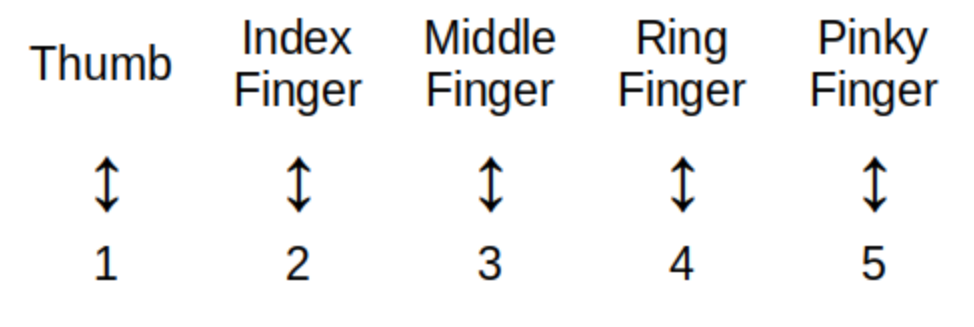
This definition of "finite set" may seem abstract, but it’s just a formal description of what is likely the way you learned to count when you were young: You matched objects with number names (that is, numerals) as shown in the image. |
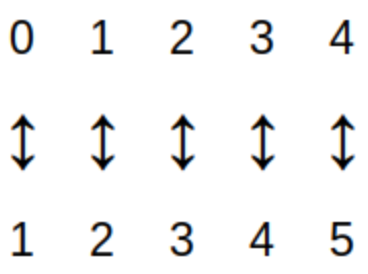
The cardinality of a finite set \(A,\) denoted by \(|A|,\) is
-
0 if \(A = \emptyset\) or
-
the value of \(n\) for which there is a one-to-one correspondence between \(A\) and \(\{1, 2, \ldots , n \}.\)
For a finite set \(A\) the cardinality \(|A|\) is just the number of elements in the set. The image shows that \(|\{0,1,2,3,4\}| = 5.\)
6.7.2. Infinite Sets
Set \(A\) is called an infinite set if it not a finite set. That is, \(A\) is not the empty set, and for every positive integer \(n\) there is no one-to-one correspondence between \(A\) and \(\{1, 2, \ldots , n \}.\)
Intuitively an infinite set \(A\) is at least as big as the set of positive integers. You may think that \(A\) must have the same size as the set of positive integers, but cardinality is a much more … "interesting" concept for infinite sets, as you will see.
First, we will say that two infinite sets \(A\) and \(B\) have the same cardinality if and only if there is a one-to-one correspondence between the two sets. As an example, the set of positive integers and the set of negative integers have the same cardinality since each nonzero integer \(n\) can be paired with its additive inverse, \(-n.\)
For finite sets, if \(A\) is a proper subset of \(B\) then it must be true that the cardinality of \(A\) is not the same as the cardinality of \(B.\) This fails spectacularly for infinite sets as the next few examples show.
So far, every infinite set presented has the same cardinality as \(\mathbb{N}.\)
Maybe all infinite sets have the same cardinality as \(\mathbb{N}?\) Nope!
The next theorem shows that \(\mathcal{P}(\mathbb{N})\) cannot have the same cardinality as \(\mathbb{N}\) so there must be at least two "infinities."
6.7.3. Countable and Uncountable Sets
Set \(A\) is called countable if
-
\(A\) is a finite set or
-
there is a one-to-one correspondence between \(A\) and \(\mathbb{N}.\) In this case, \(A\) is also called countably infinite.
Set \(A\) is called uncountable if it is not a countable set. That is, \(A\) is infinite and there is no one-to-one correspondence between \(A\) and \(\mathbb{N}.\)
Several examples of countably infinite sets were given in the examples in the preceding subsection:
-
The set of positive integers \(\{ i \in \mathbb{N} \, | \, i > 0 \},\)
-
the set of integers \(\mathbb{Z},\) and
-
the set of ordered pairs of natural numbers, \(\mathbb{N} × \mathbb{N}.\)
On the other hand, the theorem in the preceding subsection shows that \(\mathcal{P}(\mathbb{N})\) is an uncountable set.
Infinite Cardinal Numbers
In advanced mathematics, the concept of "infinite cardinal number" is developed and used to represent the sizes of infinite sets. Mathematicians use these infinite cardinal numbers to make sense of cardinalities like \(|\mathbb{N}|\) and \(|\mathcal{P}(\mathbb{N})|.\) It can be proven that \[|\mathbb{Q}| = |\mathbb{N}|\] \[|\mathbb{N}| < |\mathcal{P}(\mathbb{N})|\] \[|\mathcal{P}(\mathbb{N})| = |\mathbb{R}|\] and that \[\text{for any infinite set } A, |A| < |\mathcal{P}(A)|\] which shows that there must be infinitely-many infinite cardinal numbers.
6.8. Venn Diagrams
A Venn diagram, named after the English mathematician John Venn, consists of one or more circles, with each circular region representing a set. An example can be seen here.
We write the elements of a set within the circular region that represents the set; anything written outside the circular region is not an element of the set. If an element is written in the overlap of two or more regions, then it is an element of each of the sets.
The circles are often drawn inside a larger rectangle which represents a universal set \(U\) that we are focusing on. In the example linked above, the rectangle was omitted because every glyph was an element of at least one of the sets represented by a circular region, but if we introduced addition glyphs like ہ we would need to draw the rectangle because that glyph would need to be written outside all three circular regions.

In this textbook, a Venn diagram must show all the possible overlaps of the sets. This is consistent with Venn’s paper from 1880.
That is, you should NOT be able to answer the question "Is x an element of set A?" when x is written in the circular region for a different set, B.
In the image, the upper right example shows a Venn diagram because you could write x in the overlap of the two regions or you could write x in the the part of the region for B that is outside the circular region for A. The lower two diagrams are not Venn diagrams: In either one of those, if x is written in the region for set B, it must be true that x is not an element of A (on the lower left) or that x is an element of A (the example on the lower right). Diagrams like the lower two examples will be called Euler diagrams in this textbook.
Some sources use the term Venn diagram for all four of the examples shown in the image, but you should always assume when reading this textbook that the lower two are NOT Venn diagrams. Click here to see the light!
6.9. Set Operations
We can obtain new sets by performing operations on other sets. When performing set operations, it is often helpful to consider all of our sets as subsets of a universal set \(U.\) We can think of the universal set as the set of all of the objects under consideration.
We can represent set operations visually using Venn diagrams.
6.9.1. Union
The union of the sets \(A\) and \(B\) is the set containing those elements that are in \(A\) or \(B\) or both, and is denoted by \(A \cup B\). More formally, \[A \cup B = \{x \in U : x \in A \text{ or } x \in B\}.\]
Note that "or" is read here as the "inclusive or". We have the following Venn Diagram for \(A \cup B\):
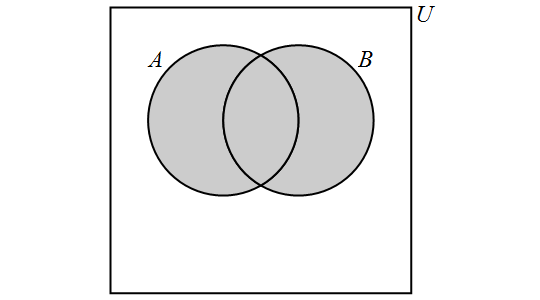
Note that, for any sets \(A\) and \(B,\) \[A \cup B = B \cup A.\]
6.9.2. Intersection
The intersection of the sets \(A\) and \(B\) is the set containing those elements that are in \(A\) and \(B\) and is denoted by \(A \cap B\). More formally, \[A \cap B = \{x \in U : x \in A \text{ and } x \in B\}.\]
We have the following Venn Diagram for \(A \cap B\):
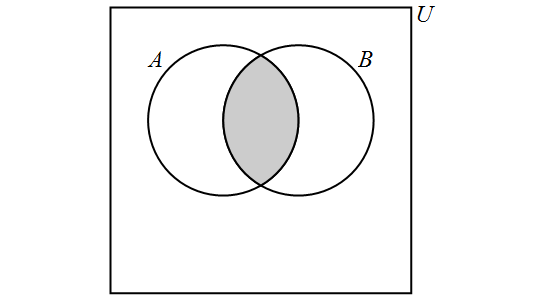
Note that, for any sets \(A\) and \(B,\) \[A \cap B = B \cap A.\] If it is the case that \(A \cap B = \emptyset,\) then we say that \(A\) and \(B\) are disjoint. In other words, two sets are disjoint if and only if they contain no elements in common.
6.9.3. Complement
The complement of a set \(A\) is the set of all elements in the universal set \(U\) which are not elements of \(A\) and is denoted by \(\overline{A}.\) More formally, \[\overline{A} = \{x \in U: x \not\in A\}.\] Note that other textbooks and internet sources may use different notation for the complement of \(A\), such as \(A'\) and \(A^{c}\), but these all stand for the same set, so that \(\overline{A} = A' = A^{c}\).
We have the following Venn Diagram for \(\overline{A}\):
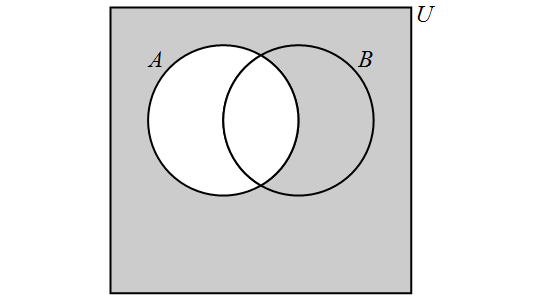
For any set \(A,\) \[ \overline{\overline{A}} = A \] \[ \overline{A} \cup A = U \] \[ \overline{A} \cap A = \emptyset. \]
6.9.4. Other Operations
The three operators complement, intersection, and union are the most commonly used to define subsets of a universal set. You will see why this is so later in the chapter.
However, there are some other operators you should be familiar with.
Difference
The difference of the sets \(A\) and \(B\) is the set containing those elements that are in \(A\) but not in \(B\) and is denoted by \(A \setminus B\). Set difference is also denoted by \(A - B\). More formally, \[A \setminus B = \{x \in U: x \in A \text{ and } x \not\in B\}.\]
We have the following Venn Diagram for \(A \setminus B\):
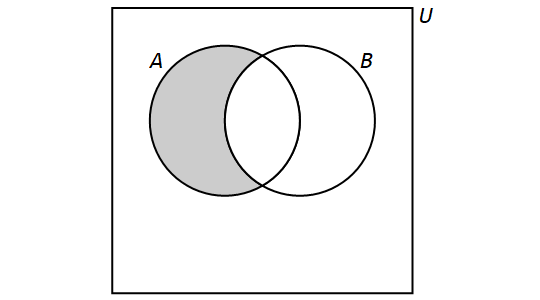
Note that, for any sets \(A\) and \(B\), if \(A \neq B,\) then \[A \setminus B \neq B \setminus A.\] However, if \(A = B,\) then \(A\setminus B = B \setminus A = \emptyset\).
Symmetric Difference
The symmetric difference of the sets \(A\) and \(B\) is the set containing those elements that are in \(A\) or \(B\) but not both \(A\) and \(B\). It is denoted by \(A \oplus B\) in this textbook, but other books and sources may use different notation such as \(A \Delta B\). More formally, \[A \oplus B = \{x \in U: (x \in A \text{ and } x \not\in B) \text{ or } (x \in B \text{ and } x \not\in A)\}.\]
We have the following Venn Diagram for \(A \oplus B\):

Note that, for any sets \(A\) and \(B,\) \[A \oplus B = B \oplus A.\]
6.9.5. Multiple Set Operations
We can also perform more than one set operation on a collection of sets. For example, let \(A,\) \(B,\) and \(C\) be sets and consider the following set: \[(A \setminus B) \cup (C \setminus B).\]This is the set that is obtained by taking the union of the sets \(A \setminus B\) and \(C \setminus B.\) We have \[(A \setminus B) \cup (B \setminus A) = \{x \in U: (x \in A \text{ and } x \not\in B) \text{ or } (x \in C \text{ and } x \not\in B)\}.\]
We have the following Venn Diagram for \((A \setminus B) \cup (C \setminus B)\):

Note that the Venn Diagram also represents \((A \cup C ) \setminus B\). In general, there are multiple ways to describe the result of multiple set operations.
Video Examples
The following two video examples feature Dr. Katherine Pinzon, Professor of Mathematics at Georgia Gwinnett College.
Video Example 1
Video Example 2
6.10. Set Identities
Here is a collection of additional properties of the operations on sets. Each of these can be verified by drawing two Venn diagrams, one that represents the left-hand side of the equation and another that represents the right-hand side of the equation and showing that the resulting shadings of the Venn diagrams are the same.
Note that it is traditional to focus on complement, union, and intersection as the three primary set operations because the other operations such as difference and symmetric difference can be written in terms of those three primary operations, for example, \(A \setminus B = A \cap \overline{B}\) and \(A \oplus B = (A \cap \overline{B}) \cup (\overline{A} \cap B)\).
Associative laws: \[ A ∪ (B ∪ C) = (A ∪ B) ∪ C \] \[ A ∩ (B ∩ C) = (A ∩ B) ∩ C \]
Distributive laws: \[ A ∪ (B ∩ C) = (A ∪ B) ∩(A ∪ C) \] \[ A ∩ (B ∪ C) = (A ∩ B) ∪ (A ∩ C) \]
De Morgan’s laws: \[ \overline{A \cup B} = \overline{A} \cap \overline{B} \] \[ \overline{A \cap B} = \overline{A} \cup \overline{B} \]
6.10.1. Operator Precedence (Order Of Operations)
To ensure that we can properly interpret an expression involving multiple set operations, we can either use parentheses or rely on operator precedence.
When an expression for sets involves parentheses, complementation, intersection, and union, we start by evaluating all expressions enclosed in parentheses from left to right, then all complementations from left to right, then all intersections from left to right, and finally all unions from left to right. (Set difference and symmetric difference were left out of this discussion because there does not seem to be a standard definition for where they fit in! But, as shown earlier, those two operations can be rewritten in terms of complementation, union, and intersection.)
For example, the expression \(\overline{A} \cup B \cap C\) represents the same set as \((\overline{A}) \cup (B \cap C)\). Parentheses must be used if you want to represent a different set such as \((\overline{A} \cup B) \cap C\).
This is the same way arithmetic expressions like \(-3 + 5 \cdot 2\) are evaluated: The value of \(-3 + 5 \cdot 2\) is \((-3) + (5 \cdot 2) = 7\), not \((-3 + 5) \cdot 2 = 4\).
6.11. Venn Diagrams, Partitions, and Bitstrings
A partition of a set \(U\) is a set of subsets of \(U\) such that each element \(x \in U\) is a member of exactly one of the subsets in the partition.
As an example you already know, one partition of the set of integers \(\mathbb{Z}\) is the set of subsets \[\{ \text{the set of even integers}, \text{the set of odd integers} \}\] Notice that every integer \(n\) belongs to exactly one of the two elements of this set.
As another example, for any subset \(A \subseteq U\) you have a partition of \(U\) into the 2 sets that are elements of \[\{ A,\,\overline{A} \}\] Note that each element of \(U\) must be in exactly one of the subsets \(A\) and \(\overline{A}\).
For two subsets \(A\) and \(B\) of a universal set \(U\), consider the Venn diagram of \(A\) and \(B\). Notice that, by considering all possible intersections of these two sets and their complements, \(U\) is partitioned into 4 subsets, namely, the 4 elements of \[\{ \overline{A} \cap \overline{B},\, \overline{A} \cap B,\,A \cap \overline{B},\,A \cap B \}\] We can refer to each of these 4 subsets by using bitstrings of length 2 as follows:
-
The leftmost bit is 1 if an element of the subset is an element of \(A\), and is 0 if an element of the subset is not an element of \(A\).
-
The rightmost bit is 1 if an element of the subset is an element of \(B\), and is 0 if an element of the subset is not an element of \(B\).
For example, in the following Venn diagram, the subset \(A \cap \overline{B}\) is labeled with the bitstring \(10\) because an element of \(A \cap \overline{B}\) is an element of \(A\) and not an element of \(B\).
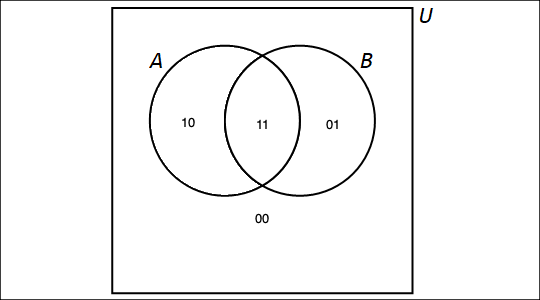
If you had instead three subsets \(A\), \(B\), and \(C\) of the universal set \(U,\) you could partition the universe \(U\) into 8 subsets. In detail, if you have an element \(x \in U\), either \(x \in A\) or \(x \not\in A\), and for each of those possibilities, either \(x \in B\) or \(x \not\in B\), and for each of those possibilities, either \(x \in C\) or \(x \not\in C\). We can apply (twice) the multiplication principle that was first mentioned in chapter 2 to show that there are \(2 \cdot 2 \cdot 2\) possible subsets determined by the Venn diagrams of the 3 sets \(A\), \(B\), and \(C\). Using bitstrings of length 3, we can label these 8 subsets as shown.
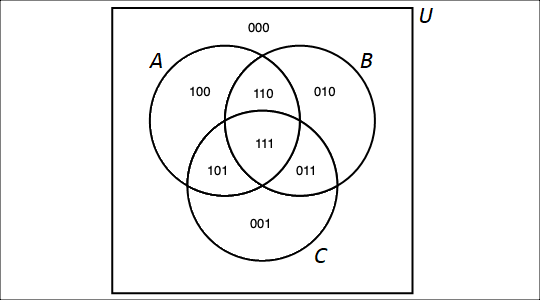
For an integer \(n > 3\), the Venn diagram is less useful for representing the partitioning of the universe created by \(n\) subsets, but we can still reason that there ought to be \(2^{n}\) subsets in the partition, where each of the subsets can be described by a unique bitstring of length \(n\) (We will be able give a formal mathematical proof of this for every positive integer \(n\) later in the textbook after we’ve discussed mathematical induction.)
6.11.1. Disjunctive Normal Form (Set Version)
Suppose you have three sets \(A\), \(B\), and \(C\), and have partitioned the universe \(U\) into the 8 subsets as discussed above. A subset of \(U\) that corresponds to any shading of the Venn diagram can be written as a union of intersections of three sets, with one set chosen from each of the pairs \(\{ A,\,\overline{A} \}\), \(\{ B,\,\overline{B} \}\), and \(\{ C,\,\overline{C} \}\).
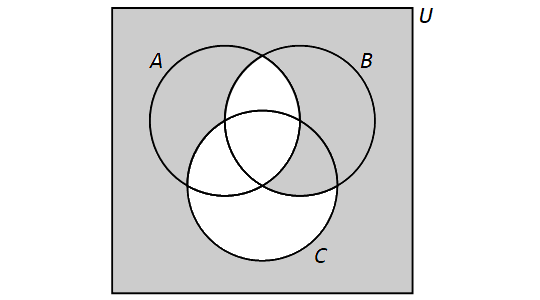
As an example, consider the set shown in the image, which has 4 of the 8 regions of the Venn diagram shaded:
-
\(\overline{A} \cap \overline{B} \cap \overline{C}\) which is the region outside of all three sets,
-
\(A \cap \overline{B} \cap \overline{C},\) the region in set \(A\) but in neither \(B\) nor \(C,\)
-
\(\overline{A} \cap B \cap \overline{C},\) the region in set \(B\) but in neither \(A\) nor \(C,\)
-
\(\overline{A} \cap B \cap C,\) the region in both \(B\) and \(C\) but not in \(A.\)
Write the union of these 4 subsets to create an expression that describes the entire shaded region. \[(\overline{A} \cap \overline{B} \cap \overline{C}) \cup (A \cap \overline{B} \cap \overline{C}) \cup (\overline{A} \cap B \cap \overline{C}) \cup (\overline{A} \cap B \cap C)\]
This type of expression is called a disjunctive normal form (or DNF) for the set that it represents. We will see an analog of these in a different context in the chapter on Logic.
The advantage of using the DNF is that you can write out an expression for the shaded subset using a simple algorithmic. The DNF may be neither the shortest possible expression nor the most easily understood expression for the shaded part of the Venn diagram, but the DNF is a correct expression for the shaded subset.
6.12. The Principle Of Inclusion-Exclusion (PIE)
In certain application problems, we want to compute the cardinality \(|A \cup B|\) of the union of two given finite sets \(A\) and \(B\). It is tempting to simply add \(|A|\) and \(|B|\), but as the Venn diagram below shows, each element of the intersection \(|A \cap B|\) will be counted twice, once for each bit that is \(1\), if we do so.

The correct relationship between \(|A \cup B|\), \(|A|\), and \(|B|\) is given by \[ |A \cup B| = |A| + |B| - |A \cap B|. \]
Another way to see that this is the correct relationship is to use the partition \(\{ \overline{A} \cap \overline{B},\, \overline{A} \cap B,\,A \cap \overline{B},\,A \cap B \}\) to write
\(| A | = | A \cap \overline{B} | + | A \cap B |\),
\(| B | = | \overline{A} \cap B | + | A \cap B |\), and
\(| A \cup B | = | A \cap \overline{B} | + | A \cap B | + | \overline{A} \cap B |\), so
\(| A | + | B | = | A \cap \overline{B} | + | A \cap B | + | \overline{A} \cap B | + | A \cap B | = | A \cup B | + | A \cap B |\).
If we want to compute the cardinality \(|A \cup B \cup C|\) of the union of three given finite sets \(A\), \(B\), and \(C\), we can again look at the Venn diagram of the partition of \(U\) into 8 sets to see that some of the intersections will be counted one, two, or three times, once for each bit that is \(1\).

We can derive the following formula in much that same way that we did above; in fact, we can just apply the formula we found for two sets to \(| (A \cup B) \cup C |\) and use some of the set identities to help simplify the formula. \[ |A \cup B \cup C| = |A| + |B| + |C| - |A \cap B| - |A \cap C| - |B \cap C| + |A \cap B \cap C|. \]
6.13. Exercises
Remixer’s Note: This section is taken from the original “Discrete Math” book with only minor changes.
-
Consider as universal set, the set of all \(26\), lowercase letters of the English alphabet, \(U=\{a,b,c,…,v,w,x,y,z\}\), and the sets \(A=\{a,b,c,d,e,f,g,h\}\), \(B=\{f,g,h,i,j,k\}\), and \(C=\{x,y,z\}\). For the sets given below:
-
List the sets below using roster form, and
-
Draw Venn Diagrams for each of the sets
-
\(A\cup B\)
-
\(A\cap B\)
-
\(A\cup C\)
-
\(A\cap C\)
-
\(A \setminus B\)
-
\(B \setminus A\)
-
\(A \setminus C\)
-
\(C \setminus A\)
-
\(A\cup C\)
-
\(A\cap C\)
-
\(\overline{A}\)
-
\(\overline{B}\)
-
\(\overline{C}\)
-
\(\overline{B} \cap \overline{C}\)
-
\( (\overline{A} \cap \overline{B}) \cup (\overline{B} \cap \overline{C})\)
-
-
-
Using Venn Diagrams, determine which of the following are equivalent
-
\(A \setminus (A \setminus B)),\)
\(A\cup B,\) and
\(A\cap B\)
-
\(A\cup \overline{A},\)
\(A\cap \overline{A},\)
\(U,\) and
\(\emptyset\)
-
\(\overline{A}\cap \overline{B}, \)
\(\overline{A\cap B},\)
\(\overline{A}\cup \overline{B},\) and
\(\overline{A\cup B}\)
-
\(A\cup (B\cap C),\)
\(A\cap (B\cup C),\)
\((A\cap B)\cup (A\cap C),\) and
\((A\cup B)\cap (A\cup C),\)
-
\(\overline{\overline{A}\cup(C \setminus B) }),\)
\(A\cap (B \cup \overline{C}),\) and
\(A \setminus (C \setminus B)\)
-
-
Write each of the following sets using set builder notation
-
\(\{\ldots, -9, -7, -5, -3, -2, -1, 1, 3, 5, 7, 9, \ldots \}\)
-
\(\{\ldots, -8, -6, -4, -2, 0, 2, 4, 6, 8, 10,\ \ldots \}\)
-
\(\{ 1, 2, 3, 4, 5, 6, 7, 8, 9, 10 \}\)
-
\(\left\{ 1,\frac{1}{2},\frac{1}{3},\frac{1}{4},\frac{1}{5},\ldots \right\}\)
-
\(\{0, 1, 4, 9, 16, 25, 36, 49, \ldots \}\)
-
\(\{\ldots,-10,-6, -2, 2, 6, 10, 14, 18, 22, \ldots \}\)
-
\(\{ 3, 9, 27, 81, 243,\ldots\}\)
-
\(\{ 1, 9, 25, 49, 81, \ldots \}\)
-
-
Write each of the following sets in roster form
-
\(\{x \in \mathbb{R} : |2x+5|=7\}\)
-
\(\{10n : n \in \mathbb{N}\}\)
-
\(\{10n : n \in \mathbb{Z}\}\)
-
\(\left\{2^n : n \in \mathbb{N}\right\}\)
-
\(\left\{2^n : n \in \mathbb{Z}\right\}\)
-
\(\left\{x \in \mathbb{R} : x^2=4\right\}\)
-
\(\left\{x \in \mathbb{R} : x^3=64\right\}\)
-
\(\left\{x \in \mathbb{Z} : x^2=5\right\}\)
-
\(\left\{x \in \mathbb{R} : x^2= -4\right\}\)
-
\(\left\{x \in \mathbb{Z} : |x-5|=3\right\}\)
-
\(\left\{3n+4 : n \in \mathbb{N}\right\}\)
-
\(\left\{3n+4 : n \in \mathbb{Z}\right\}\)
-
\(\left\{i^n : n \in\mathbb{N}\right\}\), where \(i\) is such that \(i^2=-1\) (the imaginary unit).
-
-
Consider the sets \(A=\{1, 3, 5, 7, 9, 11, 13, 15, 17\}\), \(B=\{2, 5, 7, 11\}\), and \(C=\{1, 2, 3\}\),
-
Determine the cardinalities of following sets,
-
\(|A|\)
-
\(|A\cup B|\)
-
\(|A\cap C|\)
-
\(|\mathcal{P}(A)|\)
-
\(|\mathcal{P}(B)|\)
-
\(|\mathcal{P}(C)|\)
-
-
Give the following power sets,
-
\(\mathcal{P}(B)\)
-
\(\mathcal{P}(C)\)
-
-
-
Determine the cardinalities of following sets,
-
\(\{n \in \mathbb{Z} : |n|\leq 10\}\)
-
\(\{A,B, \emptyset,\{2,5,6\}\}\)
-
\(\{\{A,B\},\{\},\{\{2,5,6\}\},\{\{2,5,6\},C\},\{A,B,C\}\}\)
-
\(\{\{\{A,B\},\emptyset,\{\{2,5,6\},C\},\{A,B,C\}\}\}\)
-
-
Consider the sets, \(B=\{0, 1\}\), \( S=\{spring, summer, fall, winter\}\), and \(C=\{ a, b, c, d,e\}\). For each of the following sets:
-
Determine the following Cartesian products.
-
Calculate the cardinality of each Cartesian product.
-
\(B \times S\)
-
\(S \times B\)
-
\(B \times C\)
-
\(C \times B\)
-
\(B \times B \times B \times B\)
-
\(S \times B \times B\)
-
-
-
Determine the following power sets,
-
\(\mathcal{P}(\{Alabama, Georgia, Florida, Louisiana\} )\)
-
\(\mathcal{P}(\emptyset )\)
-
\(\mathcal{P}(\{\emptyset\} )\)
-
\(\mathcal{P}(\{Alabama \} )\)
-
\(\mathcal{P}(\{Alabama, Georgia, Florida \} )\)
-
\(\mathcal{P}(\{\{Alabama, Georgia \}, \{Florida \} \} )\)
-
-
Write the shaded regions in each of the following Venn diagrams using set notation.

-
Determine if each of the following are true or false. Explain your reasoning.
-
\(\{7,4,6,2,11,3,5\}\subseteq \{1,2,3,4,5,6,7,8,9,10,11,12,13\}\)
-
\(\{1,2,3,4,5,6,7,8,9,10,11,12,13\}\subseteq \{7,4,6,2,11,3,5\}\)
-
\(\{7,4,6,2,11,3,5\}\subseteq \{7,4,6,2,11,3,5\}\)
-
\(\{3,8\}\nsubseteq \{7,4,6,2,11,3,5\}\)
-
\( \{3n+4 : n \in \mathbb{N}\} \nsubseteq \mathbb{Z}\)
-
\(\mathbb{N}\subseteq \mathbb{Z}\subseteq \mathbb{Q}\subseteq \mathbb{R}\)
-
\(\{x \in \mathbb{R} : |x|<3\}\subseteq \{x \in \mathbb{R} \, | \, |x|<5\}\)
-
\(\{x \in \mathbb{R} : |x|>3\}\subseteq \{x \in \mathbb{R} \, | \, |x|>5\}\)
-
7. Logic
This chapter was last updated on September 30, 2024.
Contents locked until 11:59 p.m. Pacific Standard Time on December 20, 2024.
Logic is the study of reasoning. Logic is used to create, analyze, and validate arguments, where an argument is a finite sequence of statements that ends with a conclusion based on inferences made from earlier statements in the argument.
Among the applications of logic to computer science are design of electronic circuits and validation of algorithms and programs.
7.1. Propositional Logic
A proposition is a statement that declares a fact that is either True or False (but not both!)
Propositional logic consists of a set of formal rules for combining propositions in order to derive new propositions.
A goal of propositional logic is to have a method for creating valid arguments that are sequences of propositions, where the correctness and validity of the argument is based solely on the propositions' truth values (True and False), ignoring the actual content of the propositions. Choosing to ignore the actual content of the propositions may seem strange at first, but compare this to doing algebra: You can write \(2 (x + 3 y) = 2x + 6y\) because it is correct and valid to distribute multiplication over addition - you can do the algebra and ignore the actual meaning/content (that is, the specific numerical values) that \(x\) and \(y\) stand for.
In propositional logic, it is traditional to use propositional variables such as p, q, and r to represent the possible assignments of truth values to propositions; often, the variables themselves are referred to as the propositions. Again, compare this to the algebraic example where you can treat \(x\) and \(y\) as numbers even though they are actually variables that stand for numbers.
What is the advantage of using symbols? A long time ago philosophers discovered that is easier to follow lines of reasoning by putting our thoughts into symbols. This was an important step in the eventual development of our modern technological society and our use of digital computers. Before computers can work, we have to put our thoughts into them! However, the English language is difficult and many different phrases can represent the same logical statements; translating statements from English sentences to symbols and back is a skill that needs lots of practice.
You can build compound propositions (also called "propositional functions") from simpler propositions. For example, in the preceding example, we introduced "if p then q" as a new proposition built from the propositional variables p and q. In the next section, you will see how we represent compound propositions using symbols.
7.2. Logical Operations and Truth Tables
In this section, compound propostions will be represented by using propositional variables and logical operator symbols (also called logical operations.) Once again, you can compare this to how numerical and algebraic relationships can be represented in symbols using algebraic expressions built with the usual arithmetic operator symbols with variables and numerals.
|
In Python, we use \(\texttt{Boolean}\) variables to represent propositions and define functions for each compound proposition. Each compound proposition can implemented using the \(\texttt{Boolean}\) operations \(\texttt{not}\), \(\texttt{and}\), and \(\texttt{or}\) discussed in the section Operators and Expressions in the chapter "Appendix: An Introduction to Python". |
A truth table can be used to display the truth values of a compound proposition that is built from propositional variables and logical operators. A truth table is created with rows representing all possible interpretations of the propositional variables, that is, all possible assignments of truth values to the propositional variables. Each column of a truth table displays the truth values for either one of the propositional variables or a compound proposition built up from propositional variables and/or simpler compound propositions. As an analogy, think of how a table can be used to display the numerical input and output values of a function represented by an algebraic expression.
The most commonly-used logical operators are described in the rest of this section.
7.2.1. Negation
"I am not an astronaut."
The negation of a proposition \(p\), denoted in mathematics by \(\neg p\) and
read as "not \(p\)", is the proposition
"It is not the case that \(p\)".
The proposition \(\neg p\) has the opposite truth value to \(p.\)
Other textbooks and sources may use \(\overline{p}\) or \(\sim \! p\) to represent \(\neg p.\)
| \(p\) | \(\neg p\) |
|---|---|
True |
False |
False |
True |
For example, the negation of the proposition "Today is Friday." would be
"It is not the case that today is Friday." or more succinctly "Today is not Friday."
For a proposition \(p,\) exactly one of \(p\) and \(\neg p\) is True and exactly one is False. Two propositions can be contrary (that is, they could not both be True) without being negations of each other: As an example, both of the propositions "Today is Friday." and "Today is Saturday." could be False, so "Today is Saturday." is not the negation of "Today is Friday."
Also, notice that the two propositions \(p\) and \(\neg (\neg p)\) must always have the same truth value.
| In the first few truth tables in this chapter, "True" and "False" are spelled out, but it is more often the case that these words are abbreviated to their first letters, "T" and "F" in truth tables. |
7.2.2. Conjunction
"I am a rock and I am an island."
Let \(p\) and \(q\) be propositions. The conjunction of \(p\) and \(q\), denoted in mathematics by \(p \land q\) and read as "\(p\) and \(q\)", is True when both \(p\) and \(q\) are True and is False otherwise.
| \(p\) | \(q\) | \(p \land q\) |
|---|---|---|
True |
True |
True |
True |
False |
False |
False |
True |
False |
False |
False |
False |
Notice that the two propositions \(p \land q\) and \(q \land p\) always have the same truth value.
7.2.3. Disjunction
"They studied hard or they are extremely bright."
Let \(p\) and \(q\) be propositions. The disjunction of \(p\) and \(q\), denoted in mathematics by \(p \lor q\) and read as "\(p\) or \(q\)", is True when at least one of \(p\) and \(q\) are True and is False otherwise.
| \(p\) | \(q\) | \(p \lor q\) |
|---|---|---|
True |
True |
True |
True |
False |
True |
False |
True |
True |
False |
False |
False |
Notice that the two propositions \(p \lor q\) and \(q \lor p\) always have the same truth value.
7.2.4. Conditional
"If you get a 100 on the final exam, then you earn an A in the class."
Let \(p\) and \(q\) be propositions. The conditional statement \(p \rightarrow q\), read as "if p then q", "p implies q", or, more formally, "the conditional with hypothesis p and conclusion q", is the proposition that is False when p is True and q is False, and True otherwise. The conditional statement \(p \rightarrow q\) is also called "the implication \(p \rightarrow q\)".
The conditional \(p \rightarrow q\) can also be denoted by \(p \Rightarrow q\) or \(p \implies q.\) In addition, there are many other ways to express the conditional \(p \rightarrow q\) in English, two of which are "p only if q" and "q if p".
| \(p\) | \(q\) | \(p \rightarrow q\) |
|---|---|---|
True |
True |
True |
True |
False |
False |
False |
True |
True |
False |
False |
True |
|
|
The Converse, Contrapositive and Inverse of a Conditional Statement
Given propositions p and q, we can form three additional compound propositions that are related to the conditional \(p \rightarrow q\):
-
\(q \rightarrow p\), called the converse of \(p \rightarrow q\)
-
\( \neg q \rightarrow \neg p\), called the contrapositive of \(p \rightarrow q\)
-
\( \neg p \rightarrow \neg q\), called the inverse of \(p \rightarrow q\)
The exteneded truth table for the conditional and the three related propositions is shown below.
| \(p\) | \(q\) | \(p \rightarrow q\) (conditional) | \(q \rightarrow p \) (converse) | \( \neg q \rightarrow \neg p\) (contrapositive) | \( \neg p \rightarrow \neg q\) (inverse) |
|---|---|---|---|---|---|
True |
True |
True |
True |
True |
True |
True |
False |
False |
True |
False |
True |
False |
True |
True |
False |
True |
False |
False |
False |
True |
True |
True |
True |
|
From the truth table it can be seen that
|
In the section on logically equivalent propositions we will discuss the bullet points in the preceding note in more detail.
We illustrate these four propositions with an example.
7.2.5. Biconditional
"It is raining outside if and only if it is a cloudy day."
Let \(p\) and \(q\) be propositions. The biconditional \(p \leftrightarrow q\), read as "p if and only if q", is the proposition that is True when p and q have the same truth value, and False otherwise. The biconditional is also called "the bi-implication". Note that \(p \leftrightarrow q\) can also be denoted by \(p \Leftrightarrow q\) or \(p \iff q.\)
| \(p\) | \(q\) | \(p \leftrightarrow q\) |
|---|---|---|
True |
True |
True |
True |
False |
False |
False |
True |
False |
False |
False |
True |
From the truth table it can be seen that the two propositions \(p \leftrightarrow q\) and \(q \leftrightarrow p\) always have the same truth value.
|
The biconditional \(p \leftrightarrow q\) is read as "p if and only if q" because it has the same truth table as the conjunction of the two conditionals "p if q" (that is, \(q \rightarrow p\)) and "p only if q" (that is, \(p \rightarrow q\)). |
It is important to contrast the conditional with the biconditional. Consider the conditional example "If you get a 100 on the final exam, then you earn an A in the class." This means that when you get a 100 on the final you also get an A in the class. The conditional represents a one-way contract: You earn an A in the class if you get a 100 on the final exam. There is nothing said about the result (the grade you earn in the class) if you do NOT meet the condition (get a 100 on the final exam).
As a biconditional the example would say "You get a 100 on the final exam if and only if you earn an A in the class." This becomes a two-way contract: You earn an A in the class if you get a 100 on the final, but you do not earn an A in the class if you do not get a 100 on the final.
7.2.6. Other Compound Propositions
The negation, disjunction, conjunction, conditional, and biconditional are the most commonly-used logical operators for forming compound propostions and will be the ones used throughout the rest of this chapter. However, there are at least three others you should know about.
Exclusive Disjunction
"I took either 2 Advil or 2 Tylenol."
Let \(p\) and \(q\) be propositions. The exclusive disjunction of \(p\) and \(q\) (also known as xor), denoted in mathematics by \(p \oplus q\), is True when exactly one of \(p\) and \(q\) are True and False otherwise.
| \(p\) | \(q\) | \(p \oplus q\) |
|---|---|---|
True |
True |
False |
True |
False |
True |
False |
True |
True |
False |
False |
False |
Notice that the two propositions \(p \oplus q\) and \(q \oplus p\) always have the same truth value.
The NAND and NOR Operators
The NAND and NOR operators correspond to two important digital logic gates used in electronic devices.
NAND
"A chimpanzee is not both an ape and a monkey."
Let \(p\) and \(q\) be propositions. In this textbook, the NAND of \(p\) and \(q\) is denoted by \(p \uparrow q\) and is False when both \(p\) and \(q\) are True and is True otherwise. That is, the NAND is the negation of \(p \land q.\)
| \(p\) | \(q\) | \(p \uparrow q\) |
|---|---|---|
True |
True |
False |
True |
False |
True |
False |
True |
True |
False |
False |
True |
Notice that the two propositions \(p \uparrow q\) and \(q \uparrow p\) always have the same truth value.
NOR
"This pen is neither black nor blue."
Let \(p\) and \(q\) be propositions. In this textbook, the NOR of \(p\) and \(q\) is denoted by \(p \downarrow q\) and is True when both of \(p\) and \(q\) are False and is False otherwise. The NOR is also referred to as "joint denial" since it is True exactly when neither \(p\) nor \(q\) is True. That is, the NOR is the negation of \(p \lor q.\)
| \(p\) | \(q\) | \(p \downarrow q\) |
|---|---|---|
True |
True |
False |
True |
False |
False |
False |
True |
False |
False |
False |
True |
Notice that the two propositions \(p \downarrow q\) and \(q \downarrow p\) always have the same truth value.
7.2.7. Well-Formed Formulae and Operator Precedence (Order Of Operations)
A well-formed formula (or wff for short) is a string of symbols that represents a compound propsition.
Here is a recursive definition of wff:
-
A propositional variable is a well-formed formula.
-
If \(\alpha\) ("alpha") and \(\beta\) ("beta") are well-formed formulas, then the following are also well-formed formulas:
-
\(\left( \neg \alpha \right)\)
-
\(\left( \alpha \land \beta \right)\)
-
\(\left( \alpha \lor \beta \right)\)
-
\(\left( \alpha \rightarrow \beta \right)\)
-
\(\left( \alpha \leftrightarrow \beta \right)\)
-
The definition of wff allows you to analyze any string of symbols to determine whether it is a wff. For example, \((p \land q \lor r)\) isn’t a wff but both \((p \land (q \lor r))\) and \(((p \land q) \lor r)\) are wffs. You could write code to implement an algorithm to validate a string as a wff.
It can be shown that every compound proposition can be represented by at least one wff. However, a wff may be difficult to read quickly if it contains many parentheses. As an example, it is not easy to read \(( (p \rightarrow q) \lor ( (\neg r) \land (s \leftrightarrow t) ) )\). For this reason, we can introduce operator precedence rules that allow us to eliminate some of the parentheses.
To evaluate a compound proposition, we start by evaluating
-
all expressions enclosed in parentheses from left to right, then
-
all negations from left to right, then
-
all conjunctions from left to right, then
-
all disjunctions from left to right, then
-
all conditionals from left to right, and finally
-
all biconditionals from left to right.
This allows us to drop some parentheses from a wff that represents a compound proposition.
For example, the compound proposition \(\neg p \lor q \land r \rightarrow s\) represents the same proposition as the wff \((((\neg p) \lor (q \land r)) \rightarrow s)\). At least some of the parentheses must be used if you want to represent a different proposition such as \((\neg p \lor q) \land (r \rightarrow s)\).
7.2.8. Truth Tables of Compound Propositions
To compute the truth values of a longer compound proposition or wff by hand, it can be useful to break up the proposition or wff into the smaller propositions or wffs that it was built from.
When creating your own truth table it is crucial to be systematic about ensuring you have all possible truth values for each of the simple propositions. Each simple proposition has two possible truth values, so the number of rows in the table should be \(2^n\) where \(n\) is the number of propositions (Do you recall why the number of rows must be \(2^n\)?) You should also consider breaking complex propositions into smaller pieces.
7.3. Logically Equivalent Propositions
Recall that an interpretation of a proposition is an assignment of truth values to the propositional variables.
Two propositions are considered logically equivalent (or simply equivalent) if they have the same truth values for every possible interpretation. It is often easiest to see this by constructing a truth table for the two propositions and comparing.
We use the symbol \(\equiv\) to denote that two propositions are logically equivalent. So in the preceding example, we would write \(\neg p \lor q \equiv p\rightarrow q\).
| \(\equiv\) is NOT a logical operator used to build compound propositions, but instead is used to say that two propositions are logically equivalent. This is similar to how \(=\) is used in arithmetic: We can write \(2 + 2 = 5 - 1\) to say that \(2 + 2\) and \(5 - 1\) are numerically equivalent, but we don’t use the \(=\) sign as an arithmetic operator to actually do any arithmetic. |
| Saying that two propositions p and q are logically equivalent is the same as saying that the biconditional compound proposition \(p \leftrightarrow q\) is always True. |
7.3.1. Tautologies, Contradictions and Contingencies
A proposition is a tautology if its truth value is always True. That is, a tautology is True for every possible interpretation of its propositional variables.
A proposition is called satisfiable if there is at least one interpretation for which the proposition is True.
A proposition is unsatisfiable if there is no interpretation for which the proposition is True.
A proposition is a contradiction if its truth value is always False. That is, a contradiction is False for every possible interpretation of its propositional variables. This is just another way of saying that it is unsatisfiable.
A proposition that is neither a tautology nor a contradiction is said to be a contingency since its truth value can be either True or False, contingent on the truth value assigned to its propositional variables.
The two compound propositions in the previous example are so important that they have their own names,
7.3.2. De Morgan’s Laws
Two important logical equivalences are De Morgan’s Law. These describe how we "distribute" the \(\neg\) operator across the \(\land\) and \(\lor\) operators.
De Morgan’s Laws can be verified by creating truth tables for \(\neg (p \land q) \leftrightarrow \neg p \lor \neg q\) and \(\neg (p \lor q) \leftrightarrow \neg p \land \neg q\) to show that these propositions are True for every interpretation of \(p\) and \(q\).
7.3.3. Some Other Logical Equivalencies
Here is a collection of additional equivalencies of compound propositions. Each of these can be verified by constructing a truth table to show that the biconditional of the left-hand side and the right-hand side of the logical equivalence is true for all interpretations of the propositional variables.
Double Negation: \[ p \equiv \neg (\neg p) \]
Commutative laws: \[ p \lor q \equiv q \lor p \] \[ p \land q \equiv q \land p \]
Associative laws: \[ p \lor (q \lor r) \equiv (p \lor q) \lor r \] \[ p \land (q \land r) \equiv (p \land q) \land r \]
Distributive laws: \[ p \lor (q \land r) \equiv (p \lor q) \land (p \lor r) \] \[ p \land (q \lor r) \equiv (p \land q) \lor (p \land r) \]
7.3.4. Disjunctive Normal Form (DNF)
It is traditional to focus on negation \(\neg\), conjunction \(\land\), and disjunction \(\lor\) as the three primary logical operations. This is because any compound proposition can be rewritten in terms of these three operations and the propositional variables present in the original compound proposition.
One way to justify this is by using an expression in disjunctive normal form (DNF), which is a disjunction of one or more conjunctions, where only one of the conjunctions can be true for any interpretation of the propositional variables. This description should become clearer after reading the following example.
7.3.5. Conjunctive Normal Form (CNF)
In some applications of propositional logic, it is more useful to find a logically equivalent expression for a given proposition that is written as a conjunction of several disjunctions. This conjunctive normal form (CNF) can be constructed as shown in the following example.
7.3.6. Functional Completeness
A set \(S\) of logical operators is called functionally complete if every compound proposition is logically equivalent to a compound proposition involving only operators that are members of \(S.\)
The importance of the NAND and NOR in electronic circuits arises from the following theorem.
7.4. Predicates and Quantifiers
Up to this point, most of our propositions have been of the form "Sarah earned a B.S. in Computer Science" - the proposition describes a single individual constant (in this case, "Sarah.")
However, we often need to discuss an entire category of individuals at once, which is equivalent to replacing the constant "Sarah" by a variable. We will discuss this idea in this section.
7.4.1. Predicates
A predicate is a statement that includes one or more variables such that when values are assigned to the variables the predicate becomes a proposition.
Predicates are denoted as \(P(x)\) or \(Q(x,y)\) where \(P\) and \(Q\) represent the statements and \(x\) and \(y\) are variables. After a value is assigned to each variable, the predicate becomes a proposition which has a truth value. That is, we "evaluate" a predicate by substituting inputs into the variables and get a proposition as the output.
7.4.2. Quantifiers
Consider the statements
-
For all integers \(x\), \(x^2\geq 0\).
-
Some student in the class has a birthday in July.
Each of these statements considers a proposition over an entire population or set, called the domain, and quantifies how many elements (or people) in the set satisfy the proposition. To represent this idea, we use two main quantifiers, the universal quantifier and the existential quantifier.
The domain is also called the domain of discourse or the universe of discourse.
The Universal Quantifier, \(\forall\), represents the statement "for all", "for every", "for each". When it comes before a statement, it means that statement is true for all values in the domain.
The Existential Quantifier, \(\exists\), represents the statement "there exists", "for some", "at least one". When it comes before a statement, it means the statement is true for at least one value in the domain.
Recall the previous example statements:
-
For all integers \(x\), \(x^2 \geq 0\).
Let \(P(x)\) be the predicate "\(x^2 \geq 0\)". Then we write the statement as \(\forall x P(x)\), where the domain is the set of all integers. This quantified statement will be true since anytime you square a nonzero integer it is positive and \(0^2=0\).
-
Some student in the class has a birthday in July.
Let \(Q(s)\) be the predicate "student \(s\) has a birthday in July". Then we write the statement as \(\exists s Q(s)\), where the domain is the set of all students in the class. This statement will be true as long as at least one student in the class has a birthday in July. It will be false, otherwise.
7.4.3. Negation of Quantifiers
It is important to consider the negation of a quantified expression.
-
"Every student in this class has taken Programming Fundamentals."
This is a universally quantified statement and can be expressed as \(\forall x P(x)\) where \(P(x)\) is the statement "\(x\) has taken Programming Fundamentals" and the domain consists of all the students in this class. The negation of the statement would be "It is not true that every student in this has taken Programming Fundamentals." Equivalently,
-
"There is a student in this class who has NOT taken Programming Fundamentals."
This is an existentially quantified statement expressed as \(\exists x \neg P(x)\).
This demonstrates that the negation of a universally quantified statement is an existential statement. In symbols, we have \(\neg \forall x P(x)\equiv \exists x \neg P(x)\).
Similarly, the negation of an existential statement is a universal statement. \(\neg \exists x P(x) \equiv \forall x \neg P(x)\).
The predicate of a quantified statement could be a compound statement. For instance,
-
Some dogs are big and fluffy.
This is written as \(\exists x (B(x) \land F(x))\) where \(B(x)\) is the proposition "\(x\) is big." and \(F(x)\) is the proposition "\(x\) is fluffy." and the domain is dogs. Negating this statement would give
\(\neg \exists x (B(x) \land F(x)) \equiv \forall x \neg (B(x) \land F(x)) \equiv \forall x (\neg B(x) \lor \neg F(x))\)
In words,
-
All dogs are not big or not fluffy.
7.4.4. Nested Quantifiers
There are times it will take more than one quantifier to express a statement.
-
For all integers \(x\), there exists an integer \(y\), such that \(x+y=0\).
This statement contains both a universal and an existential quantifier. \(\forall x \exists y S(x,y)\) where \(x\) and \(y\) are integers and \(S(x,y)\) is the proposition \(x+y=0\). This statement means, if you have any integer \(x\) (for instance \(x=5\)) then you can find an integer \(y\) (for instance \(y=-5\)) such that \(x+y=0\).
The order of the quantifiers matters. \(\exists x \forall y S(x,y)\) would be
-
There exists an integer \(x\), such that for all integers \(y\), \(x+y=0\).
Note that in this statement you find an integer \(x\) so that when you add any integer \(y\) to it you always get 0.
The first statement, for all integers \(x\), there exists an integer \(y\) such that \(x+y=0\), is true. For any integer \(x\) you could choose \(y=-x\) and \(x+y=x+(-x)=0\). While the second statement, there exists an integer \(x\), such that for all integers \(y\), \(x+y=0\), is false.
To negate nested quantifiers, repeatedly apply De Morgan’s Laws of negating a quantifier and a predicate.
Namely, \(\neg \forall x P(x) \equiv \exists x \neg P(x)\) and \(\neg \exists x P(x) \equiv \forall x \neg P(x)\).
7.5. Applications of Logic
Remixer’s Note: This section is taken from the original “Discrete Math” book with minor edits to include base-two notation.
In this section we consider two applications of logic to information technology and computer science. The first involves bitwise operations, and the second designing and analyzing logic circuits.
7.5.1. Bitwise operations
A bitwise operation is a Boolean operation that operates on the individual bits (\(0s\), or \(1s\)) of the operand(s) and are summarized
We summarize the truth tables for the bitwise boolean operators.
| \(p\) | \(q\) | \(AND\) & | \( \ OR\ | \) | \(XOR\) \({}^{\wedge}\) | \(IF\) \(\Rightarrow\) | \(IFF\) \(\Leftrightarrow\) |
|---|---|---|---|---|---|---|
1 |
1 |
1 |
1 |
0 |
1 |
1 |
1 |
0 |
0 |
1 |
1 |
0 |
0 |
0 |
1 |
0 |
1 |
1 |
1 |
0 |
0 |
0 |
0 |
0 |
0 |
1 |
1 |
7.5.2. Logic Circuits
Logic circuits are important in designing the arithmetic and logic units of a computer processor.
Consider the problem of adding two \(8\)-bit numbers in binary. In binary, \((0)_2 + (0)_2 = (0)_2\) and \((0)_2 + (1)_2 = (1)_2 + (0)_2 = (1)_2\), but as in decimal addition, \((1)_2 + (1)_2 = (10)_2\) requires a carry, that is, the "sum bit" is \(0\) with a "carry bit" of \(1\) to the next significant column on the left. Thinking then of adding a specific column of two binary digits, say \(A\) and \(B\), involves as input the bits \(A, B\) and the carry in from the previous column say \(C_{in}\). The output will be the sum \(S\) and the carry out to the next column, say \(C_{out}\). These are the basic components of what is called a binary adder.

The logic table for binary addition based on the digital inputs \(A, B, C_{in}\), and digital outputs \(S\) and \(C_{out}\) is summarized in the table.
| \(A\) | \(B\) | \(C_{in}\) | \(\mathbf{S}\) | \(\mathbf{C_{out}}\) |
|---|---|---|---|---|
1 |
1 |
1 |
\(\mathbf{1}\) |
\(\mathbf{1}\) |
1 |
1 |
0 |
\(\mathbf{0}\) |
\(\mathbf{1}\) |
1 |
0 |
1 |
\(\mathbf{0}\) |
\(\mathbf{1}\) |
1 |
0 |
0 |
\(\mathbf{1}\) |
\(\mathbf{0}\) |
0 |
1 |
1 |
\(\mathbf{0}\) |
\(\mathbf{1}\) |
0 |
1 |
0 |
\(\mathbf{1}\) |
\(\mathbf{0}\) |
0 |
0 |
1 |
\(\mathbf{1}\) |
\(\mathbf{0}\) |
0 |
0 |
0 |
\(\mathbf{0}\) |
\(\mathbf{0}\) |
It can be shown that the logic for the outputs \(S\), and \(C_{out}\) is given by the following propositions \[ C_{out}=(A\land B)\lor \left(B\land C_{in}\right)\lor \left(A\land C_{in}\right)\] \[S=\left(\sim A\land \sim B\land C_{in}\right)\lor \left(\sim A\land B\land \sim C_{in}\right)\lor \left(A\land \sim B\land \sim C_{in}\right)\lor \left(A\land B\land C_{in}\right) \]
Implementing these logical outputs based on the inputs \((A,B, C_{in})\), is through the use of electronic circuits called logic gates.
The basic logic gates, are the Inverter or Not gate, the And gate, the Or gate and the Xor gate. The graphical representation for each is shown below.
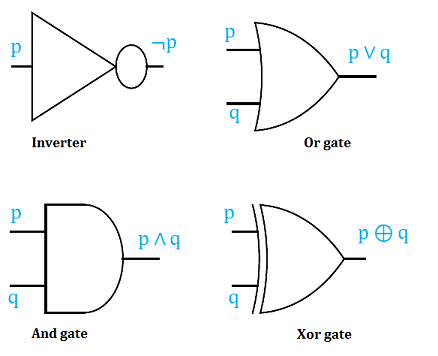
We end this section by first analyzing logic circuits to give their outputs in terms of their input variables, and then, constructing logic circuits based on logical statements.
In the next two examples, we design logic circuits based on logical propositions. The idea is to work backward using order of operations from the right to the left.
7.6. Exercises
Remixer’s Note: This section is taken from the original “Discrete Math” book with no changes.
-
Which of these statements are propositions? Explain your reasoning
-
Is Atlanta the capital of Georgia?
-
All birds fly
-
\(2\ \times\ \ 3\ =\ 5\)
-
\(5\ +\ 7\ =\ 7+5\)
-
\(x\ +\ 2\ =\ 11\)
-
Answer this question.
-
The rain in Spain
-
-
Construct truth tables for,
-
\(a\vee b\Rightarrow\lnot b\)
-
\((a\vee\lnot b)\ \Leftrightarrow\ a\)
-
\((a\Rightarrow b)\ \bigwedge\ (b\ \bigwedge\ \lnot c)\)
-
\((a\ \bigvee\ b)\ \Rightarrow\ (\ \lnot c\ \bigvee\ a)\)
-
\((a\ \bigvee\ b)\ \bigwedge\ (c\ \bigvee\lnot d\ )\)
-
\((\lnot c\ \bigwedge\ \ b)\ \bigvee\ \ (a\Rightarrow\ \lnot d\ )\)
-
-
Using truth tables, determine if each of the following is a tautology, contradiction, or neither (conditional)
-
\(\neg ((a\lor b)\lor (\neg a\land \neg b))\)
-
\(\left(\left(a\vee b\right)\land\lnot a\right)\Rightarrow b\)
-
\(\left(\left(a\vee b\right)\land a\right)\Rightarrow b\)
-
\(p\land r)\lor (\neg p\land \neg r)\)
-
\(\neg ((p\lor q)\lor (\neg p\land (\neg q\lor r)))\)
-
\(\neg (p\land q)\lor (q\lor r)\)
-
-
Using truth tables determine which of the following are equivalent
-
\(\left(p\Rightarrow q\right)\Rightarrow r\),
\(\left(p\land\lnot q\right)\vee r,\) and
\(\left(p\land\lnot q\right)\land r\)
-
\((a\lor b)\land c,\)
\((c\land a)\lor (c\land b),\) and
\(\neg ((\neg a\land \neg b)\lor \neg c)\)
-
-
Let \(C(x)\) be the statement "\(x\) has visited Canada." where the domain consists of the students at GGC. Express each of the quantifications in English.
-
\(\exists x C(x)\)
-
\(\forall x C(x)\)
-
How would you determine whether each of these statements is true or false?
-
-
Determine the truth value of each of these statements if the domain for all variables, \(m , n\) is the set of all integers, \(\mathbb{Z}\), explaining your reasoning.
-
\(\forall n:\left(n^2\geq 1\right)\)
-
\(\forall n:\left(n^2\geq 0\right)\)
-
\(\ \exists\ n:(n^2=3)\)
-
\(\ \exists\ m\forall\ n:(m+n=n-m)\)
-
\(\forall\ n\exists\ m:\ (n\cdot\ m=m)\)
-
\(\ \exists\ n\forall\ m:\ (n\cdot\ m=m)\)
-
\(\ \exists\ n\forall\ m:\ (n\cdot\ m=n)\)
-
-
Consider each of the compound propositions. (i) Translate each using logical symbols and letters, stating what each letter represents, (ii) Negate each using plain English sentences, and (iii) Translate the negated statements using logical symbols and quantifiers.
-
If it snows today, then I will go skiing tomorrow.
-
Mei walks or takes the bus to class.
-
Every person in this class understands mathematical induction.
-
In every mathematics class there is some student who falls asleep during lectures.
-
There is a building on the campus of some college in the United states in which every room is painted white.
-
-
Let \(p\), be the proposition ”My bicycle needs a tire replaced,” \(q\), be the proposition ”I will go cycling”, and, \(r\), be the proposition ”Rain is in the forecast.”
-
Express each of these compound propositions using plain English sentences.
-
\(\neg p\vee q\)
-
\(\neg p\Rightarrow \neg q\)
-
\((\neg p\wedge r)\Rightarrow q\)
-
\((\neg p\wedge r)\Rightarrow q\)
-
\((\neg p\wedge q)\vee r\)
-
-
Write these compound propositions using \(p\), \(q\) and, \(r\) and logical connectives (including negation).
-
If my bicycle tire does not replacement I will go cycling.
-
My bicycle tire does not replacement, there is rain in the forecast but I will go cycling
-
Whenever there is rain in the forecast, I do not go cycling.
-
If there is rain in the forecast or my tire needs replacement I will not go cycling.
-
Rain is not forecast whenever I go cycling.
-
Rain is not forecast and my tire does not need replacement whenever I go cycling.
-
-
-
Design logic circuits with the following output
-
\((p\lor (q\land \neg r))\lor \neg (p\land q)\)
-
\((p\lor (q\land r))\land \neg (p\land q)\)
-
-
Consider the predicate \(Q(x,y): x\ \cdot\ y=5\), where the domain of \(x\) and \(y\) is all positive real numbers \(\mathbb{R}^+\), or \(x,\ y\ >0\). Determine the true value of the following, an explain your reasoning.
-
\(Q(1,5)\)
-
\(Q\left(2,\frac{5}{2}\right)\)
-
\(\exists\ y,\ Q\left(7,y\right)\)
-
\(\ \forall\ y,\ Q\left(7,y\right)\)
-
\(\exists\ x\ \forall\ y,\ Q\left(x,y\right)\)
-
\(\ \forall\ \ x\ \exists\ \ y,\ Q\left(x,y\right)\)
-
-
Consider the predicate \(R(x,y):\ 2x+y=0\), where the domain of \(x\) and \(y\) is all rational numbers, \(\mathbb{Q}\). Determine the true value of the following, an explain your reasoning.
-
\(R(0,0)\)
-
\(R(2,-1)\)
-
\(R\left(\frac{1}{5},-\frac{2}{5}\right)\)
-
\(\exists y,\ R\left(0.2,y\right)\)
-
\(\ \forall y,\ R\left(7,y\right)\)
-
\(\exists\ x\forall\ y,\ R\left(x,y\right)\)
-
\(\ \forall\ x\ \exists\ y,\ R\left(x,y\right)\)
-
-
Calculate the bitwise \(AND\), the bitwise \(OR\), and the bitwise \(XOR\) of the following pairs of bytes, or sequence of bytes
-
\(01111111\) and \(11101001\)
-
\(1110010111111010\) and \(0101110101100011\)
-
-
Give the output for each of the logic circuits in terms of the input variables,
-
The logic circuit, with input variables, \(p, q\), \(r\).
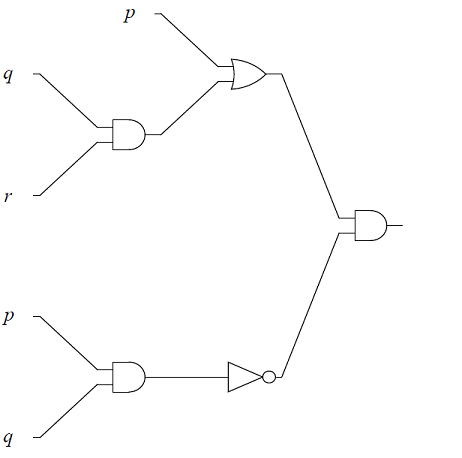
-
The logic circuit, with input variables, \(a, b\), \(c\).
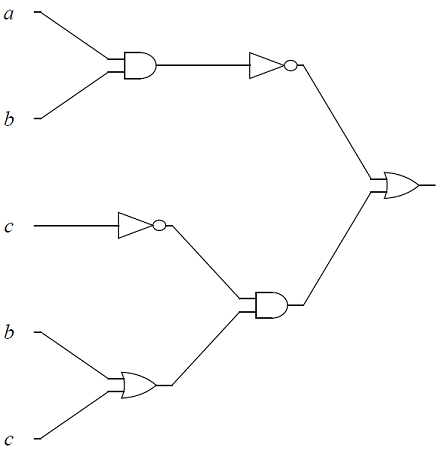
-
-
Design a logic circuit for \(r\land (p\lor (r\land \neg q))\).
7.7. Challenge Exercises
-
Complete parts (a) and (b) to show that every compound proposition is logically equivalent to one that uses the same propositional variables but only the NAND operator \(\uparrow.\)
-
For each of the three propositions \(\neg p\), \(p \land q,\) and \(p \lor q,\) write a logically equivalent proposition that uses only \(p,\) \(q,\) and \(\uparrow.\)
-
Use the theorem that every compound proposition is equivalent to a compound proposition in disjunctive normal form to justify that the compound proposition is also equivalent to one that uses only the NAND operator \(\uparrow.\)
-
-
Complete parts (a) and (b) to show that every compound proposition is logically equivalent to one that uses the same propositional variables but only the NOR operator \(\downarrow.\)
-
For each of the three propositions \(\neg p\), \(p \land q,\) and \(p \lor q,\) write a logically equivalent proposition that uses only \(p,\) \(q,\) and \(\downarrow.\)
-
Use the theorem that every compound proposition is equivalent to a compound proposition in disjunctive normal form to justify that the compound proposition is also equivalent to one that uses only the NOR operator \(\downarrow.\)
-
8. Proofs: Basic Techniques
This chapter was last updated on October 6, 2024 (fixed subscript typo in proof of Generalized Pigeonhole Principle)
Contents locked until 11:59 p.m. Pacific Standard Time on December 20, 2024.
Recall from the Logic chapter that an argument is a finite sequence of statements that ends with a final statement, the conclusion, that is based on inferences made from the earlier statements, called premises or hypotheses.
An argument is valid if it is of a form such that if all premises are True then the conclusion must be True, too. An argument is not valid just because it exists! Compare this situation to a proposition, which is a single statement that may be either True or False (but not both); an argument is a finite sequence of statements that may be either valid or invalid.
A proof is a valid argument made up of propositions. In a proof, some premises may be axioms or postulates, which are propositions that we simply ASSUME to be True. Other premises used in a proof may be previously-proven propositions called theorems. There are many other terms used for theorems depending on the context, such as lemma (a minor theorem needed to prove a more important major theorem) and corollary (a theorem that is a conclusion based on a premise that is a more important theorem), but each of these specialized terms describes a theorem.
8.1. Rules of Inference for Propositions
To create a proof, we must proceed from True propositions to other True propositions without introducing False propositions into the argument. To do this, we use rules of inference, which are ways to draw a True conclusion from one or more premises that are already known to be True (or assumed to be True). That is, a rule of inference is an argument form that corresponds to a tautology, and so is valid.
In the following subsections we will discuss some of the more common rules of inference.
8.1.1. Transitivity Of The Conditional
The following rule of inference is called pure hypothetical syllogism, but we will use the less formal name transitivity. It is the basis of conditional proof in mathematics.
By applying transitivity multiple times, we can build a finite chain of implications of any length we want:
-
\(p \rightarrow p_{1}\)
-
\(p_{1} \rightarrow p_{2}\)
-
\(p_{2} \rightarrow p_{3}\)
-
\(\vdots\)
-
\(p_{k-1} \rightarrow p_{k}\)
-
\(p_{k} \rightarrow r\)
-
\(\therefore p \rightarrow r\)
8.1.2. Rules Of Inference And Fallacies Arising From The Conditional
Recall that if we have propositions p and q, we can form the conditional with hypothesis \(p\) and consequent \(q\), written as \(p \rightarrow q\), as well as three other related conditionals.
-
\(p \rightarrow q\), the conditional
-
\(q \rightarrow p\), the converse of \(p \rightarrow q\)
-
\(\neg q \rightarrow \neg p\), the contrapositive of \(p \rightarrow q\)
-
\(\neg p \rightarrow \neg q\), the inverse of \(p \rightarrow q\)
Also, recall that \((p \rightarrow q) \equiv (\neg q \rightarrow \neg p)\). That is, \((p \rightarrow q) \leftrightarrow (\neg q \rightarrow \neg p)\) is a tautology. This means that the conditional is logically equivalent to its contrapositive. The conditional is NOT logically equivalent to either its converse or its inverse, as was shown using truth tables in the Logic chapter.
From the four conditionals we get two rules of inference and two fallacies. Together, these four argument forms are referred to as the mixed hypothetical syllogisms.
First, here are the two rules of inference.
Next, here are the two fallacies. They are included because they are very common errors to be aware of and to avoid.
The following image uses an Euler diagram of two sets \(A \subseteq B\) to explain why the converse error is a fallacy. The image can also be used to explain why the inverse error is a fallacy.
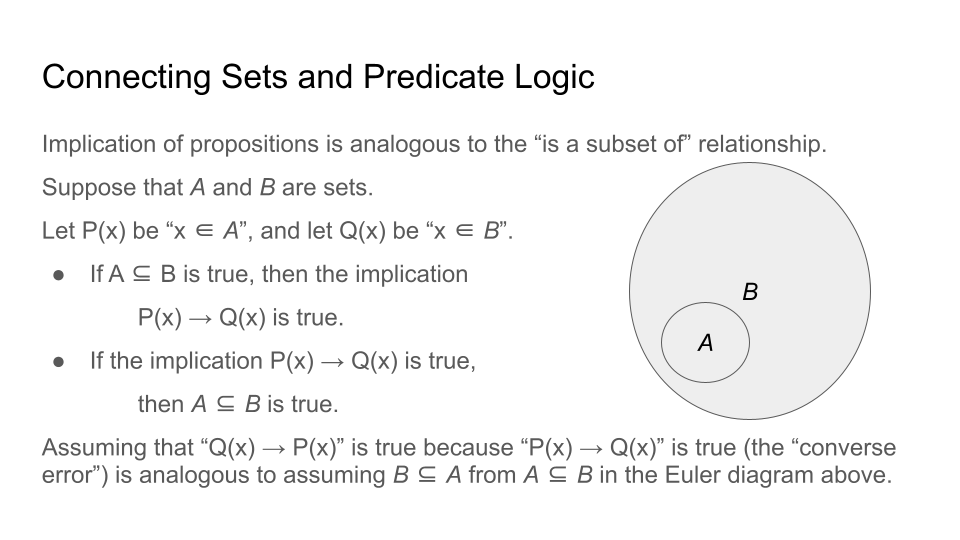
Suppose you were told that \(c\) is an element of \(B\) in the preceding image. Can you determine whether \(c\) is an element of \(A\), too?
8.1.3. Other Common Rules Of Inference
Any tautology of the form \(p \rightarrow q\) can be used to define a rule of inference. In particular, we can define a rule of inference corresponding to the tautology \((p_{1} \land p_{2} \land \ldots \land p_{n})\rightarrow p_{1}\) for each integer \(n \geq 1\). This means that there are at least as many possible tautologies as there are natural numbers! How do we deal with infinitely many tautologies?
In general, there is a small number of rules of inference that are used in most proofs. Proofs often are built up to a large size by applying just a few rules of inference multiple times.
Here are some of the more commonly-used rules of inference. In the remix author’s opinion, it’s better to practice using these rules of inference rather than to focus on memorizing them as formal rules with special names.
There are many more rules of inference we could write down and give names to. Instead, we’ll just list a few tautologies.
8.2. Rules Of Inference for Quantified Statements
In this section, four rules of inference that apply to quantified predicates are presented. In all of these rules of inference, the values of the variable(s) are assumed to be restricted to a universal set \(U.\)
8.2.1. Rules of Inference for Universally-Quantified Predicates
Universal instantiation states that, from the premise \(\forall x P(x)\) and the premise \(c \in U,\) where \(c\) is an arbitrarily-chosen element, you can conclude that \(P(c)\) must also be true.
Universal generalization states that, from the premise \(P(x)\) is true for every arbitrarily-chosen value of \(x\) that is an element of the universal set \(U,\) you can conclude \(\forall x P(x)\) must also be true.
You will see later in the textbook that universal generalization is applied in every proof that uses the mathematical induction proof technique.
8.2.2. Rules of Inference for Existentially-Quantified Predicates
Existential instantiation states that, from the premise \(\exists x P(x),\) you can conclude that there must be at least one \(c \in U\) such that \(P(c)\) is true. This allows you to pick a "constant" \(c\) instead of needing to refer repeatedly to the existential quantifier.
Existential generalization states that, from the premise that \(P(c)\) is true for at least one \(c \in U,\) you can conclude that \(\exists x P(x)\) must also be true.
8.3. Proof Techniques
In this section several examples of formal mathematical proofs are given to illustrate different proof techniques. Many of the techniques correspond to certain rules of inference that were discussed earlier in this chapter.
Each proof starts by stating a conjecture, which is a proposition with undetermined truth value. The goal of each proof is to determine the truth value of the relevant conjecture.
To simplify the description of the proof techniques, we’ll only consider the case where the proof has a single premise \(p\), that is, we’ll always assume that our proof involves a single conditional \(p \rightarrow q\). This may seem like an oversimplification, but it is not: We are simply renaming the conjunction \((p_{1} \land p_{2} \land \ldots \land p_{n})\) of all of the actual premises by using the single propositional variable \(p\), that is we are defining \(p\) by the logical equivalence \(p \equiv (p_{1} \land p_{2} \land \ldots \land p_{n})\)
Here we’ll present examples of proofs using several different techniques. Most of these proofs establish an arithmetic fact that you probably have always known (or assumed) is True; instead, you can focus on the form of the proof: Note the steps that are used, and how the argument flows.
Another important proof technique, mathematical induction, will be discussed in a later chapter.
8.3.1. Direct Proof
In a direct proof, we make an argument that a conditional statement \(p \rightarrow q\) must be True. This means that we can assume that the premise \(p\) is True and apply modus ponens to prove that \(q\) must be True, too.
8.3.2. Proof By Contraposition
In a proof by contraposition, we make an argument that \(p \rightarrow q\) is True by instead first arguing that its contrapositive \(\neg q \rightarrow \neg p\) is True and secondly applying the logical equivalence of the conditional and its contrapositive. Start by assuming that the premise \(\neg q\) is True and apply modus ponens to prove that \(\neq p\) must be True, too, then apply logical equivalence.
8.3.3. Proof By Counterexample
In a proof by counterexample, we disprove a proposition of the form \((\forall x \in D) P(x)\) by arguing that there is at least one value \(c \in D\) such that \(\neg P(c)\) is True.
8.3.4. Proof by Contradiction
In a proof by contradiction, we disprove the proposition \(\neg p\) by making an argument that the conditional \(\neg p \rightarrow (q \land \neg q)\) must be True for some proposition \(q\) and apply the Contradiction Rule to conclude that \(p\) must be True.
Note: Sometimes, we argue instead that the proposition \(((\neg p \rightarrow q) \land (\neg p \rightarrow \neg q))\) must be True, and use the fact that this proposition is logically equivalent to \(\neg p \rightarrow (q \land \neg q)\) and apply the Contradiction Rule.
Here is another example of proof by contradiction.
9. Sequences and Recursion
CAUTION - CHAPTER UNDER CONSTRUCTION!
This chapter was last updated on October 7, 2024.
Sequences are functions with domain the natural numbers, or a subset of the natural numbers. That is, sequences are lists of objects indexed by some or all of the natural numbers. The indexed objects are called the terms of the sequence and may be any kind of object - numbers, sets, functions, strings, steps of a proof, steps of an algorithm, etc.
Recursion is a process that you can use to define an object, compute a value, or describe the construction of an object or set of objects, by using a sequence of steps where each step after the initial step refers to one or more previously completed steps.
9.1. Examples: Sequences of Numbers
Here are several examples of sequences of numbers; you may have seen some of these in your previous mathematics experience but others may be new to you.
An arithmetic sequence is a sequence of numbers generated by a linear expression.
A geometric sequence is a sequence of numbers generated by an exponential expression.
The next sequence is the very famous Fibonacci numbers, named for the Italian mathematician Fibonacci who was also known as Leonardo of Pisa. However, this sequence and its properties were known and discussed by Indian poets and mathematicians such as
Acharya Pingala, Acharya Virahanka,
and
Acharya Hemachandra
before Fibonacci was born. The sequence became known to Europeans when Fibonacci used the sequence in his 1202 book Liber Abaci to solve a counting problem that involves breeding pairs of rabbits
The book Liber Abaci ("Book of Calculation") is credited with popularizing the use of the base-ten Hindu-Arabic numeral system in Europe, too.
9.1.1. Solving Recurrence Relations
We say we have solved a recurrence relation together with the initial conditions when we find an explicit formula, called a closed form, for the terms of the sequence.
9.2. Recursion
A recursive definition of a class of objects consists of two steps.
| Basis Step |
Specify the foundational (usually, the simplest) objects in the class of objects. |
| Recursion |
Describe how to build new objects from one or more already-constructed objects in the class of objects. |
9.2.1. Recursively-Defined Structures
For some mathematical objects, it is easier to describe the construction of the objects using a recursive definition.
You may recall that well-formed formulae were defined in the Logic chapter using a recursive definition. We formalize that definition here.
In the next example, we describe how to construct rooted trees, a type of graph.
9.2.2. Recursively-Defined Functions
A recursively defined function has two parts:
-
Basis Step: Specify the value of the function at zero
-
Recursion Step: Give a rule for finding its value at an integer from its value at smaller integers.
This is similar to a recurrence relation, but using function notation.
9.3. Towers Of Hanoi
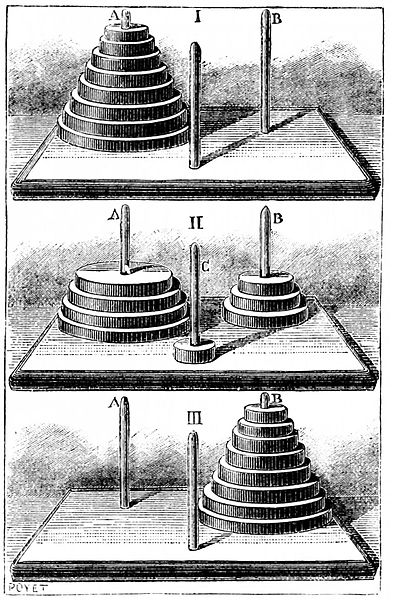
The Towers of Hanoi is a game that was introduced and sold by the French mathematician Édouard Lucas in the 1880s. Lucas stated that the game is "professedly of Indo-Chinese origin" but it seems that Lucas invented this story to market the game.
Image credit: "PSM V26 D464 The tower of hanoi.jpg". This work is in the public domain in its country of origin and other countries and areas where the copyright term is the author’s life plus 70 years or fewer.
At the start of the game, a set of disks of different radii are stacked on a single peg to form a "tower." The disks are stacked so that the radii of the disks decrease as you move up the stack. There are also two empty pegs. The game is won by moving the stack of disks from the original peg to another peg using the following rules
-
Only one disk can be moved at a time.
-
The disk at the top of a stack can be moved to the top of another stack or on to an empty peg.
-
A disk can never be placed on top of a disk that has a smaller radius.
In this textbook, the Towers of Hanoi will be used to explore several important concepts, namely, recursive algorithms, complexity of algorithms, and recurrence relations.
MORE TO COME!
10. Functions
CAUTION - CHAPTER UNDER CONSTRUCTION!
This chapter was last updated on October 7, 2024.
Informally, a function \(f\) from set D to set C is a rule that assigns to each input element in D exactly one output element from C. The set D is called the domain of the function, and the set C is called the codomain of the function. This informal definition was introduced in the Introducing Discrete Mathematics chapter.
Notice that the informal definition states that every element in the domain D is assigned an output value in the codomain C. The informal definition does not specify whether every element in the codomain C is an output for some input in the domain D. The previous highlighted sentence may seem unimportant since we usually only care about the outputs we can actually get from a function, but the following example attempts to show why it is important to be precise about what set the codomain is.
The formal definition given in the next section will let us distinguish between two functions that use the same rule and have the same domain but have different codomains.
10.1. A Formal Definition Of Function
The reason why the ordered triple is used in the definition is that we need to be able to distinguish two functions that have the same graph but different codomains. Note that if two functions have the same graph then they must have the same domain, but they could still have different codomains.
-
We write \(f : A \rightarrow B\) to state that \(f\) is a function from set \(A\) to set \(B.\)
-
We often refer to the ordered triple as "f" without explicitly mentioning the other two members of the ordered triple. That is, we refer to the function as its set of ordered pairs \(f\), but it is very important to remember that the actual definition includes the domain and codomain, too.
-
It is important to note that the graph of \(f\) is the set of ordered pairs which we often represent by plotting points, but that plot is only a representation of the graph (in the same way that "five" and "cinco" are verbal representations of a number but are not the number itself.)
-
We write \(f(a)=b\) instead of \((a,\, b) \in f\). The value \(b = f(a)\) is called the image of \(a\) assigned by \(f,\) and \(a\) is called the pre-image of \(b.\)
-
The range of \(f\) is the set \(\{ f(a) : a \in A \}\), that is, the set of all images (output values) assigned by \(f.\) The range is the set of \(b \in B\) such that there is at least one ordered pair \(( a, \, b) \in f.\)
-
Two functions are equal if they have the same graph, the same domain, and the same codomain. That is, the functions \((f,\, A,\, B)\) and \((g,\, S,\, T)\) are equal if they are identical as ordered triples: \(f = g\) and \(A = S\) and \(B = T.\) We can also simply say that "\(f\) and \(g\) are the same function."
-
Notice that the graph \(f\) in the formal definition replaces the rule used in the informal definition. Given the graph, which is the set of ordered pairs, we can state a rule as "given an input \(a \in A,\) the output is the one \(b \in B\) such that \((a,\, b) \in f.\)" This is exactly how you would use a table of values to represent a function: Find the row with the input value then choose the value in the output column
|
The graph (i.e., the set of ordered pairs), the domain, and the codomain determine the function, NOT the formula, words, table, plot, or code used to describe a rule for the function.
The graph of a function determines how to assign each input to its output. For example, the functions \(f: \mathbb{R} \rightarrow \mathbb{R}\) and \(g: \mathbb{R} \rightarrow \mathbb{R}\) defined by the formulae \(f(x) = |x|\) and \(g(x) = \sqrt(x^{2})\) are equal, and in fact are one and the same function, because \(f = g\) as sets, so the "two" functions have the same graph, the same domain, and the same codomain. The "two" functions are just two ways of describing the same ordered triple. |
10.2. Injective, Surjective, Bijective, and Inverse Functions
A function \(f\) is injective, or one to one, if every element in the range \(B\) is associated with a unique element from the domain \(A\), that is, different elements of \(A\) have nonequal images in \(B\). This means that if \(f(m)=b\) and \(f(n)=b\), then necessarily \(m=n\).
Real-valued functions, \(f: \mathbb{R} \rightarrow \mathbb{R}\), that are strictly increasing or strictly decreasing, such as exponential or logarithmic functions, are injective.
Informally a function is injective if different elements in the domain are mapped to different elements in the range. A function is not injective if at least two different elements are mapped to the same element in the range.
|
On a Cartesian plane, this means that every horizontal line intersects the graph at most once for an injective function. A function is not injective if at least one horizontal line intersects the graph more than once. |
A function \(f\) from the set \(A\) to the set \(B\) is surjective, or onto, if the image set of \(A\) is the entire set \(B\). This means than for any element \(b \in B\) there is some element \(a \in A\) with \(f(a)=b\).
Informally a function is surjective to its codomain \(B\), if every element in \(B\) can be reached by \(f\). A function is not surjective to its codomain if at least one element in the co-domain is not in the range or in the image set of \(f\).
|
On a Cartesian plane, this means that every horizontal line intersects the graph at least once for a surjective function. A function is not surjective if there is a horizontal line that does not intersect the graph. |
A function \(f\) is bijective if it is both injective and surjective.
A function \(f\) is invertible if the inverse of relation \(f : A \rightarrow B\) is also a function. The inverse is usually denoted \( f^{-1}\). For example if \((a,b)\), corresponds to \(f(a)=b\) , then \( f^{-1}: B \rightarrow A\), corresponds to \( f^{-1}(b)=a\).
The following theorem shows that invertibility of a function is equivalent to bijectivity, or a function being both a one-to one function and onto function.
|
Being able to solve an equation, amounts to being able to invert a function. Notationally, solving \(f(x) =b\) means solving for \(x\). Using inverses \(f(x) =b\) is solved \(x=f^{-1}\left(b\right)\). |
Consider, for example, \(f\left(x\right)=x^3\) we know
Solving \(f\left(x\right)=2\) means solving \(x^3=2\). To solve \(f\left(x\right)=2\), we use \(x=f^{-1}\left(8\right)\), which in this case means,
An easy check \( f\left(2\right)=2^3=8\) and
Functions can, in many cases, be visualized graphically. For example when mapping from the real line \(\mathbb{R}\) to the real line such maps are viewed on a Cartesian plane.
In Appendix: Library of Functions, several functions and their plots are shown to illustrate the important concepts of functions, including domain, codomain, range, and invertibility.
MORE TO COME!!
11. Relations
CAUTION - CHAPTER UNDER CONSTRUCTION!
This chapter was last updated on October 21, 2024.
Relations are used to describe an association of data.
For example, imagine a university database of students. The database needs to have a record for each student, and the student’s record needs to include fields for the student’s name(s), the unique student ID number for the student, the student’s current status, a list of courses that the student has enrolled in or has completed (along with the grade earned in each completed course,) and possibly other data associated with the student. One way to visualize the database is as a two-dimensional table, similar to a spreadsheet worksheet, where each row corresponds to a record and each column corresponds to a field; each row can be treated as an ordered \(n\)-tuple, where \(n\) is the number of fields.
In this chapter, you will learn about the formal definition of relation, operations and properties of relations. You will also learn about some special types of relations, namely partial orderings and equivalence relations. As a special case of equivalence relations, you will learn aobut congruence relations of integers as well as modular arithmetic.
11.1. Definition of Relation
Informally, a relation on two or more sets is an association between elements of those sets.
Formally, a relation is a subset of a Cartesian product of two or more sets.
For simplicity, it is assumed in this textbook that the number of sets used to form the Cartesian product is finite. It is possible to define relations as subsets of a Cartesian product of infinitely many sets, in which case the elements of the relation are infinite sequences.
Here are several examples of relations.
Notice that for any sets \(A_{1}, \, A_{2}, \, \ldots \, A_{n},\) where \(n \geq 2\) is a natural number, we always have the following two relations:
-
\(\emptyset,\) called the empty relation. This relation is also called the void relation and trivial relation in other sources.
-
\(A_{1} \times A_{2} \times \cdots \times A_{n},\) called the universal relation.
11.2. Binary Relations on a Single Set
In many cases, the two domains of a binary relation are the same set; for example, the relation may involve comparing two elements of a set S in some way. In this case, the domain \(S\) is mentioned only once: A binary relation on set S is any subset \(R\) of the cartesian product \(S \times S\), that is, \(R \subseteq S \times S.\)
In the case of a binary relation on \(S,\) we often write \(aRb\) to mean the same thing as \((a,b) \in R.\) This notation may make more sense after reading the following example.
11.2.1. Operations on Binary Relations on a Set
Given binary relations \(Q\) and \(R\) on a set \(S,\) we can define several other relations in terms of \(Q\) and \(R.\) These operations are likely familiar to you as operations on functions but they also work for binary relations on a single set.
-
The inverse of \(R\) is the relation \(R^{-1} = \{ (b,a) \, | \, (a,b) \in R \}.\)
-
The composition of Q and R is \(R \circ Q = \{ (a,c) \, | \, (a,b) \in Q \land (b,c) \in R \}.\)
-
The n th power of \(R\) is defined recursively for all \(n \in \mathbb{N}\) as follows.
-
\(R^{0} = \mathbf{id}_S\)
-
\(R^{k+1} = R \circ R^{k}\) for natural numbers \(k > 0.\)
The recursion step uses \(k\) instead of \(n\) in preparation for the type of arguments used in the chapter on proof by mathematical induction.
-
Building on the \(n\)th powers of \(R,\) we can define two relations.
-
\(R^{+}\) is the relation \(\{ (a,b) \in S \times S \, | \, (a,b) \in R^{k} \text{ for some positive integer } k \}.\) That is, \(R^{+}\) is the union of all the positive \(n\)th powers of \(R.\)
-
\(R^{*}\) is the relation \(\{ (a,b) \in S \times S \, | \, (a,b) \in R^{k} \text{ for some natural number } k \}.\) That is, \(R^{*}\) is the union of all the natural number \(n\)th powers of \(R.\)
Notice that \(R^{*} = \mathbf{id}_S \cup R^{+}.\)
11.2.2. Properties of Binary Relations on a Set
In this subsection we define five properties that a relation may satisfy.
The following theorem can make it easier to determine when a relationship has each of the five properties. The proof of the theorem is an exercise.
11.2.3. Closures of Binary Relations with Respect to a Property
For each of the properties reflexivity, symmetry, and transitivity, we define the closure with respect to the property of a relation \(R\) as follows: The closure is the smallest relation that has the property and includes all the elements of \(R.\) That is, you start with \(R\) and try to insert in just enough ordered pairs, if any are needed, to make sure that the new relation has the desired property.
The following theorem justifies that the reflexive closure, symmetric closure, and transitive closure exist for any relation \(R.\) The proof of the theorem is an exercise.
Notice that we can also define the reflexive and transitive closure of a relation \(R\) as the relation \(R^{*},\) which is the reflexive closure of the transitive closure of \(R.\)
However, for some properties, the closure of a relation \(R\) with respect to the property may not exist!
11.3. Equivalence Relations
A binary relation \(R\) on a set \(S\) is called an equivalence relation on \(S\) if \(R\) is reflexive, symmetric, and transitive.
A first example of an equivalence relation is the diagonal, that is, the equality relation. Another example is given below.
Given an equivalence relation \(R\) on the set \(S\) and an element \(x \in S,\) we define the equivalence class of \(x\) to be \([ x ]_{R} = \{ y \in S \, | \, (x,y) \in R \}.\)
11.4. Order Relations on a Set
11.4.1. Partial Orderings
A binary relation \(R\) on a set \(S\) is called a partial order on \(S\) if \(R\) is reflexive, antisymmetric, and transitive.
11.4.2. Total Orderings
A total ordering of a set \(S\) is a relation \(R\) on \(S\) that has the property \((\forall x \in S)(\forall y \in S)(xRy \lor yRx).\)
11.4.3. Well-Ordering
A well-ordering of a set \(S\) is a total ordering that has the additional property that every nonempty subset of \(S\) contains a least element with respect to the order relation.
Note that the above statement is not a theorem… it is an axiom that we assume to be true about the natural numbers!
11.5. Modular Arithmetic
For any positive integer \(m,\) you can define congruence modulo \(m\) as the relation \(\equiv_{m} = \{ (a, b) \, | \, m \text{ divides } (a-b) \}.\)
For each positive integer \(m,\) \(\equiv_{m}\) is an equivalence relation. For any integer \(a,\) you can use the division algorithm to find the quotient and remainder such that \(a = q \cdot m + r\), where \(q\) and \(r\) are integers and \(0 \leq r < m.\) So every integer is congruent modulo \(m\) to one of the integers in the set \(\{ 0, 1, \ldots, m-1 \}.\)
You likely learned how to do arithmetic with the remainders when \(m = 2\) when you were quite young, but not in the formal way presented in this textbook. Instead of referring to the equivalence classes as 0 and 1, you likely used the words "even" and "odd" but could describe certain properties of arithmetic using those words. For example, "odd times even equals even" is a simpler way of stating that if \(a \in [1]_{\equiv_{2}}\) and \(b \in [0]_{\equiv_{2}}\) then \((a \cdot b) \in [0]_{\equiv_{2}}.\)
MORE TO COME!
12. Rates of Growth of Functions
CAUTION - CHAPTER UNDER CONSTRUCTION!
This chapter was last updated on October 16, 2024.
Revised the section on using limits to determine Big-\(O\) and Big-\(\Theta\) relationships.
Some tasks can be completed by more than one algorithm. In such a case, two questions to ask are "How do you choose which algorithm to use?" and "Why is is it important to make such a choice?" This chapter will discuss tools you can use to help answer these questions.
In particular, ways of comparing the rates of growth of functions will allow us to compare how two algorithms perform as the size of the inputs to the algorithms increase with no upper bound (theoretically, since it’s very likely that there are only a finite amount of computing resources available in the universe.)
12.1. Complexity of Algorithms
In order to implement an algorithm, there are issues of the space needed to do the work and the time needed to complete all the steps.
For example, imagine that you are asked to complete a "few" Algebra homework exercises that involve solving linear equations by hand using paper and pencil. Now suppose that "few" means "one hundred" and that each linear equation will involve multiple steps to solve like the one below. \[ \text{Exercise 1. Solve for } x \text{: } 40(x+6)-9(3x+5) = 65(x+7)-(7x+132)\] It is not difficult to solve linear equations like this because it is clear what steps you need to use… but it is tedious and will likely require a lot of paper! That is, it will consume a lot of time and space to solve even the first one of the equations, and you’ll have only ninety-nine more to do after that!
In this textbook, the focus will be on time complexity and asymptotics, that is, the comparison of the time needed by the algorithms as the size of the data becomes larger and larger without any bound.
12.2. The Order of a Function and Big Theta Notation
In this section, we will define a relation that describes what it means to say that "two functions grow at the same rate." More precisely, "two functions grow at the same rate, asymptotically, as the input variable grows without an upper bound." We will also introduce big \(\Theta\) notation (\(\Theta\) is the uppercase Greek letter "theta.")
We have the following theorem about this relation.
These three properties let you conclude that the "has the exact same order as" relationship partitions the set \(\{ f \, | \, f \text{ is a function with domain and codomain } \mathbb{R} \}\) into disjoint sets. That is, if we define \(\Theta(g)\) as the set \[ \Theta(g) = \{ f \, | \, f \text{ has the exact same order as } g \} \] then every function with domain and codomain \(\mathbb{R}\) is an element of at least one of the \(\Theta(g)\) (since \(g\) is an element of \(\Theta(g)\)), and for any two functions \(g\) and \(h,\) the sets \(\Theta(g)\) and \(\Theta(h)\) must either be equal or have empty intersection.
|
Mathematicians and computer scientists are very different beasts… well, they are all human but they have developed different cultures so they often use the same symbols in different ways. A mathematician, like the author of the Remix, would write the very formal \(f \in \Theta(g)\) and state "f is an element of Theta g" to mean that "f has the exact same order as g." In the earlier example, a mathematician could abbreviate this a little bit and write "\(x + \sin(x)\) is in \(\Theta(x).\)" Computer scientists have traditionally written this relation as \(f(x) = \Theta(g(x))\) and state "\(f(x)\) is big Theta of \(g(x)\)." In the earlier example, a computer scientist could write "\(x + \sin(x) = \Theta(x)\)." As a mathematician, I need to point out that the function f is not equal, in the mathematical sense, to the equivalence class containing g because it’s just one of the infinitely many functions in that equivalence class. I believe that both mathematicians and computer scientists agree that Θ(g(x)) = f(x) is just too hideous a notation to use… so do not ever, ever use it! |
12.3. Big O notation
Traditionally, computer scientists are much more interested in the idea that "f grows at most at the rate of g". This corresponds to the second part of the inequality used to define big Theta in the previous section.
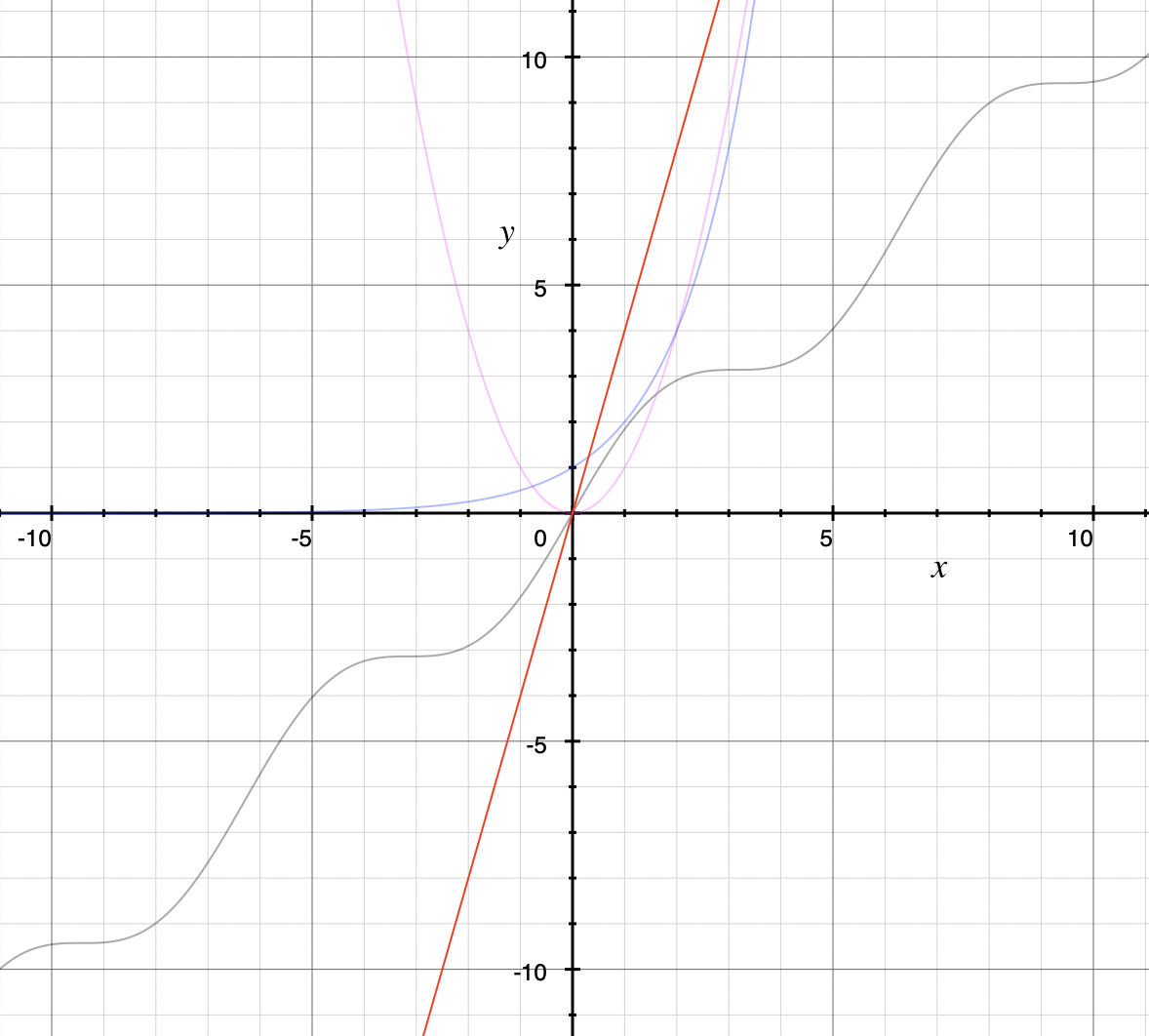
Note that Big O only gives an upper bound on the growth rate of functions. That is, the function \(f(x) = x + \sin(x)\) with domain and range \(\mathbb{R},\) used in an earlier example, is \(O(x)\) but also is \(O(x^{2})\) and is \(O(2^{x}).\)
Big O is typically used to analyze the worst case complexity of an algorithm. If, for example, \(n\) is the size of the input data, then big O really only cares about what happens when your input data size \(n\) becomes arbitrarily large and not quite as interested in when the input is small. Mathematically, we want to speak of complexity in the asymptotic sense, when \(n\) is arbitrarily large. In this asymptotic sense of large \(n\), we may ignore constants. That we can ignore constants will make sense after discussing how limits, borrowed from continuous mathematics (that is, calculus), can be used to compare the rates of growth of two different functions.
The size of the input complexities ordered from smallest to largest:
-
Constant Complexity: \(O(1)\)
-
Logarithmic Complexity: \(O(\log (n))\),
-
Radical complexity : \(O(\sqrt{n})\)
-
Linear Complexity: \(O(n)\)
-
Linearithmic Complexity: \(O(n\log (n))\),
-
Quadratic complexity: \(O(n^2)\)
-
Cubic complexity: \(O(n^3)\),
-
Exponential complexity: \(O(b^n)\), \( b > 1\)
-
Factorial complexity: \( O(n!)\)
To understand the sizes of input complexities, we will look at the graphs of functions; it is easier to consider these functions as ones that are defined for any real value input instead of just the natural numbers. This will also allow us to use continuous mathematics (that is, calculus) to analyze and compare the growth of different functions.
Radical growth is larger than logarithmic growth:
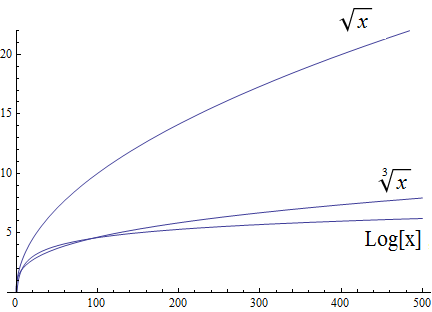
| In the preceding graph, we’ve used \(\text{Log}[x\)] to label the graph of a logarithmic function without stating the base for the logarithm: Is this the function \(y = log_{2}(x)\), \(y = log_{10}(x)\), \(y = ln(x) = log_{e}(x)\), or a logarithm to some other base? For the purposes of studying growth of functions, it does not matter which of these logarithms we use: You may recall that one of the properties of logarithms states that for two different positive constant bases \(a\) and \(b\) we must have \(log_{a}(x) = log_{a}(b) \cdot log_{b}(x)\), where \(log_{a}(b)\) is also a constant. As stated earlier, we may ignore constants when considering the growth of functions. |
Polynomial growth is larger than radical growth:
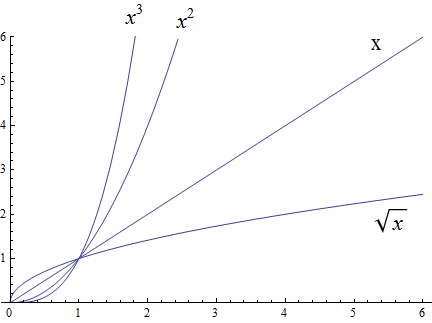
Exponential growth is larger than polynomial growth:
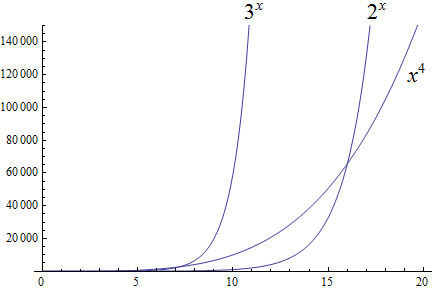
Factorial growth is larger than exponential growth:
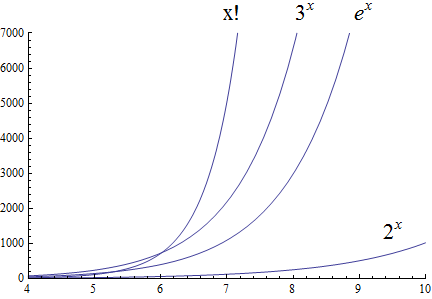
| In the preceding graph, we’ve used \(x!\) to label the graph of the function \(y = \Gamma(x+1)\) , where \(\Gamma\) is the Gamma function which is defined and continuous for all nonnegative real numbers. That is, \(n! = \Gamma(n+1)\) for every \(n \in \mathbb{N}\). Further study of the Gamma function is beyond the scope of this textbook. |
Using the graphical analysis of the growth of typical functions we have the following growth ordering, also presented graphically on a logarithmic scale graph.
The asymptotic behavior for large \(n\) should be determined by the most dominant term in the function for large \(n\). For example, \(f(x)=x^{3} + 2x^{2}-2x\) for large \(x\), is dominated by the term \(x^3\). In this case we want to state that \(O(f(x))=x^3\). For example \(f(1000) =1.001998×10^9≈ 1×10^9 =1000^3\). For large \(x\), \(f(x) ≈x^3\) or asymptotically, \(f(x)\) behaves as \(x^3\) for large \(x\). We say \(O(f(x))=x^3\) for \(f(x)=x^3 +2x^2-2x\).
Likewise we want to say that if \(c\) is a constant that \(c \cdot f(x)\), and \(f(x)\) have the same asymptotic behavior for large \(n\), or \(O(c \cdot f(x))=O(f(x))\).
Motivated by these we formally define the Big O notation.
To determine if a function \(f(x)\) is \(O(g(x))\) amounts to identifying the positive constants \(A\) and \(n\), (sometimes called witnesses). That is, we must find the factor \( A\) and the point \( k \) for which \( f(x) \leq A g(x)\), whenever \( x > k.\)
To show that a function \( f(x)\) is not \(O(g(x))\), means that no \(A\) can scale \(g(x)\) so that \( Ag(x) \geq f(x)\) for \(x\) large enough as in the following example.
12.4. Properties of Big O notation.
Suppose \(f(x)\) is \(O(F(x))\) and \(g(x)\) is \(O(G(x))\).
We can use these properties to show for instance \( 2x^2\) is \(O\left(x^2\right)\). Likewise if \(f(x) =2x^2\) and \(g(x) =4x\), then \( 2x^2\) is \(O(x^2)\) and \( 4x\) is \(O(x)\), and the maximum gives that \(2x^2+4x\) is \( O(\max(x^2, x)) =O(x^2)\).
It is true in general that if a polynomial \(f(x)\) has degree \(n\) then \(f(x)\) is \(O(x^n)\).
For example, if \(f(x)= x^3+1\) being \( O(x^3)\), and \(g(x)=x^2-x\) being \(O(x^2)\), then \(f(x) \cdot g(x)\) is \(O(x^3 \cdot x^2) =O(x^5)\). This is verified explicitly by multiplying \(f(x) \cdot g(x)= (x^3+1) \cdot (x^2-x)= x^5 -x^4+x^2-x \) which clearly is \(O(x^5)\)
As a final example we consider ordering three functions by growth using the basic properties for Big O and the basic orderings.
12.5. Using Limits to Compare the Growth of Two Functions (CALCULUS I REQUIRED!)
In general, the Remix avoids using calculus methods because calculus is part of continuous mathematics, not discrete mathematics. However, it can be useful to use calculus to compare the growth of two functions \(f(x)\) and \(g(x)\) that are defined for real numbers \(x\), are differentiable functions on the interval \((0,\, \infty)\), and satisfy \(\lim_{x \to \infty} f(x) = \lim_{x \to \infty} g(x) = \infty\). To avoid needing to use the absolute value, we can assume that \(0 < f(x)\) and \(0 < g(x)\) for all \(x \geq 0\) (This assumption is safe to make since both functions go to infinity as \(x\) increases without bound, which means that both functions are positive for all \(x\) values greater than or equal to some number \(x_{0}\)… we are just assuming that \(x_{0}=0\) which is the equivalent of shifting the plots of \(f\) and \(g\) to the left by \(x_0\) units.)
If \(f(x)\) and \(g(x)\) are such functions and \(\lim_{x \to \infty} \frac{f(x)}{g(x)} = L\), where \(0 \leq L < \infty\), then \(f(x)\) is \(O(g(x)),\) and if \(0 < L < \infty\) then \(f(x)\) is \(\Theta(g(x)).\)
To see this, recall that \(\lim_{x \to \infty} \frac{f(x)}{g(x)} = L\) means that we can make the value of \(\frac{f(x)}{g(x)}\) be as close to \(L\) as we want by choosing \(x\) values that are sufficiently large. In particular, we can make \(L-\frac{L}{2} < \frac{f(x)}{g(x)} < L+\frac{L}{2}\) be true for all \(x\) greater than some real number \(x_{0}\). Now we can use the earlier stated assumption that \(0 \leq g(x)\) to rewrite the inequality as \((L-\frac{L}{2}) \cdot g(x) < f(x) < (L+\frac{L}{2}) \cdot g(x)\), which is true for all \(x >x_{0}\). We can choose for our witnesses \(B = L + \frac{L}{2}\) and \(x_{0}.\) This means that \(f(x) < B \cdot g(x)\) whenever \(x > x_{0},\) which shows that \(f(x)\) is \(O(g(x))\). Furthermore, if \(L>0\) we can choose \(A = L - \frac{L}{2}\) as a witness for the lower bound, too, which means that \( A \cdot g(x) < f(x) < B \cdot g(x)\) whenever \(x > x_{0},\) so \(f(x)\) is \(\Theta(g(x))\).
Note that using this method does not focus on determining the actual numerical values of \(A\) and \(n\) but just guarantees that the witnesses exist, which is all that is needed to show that \(f(x)\) is \(O(g(x))\).
12.6. Exercises
-
Give Big O estimates for
-
\(f\left(x\right)=4\)
-
\(f\left(x\right)=3x-2\)
-
\(f\left(x\right)=5x^6-4x^3+1\)
-
\(f\left(x\right)=2\ \ \sqrt x+5\)
-
\(f\left(x\right)=x^5+4^x\)
-
\(f\left(x\right)=x\log{x}+3x^2\)
-
\(f\left(x\right)=5{x^2e}^x+4x!\)
-
\(f\left(x\right)=\displaystyle \frac{x^6}{x^2+1}\) (Hint: Use long division.)
-
-
Give Big O estimates for
-
\(f\left(x\right)=2^5\)
-
\(f\left(x\right)=5x-2\)
-
\(f\left(x\right)=5x^8-4x^6+x^3\)
-
\(f\left(x\right)=\) \$4 root(3)(x)+3\$
-
\(f\left(x\right)=3^x+4^x\)
-
\(f\left(x\right)=x^2\log{x}+5x^3\)
-
\(f\left(x\right)=5{x^610}^x+4x!\)
-
\(f\left(x\right)=\displaystyle \frac{x^5+2x^4-x+2}{x+2}\) (Hint: Use long division.)
-
-
Show, using the definition, that \(f\left(x\right)=3x^2+5x\) is \(O(x^2)\) with \(A=4\) and \(n=5\). Support your answer graphically.
-
Show, using the definition, that \(f\left(x\right)=x^2+6x+2\) is \(O(x^2)\) with \(A=3\) and \(n=6\). Support your answer graphically.
-
Show, using the definition, that \(f\left(x\right)=2x^3+6x^2+3\) is \(O(x^2)\). State witnesses \(A\) and \(n\), and support your answer graphically.
-
Show, using the definition, that \(f\left(x\right)=\ {3x}^3+10x^2+1000\) is \(O(x^2)\). State the witnesses \(A\) and \(n\), and support your answer graphically.
-
Show that \(f\left(x\right)=\sqrt x\) is \(O\left(x^3\right)\), but \(g\left(x\right)=x^3\) is not\(\ O(\ \sqrt x)\).
-
Show that \(f\left(x\right)= x^2\) is \(O\left(x^3\right)\), but \(g\left(x\right)=x^3\) is not\(\ O( x^2)\).
-
Show that \(f\left(x\right)=\sqrt x\) is \(O\left(x\right)\), but \(g\left(x\right)=x\) is not\(\ O(\ \sqrt x)\).
-
Show that \(f\left(x\right)=\) \$root(3)(x)\$ is \(O\left(x^2\right)\), but \(g\left(x\right)=x^2\) is not \$O( root(3)(x))\$
-
Show that \(f\left(x\right)=\) \$root(3)(x)\$ is \(O\left(x\right)\), but \(g\left(x\right)=x\) is not \$root(3)(x)\$.
-
Order the following functions by growth \(x^\frac{7}{3},\ e^x,\ 2^x,\ x^5,\ 5x+3,\ 10x^2+5x+2,\ x^3,\log{x,\ x^3\log{x}}\)
-
Order the following functions by growth from slowest to fastest. \(\ 3x!,\ {10}^x,\ x\cdot\log{x},\ \log{x\cdot\log{x,\ \ }2x^2+5x+1,\ \pi^x,x^\frac{3}{2}\ },\ 4^5,\ \ \sqrt{x\ }\cdot\log{x}\)
-
Consider the functions \(f\left(x\right)=2^x+2x^3+e^x\log{x}\) and \(g\left(x\right)=\sqrt x+x\log{x}\). Find the best big \(O\) estimates of
-
\((f+g)(x)\)
-
\((f\cdot\ g)(x)\)
-
-
Consider the functions \(f\left(x\right)=2x+3x^3+5\log{x}\) and \(g\left(x\right)=\sqrt x+x^2\log{x}\). Find the best big \(O\) estimates of
-
\((f+g)(x)\)
-
\((f\cdot\ g)(x)\)
-
-
State the definition of "\( f(x)\) is \( O(g(x))\)"" using logical quantifiers and witnesses \(A\) and \(n\).
-
Negate the definition of "\( f(x)\) is \( O(g(x))\)" using logical quantifiers, and then state in words what it means that \( f(x)\) is not \( O(g(x))\).
13. Algorithms and Their Analysis
CAUTION - CHAPTER UNDER CONSTRUCTION!
This chapter was last updated on October 16, 2024.
Fixed typos, updated Big-O discussion for the two division algorithms, added Big-O discussion for the Euclidean algorithm, revised Big-O discussion of Merge Sort.
An algorithm is a step-by-step process, defined by a set of
instructions to be executed sequentially, that is used to compute a value or solve a problem. Algorithms are used in discrete mathematics to perform numerical computations, to sort lists, to do searches, insertions, and deletions of items in data structures, to solve optimization problems, and more.
The word algorithm is derived from the name of Abū ‘Abd Allāh Muḥammad ibn Mūsā al-Khwārizmī. Western Europeans learned how to do arithmetic with Hindu-Arabic numerals and the base-ten place-value system from a 12th-century AD Latin translation of one of al-Khwārizmī’s books
(The Latin translation was done about 300 years after al-Khwārizmī wrote the original book in Arabic; the original is now lost.)
By the way, the word algebra is derived from the title of another one of Al-Khwārizmī’s books.
| In this chapter, several algorithms are implemented in Python using non-optimal code to illustrate all steps needed. As mentioned in the About this text chapter, this was a deliberate choice because the code examples are designed for teaching the mathematical concepts but not for illustrating the "Pythonic" way of coding. However, a few code examples in this chapter do show how you can complete the same task by using some of Python’s built-in methods. |
13.1. What Is An Algorithm? What Is Not An Algorithm?
There are several problem-solving strategies that humans use, but not all of these strategies are algorithms.
An algorithm should have the following properties, based on Donald E. Knuth’s description in his famous Art of Computer Programming, The: Volume 1: Fundamental Algorithms, 3rd Edition:
| Definiteness |
Each step must be precisely defined. The actions taken at each step must be unambiguously specified. |
| Effectiveness |
Each step must be so basic that it can be done exactly and in a finite length of time. |
| Finiteness |
The process must terminate after a finite number of steps (although the number of steps may be a very large natural number.) |
| Input |
Zero or more input quantities are taken from a specified set. Inputs can be introduced before the initial step of the algorithm or dynamically before any later step of the algorithm. |
| Output |
The algorithm produces one or more outputs that have a specified relation to the inputs. Furthermore, the algorithm should produce the correct outputs for each set of inputs. |
13.1.1. An Example: Finding the Minimum in a List of Integers
Consider the following algorithm for finding the minimum element in a finite sequence of integers.
-
Task: Given a finite list of integers, find then minimum value in the list.
-
Input: A finite list of integers L.
-
Steps:
-
Define a variable \(min\) and set its value to the initial value in the list.
-
While there are values in the list that have not been examined,
-
Increase the index by 1
-
If the value of the element at the current index is less than the value of \(min,\) set the value of \(min\) to the value of the element at the current index.
-
-
-
Output: The value of \(min.\)
Does this satisfy all the requirements for an algorithm? Each step is precisely defined and can be done exactly and in a finite length of time. The process terminates after a finite number of steps (when \(min\) has been compared to the element at the highest index of the list.) The imput and output are specified. This process satisfies the requirements for an algorithm.
A Python implementation of this algorithm is given below.
Note that Python provides a built-in function to find the minimum of a list: The minimum value of the list L can be computed using min(L).
13.2. Arithmetic Algorithms
Historically, algorithms first arose as ways to solve arithmetic problems. In this section, algorithms for such operations are presented.
13.2.1. Division By Repeated Division
A simple division algorithm is presented in this subsection.
Big-O Analysis Of Division By Repeated Subtraction
Notice that the "division by repeated subtraction" algorithm has a worst-case scenario when the divisor b equals 1. It should be clear that "division by repeated subtraction" is \(O(a),\) that is, of order less than the value of the dividend \(a,\) since in the worst-case scenario you must subtract the divisor \(b=1\) exactly \(a\) times to exit the loop.
13.2.2. Long Division Of Natural Numbers
You can revise the previous algorithm to work faster by using place-value thinking.
Big-O Analysis Of Long Division
This long division algorithm uses powers of two (instead of ten) but otherwise is like the algorithm you may have learned in school. The worst-case scenario corresponds to the divisor \(b=1,\) which requires you to shift as many times as there are binary digits in \(a.\) Notice that \(a\) is bounded above by 2 raised to the number of binary digits; this means that the long division algorithm is \(O(\log (a)).\)
Python provides built-in operators to find the quotient and remainder for variables a and b of type int: a//b is the quotient and a%b is the remainder. There is also the operator divmod(a,b) that returns an ordered pair (of data type tuple) containing both the quotient and the remainder, but divmod is less efficient than // and % and should only be used when you need to find both the quotient and the remainder.
|
13.2.3. Greatest Common Divisors: The Euclidean Algorithm
It is often needed to find a common divisor of two integers. This next algorithm goes back to Euclid.
Big-O Analysis Of The Euclidean Algorithm
The Euclidean Algorithm takes two positive integer inputs \(a\) and \(b\) with \(a > b.\) It can be proven using mathematical induction that the worst-case scenario for this algorithm is \(O(\log (b)).\) The proof uses the closed-form for the Fibonacci numbers.
Python’s math module includes a function gcd that will compute the greatest common divisor of two or more integers.
|
13.3. Search Algorithms
In the first two subsections you will see two algorithms for searching for a target integer within a list of integers. In the third subsection, Python’s built-in search methods are discussed.
RECOMMENDATION: The "Algorithms and Recursive Functions" activity can replace one or both of the first two subsections.
13.3.1. The Linear Search Algorithm
Linear search compares a target integer, t, to each element in a list of distinct integers, starting at index 0, and returns either the index i at which the target integer was found or a value indicating that the target integer was not found in the list.
A Python implementation of the linear search algorithm is given below.
Big-O Analysis of Linear Search
The linear search algorithm iterates across a list of \(n\) data elements. If the first element in the list is the target element, the algorithm stops. Otherwise, move to the next element and continue repeatedly until the target element is found or not. If the target element is not in the search list the algorithm exhaustively searches through every single element.
This is the worst case scenario with linear search in which the algorithm inspects every single element, either because the target element is the last element of the array, or the target element is not actually in the search list at all. The algorithm runs in \(O(n)\) time in the worst case.
13.3.2. The Binary Search Algorithm
The binary search algorithm searches a sorted list L of integers for a target value t. The algorithm starts looking for t in the middle of the sorted list. If t is greater than the value in the middle, the algorithm continues the binary search in the upper half of the list, otherwise the algorithm continues the binary search in the lower half of the list. The algorithm continues in this way until we reach a list of length 1 that either does or does not have t as its only element.
Big-O Analysis of Binary Search
The binary search algorithm searches for a target element \(x\) in a list of \(n\) elements by comparing the middle element in the the sorted data set with the target \(x\). The algorithm stops if the middle element \(a_m\) is the target element. Otherwise the search continues with half the data set—the half to the left if the middle element is larger than the target \(x\) or the half to the right if the middle element is smaller than the target.
The number of steps in the binary search then is the number of times we have to split the data set until we locate the target element, or determine that the target element is not in the search list after splitting down to 1 element.
The number of times we need to split the data set of size \(n\), in the worst case then, is \(p\) which is found by solving the exponential equation,
\(2^p = n\).
The algorithm then is \(O(p)\).
The solution of the exponential equation, \(2^p = n\), is in log form,
\(p=\log_2{n}\).
The binary search algorithm then is \(O(p)=O(\log{n})\).
13.3.3. Searching Within a List using Python
In this subsection you will see how to use Python to efficiently search lists.
13.4. Sorting Algorithms
In this section you will see three algorithms for sorting a list of real numbers. Two of these algorithms, bubble sort and insertion sort, are inefficient but are presented here as in many other textbooks because they are easy to understand and analyze. The third algorithm, merge sort, is an efficient recursive algorithm.
| In Python, the elements of a list L can be sorted into increasing order by calling the list.sort() method. This built-in method uses one of two sorting algorithms that won’t be discussed in this textbook: the Timsort algorithm in Python versions 2.3 to 3.10, or the Powersort algorithm in Python versions 3.11 to 3.12 (the current version as of this writing). |
13.4.1. Bubble Sort
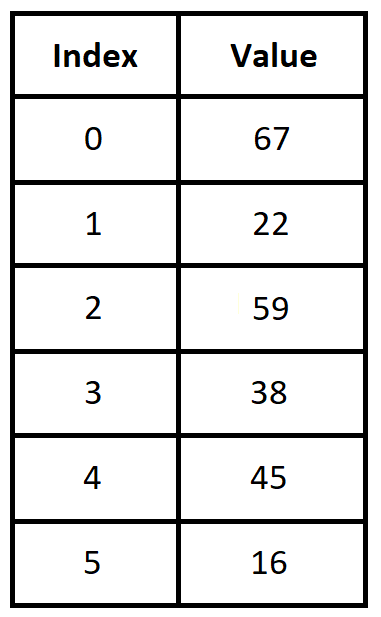
The bubble sort algorithm is a simple sorting procedure. It is typically used to sort
a
list of n data elements in either increasing or decreasing order.
NOTE: This algorithm is called "bubble sort" because "the lighter items bubble up to the top" of the list, closer to index 0, like bubbles in a drink.
WARNING: The bubble sort algorithm
produces the correct result but is
very inefficient. You should almost never use bubble sort in code that you write. In almost every application that requires sorting a list, there is an algorithm that can be used that is much more efficient than bubble sort.
You have been warned!
We describe the bubble sort algorithm for arranging a list of \(n\) real numbers in increasing order.
-
The algorithm compares the first two elements of the list and swaps them if they are out of order.
-
It continues by traversing the list in order of increasing index, comparing each pair of adjacent elements and swapping them if they are out of order until we reach the last entry in the list at index \(n-1\).
-
The last entry in the list will then be the largest element of the original list.
-
After the largest element has been sorted into position \(n-1\), the algorithm continues by again comparing the first two elements and swapping if they are out of order.
-
Continue traversing the list and comparing and swapping adjacent elements that are out of order until position \(n-2\) of the array, after which the 2nd largest element is at index \(n-2\). The elements, now at indices \(n-1\) and \(n-2\) are sorted.
-
Continue to sort at indices \(n-3,\) then \(n-4,\) and so on, until all elements are in increasing order.
A Python implementation of the bubble sort algorithm is given below.
Big-O Analysis of Bubble Sort
We analyze the bubble sort algorithm beginning with a concrete list of size \(n=5\) and generalize the analysis.
Consider the case of a list of size \(n=5\). The naive bubble sort algorithm in this case will involve 4 passes.
In the first pass, there will be 4 comparisons and up to 4 swaps, after which the element in position 5 is in its correct position.
In the second pass, there will be 3 comparisons and up to 3 swaps, after which the element in position 4 is in its correct position.
In the third pass, there will be 2 comparisons and up to 2 swaps, after which the element in position 3 is in its correct position.
In the fourth pass, there will be 1 comparison and one possible swap , after which both the elements in positions 1 and 2 are both in their correct positions.
Adding the comparisons from each pass we obtain,
\(4+3+2+1=1+2+3+4\).
In general, if the list is of size \(n\), there will be \(n-1\) passes with swaps,
\(n-1+n-2+...3+2+1 = 1+2+3+...+n-1\).
We will show later, that
\( 1+2+3+\cdots+n-1= \frac{(n-1)\cdot\ n}{2}=\frac{n^2}{2}-\frac{n}{2}\), which is \(O(n^2)\).
13.4.2. Insertion Sort
The insertion sort works through a list and classifies two sections as sorted and unsorted.
-
The insertion sort scans through each element of the list using an outer loop with a variable, say \(i\).
-
At each stage, the list is divided into a sorted section, say the left section, and a section that is not sorted, say the right.
-
The location up to which the list is sorted, is denoted by a pointer or index, called a key.
-
At the current stage, the next element from the unsorted section, on the right, is inserted into its appropriate position in the sorted section on the left.
-
The process of inserting smaller elements in the left involves shifting, larger elements to the right, using a variable, say \(j\).
A Python implementation of the Insertion Sort Algorithm is given below:
Big-O Analysis of Insertion Sort
It is left as an exercise to verify that the insertion sort algorithm is \(O(n^2)\).
13.4.3. Merge Sort
Merge Sort is a recursive sorting algorithm. The general idea is to divide a list of length \(n\) into \(n\) sublists of length \(1\), where a list of length one is considered already sorted. Subsequently, the algorithm repeatedly merges the sublists to make sorted lists until only a single list of length \(n\) is remaining. This will be the a sorted list consisting of the elements of the original list.
The picture below illustrates this with a list of length seven.
Image credit: "Merge Sort Algorithm Diagram" by VineetKumar. This work has been released into the public domain by its author, VineetKumar at English Wikipedia. This applies worldwide.
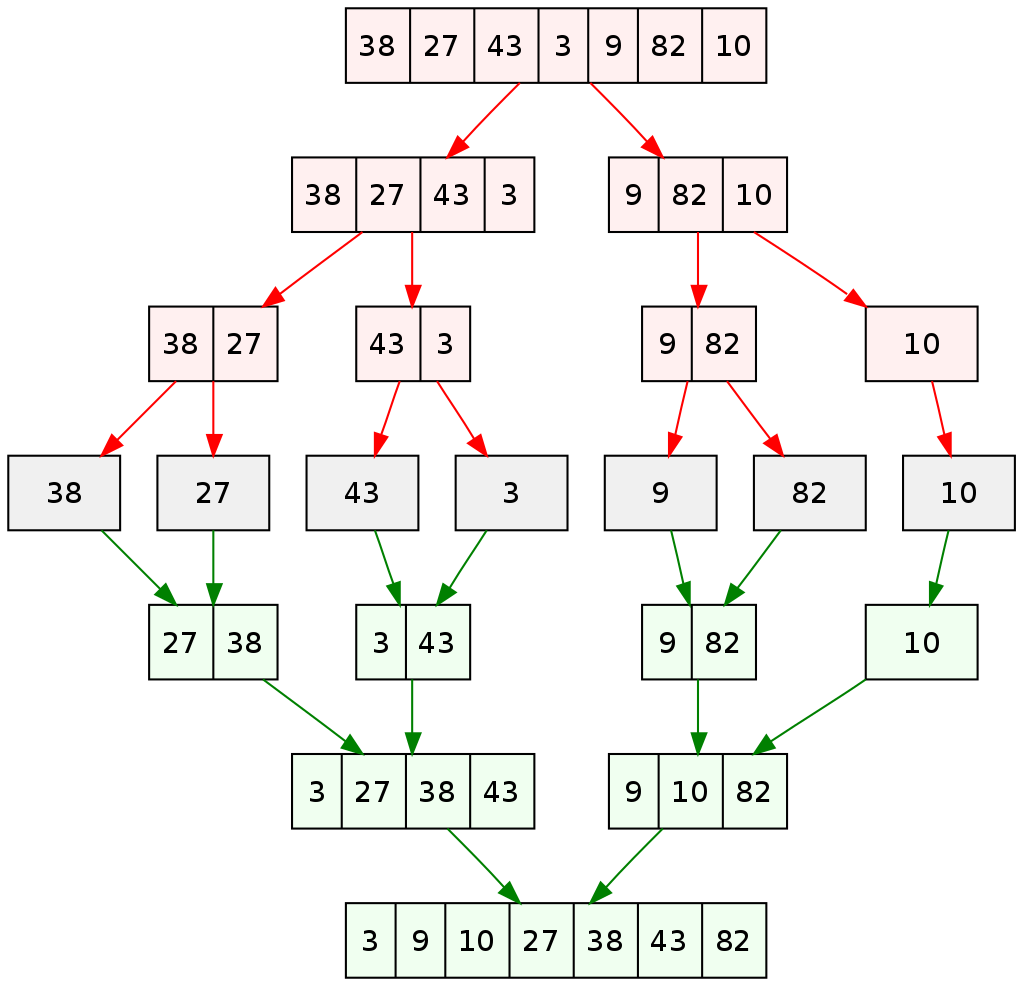
Big-O Analysis of Merge Sort
In the first part of Merge Sort, similar to Binary Search which is \(O(\log{n})\), the list of size \(n\) is recursively split into sublists. In the second part of Merge Sort, \(n\) elements are merged which is \(O(n)\). Since the algorithm performs the first and the second parts, we can multiply to find that the complexity of Merge Sort is \(O(n \log{n})\).
MORE TO COME!
14. Proofs: Mathematical Induction
CAUTION - CHAPTER UNDER CONSTRUCTION!
This chapter was last updated on November 3, 2024.
In this chapter, you will learn how to use the mathematical induction proof technique to create a single proof of infinitely many different but related propositions. This proof technique will also be used to validate algorithms.
14.1. Why Is Mathematical Induction Needed?
We often encounter an infinite sequence of related propositions, all of which appear to be True. To prove all of the propositions, we might try to write a proof for each individual proposition and then combine all those proofs together as a single infinitely long "proof"… but recall from the chapter on Proofs: Basic Techniques that a proof consists of a finite sequence of propositions of finite length. As an analogy, imagine you had an "algorithm" that required infinitely many steps to complete its task… such an algorithm would not be useful in the real world since it could never complete the task!
The next example introduces the ideas we will use to prove an infinite sequence of related propositions.
We will rewrite the above example more formally (with full algebraic detail) later in the chapter.
14.2. The Principle of Mathematical Induction
A proof by mathematical induction of a predicate \(P(n)\) defined for natural numbers \(n \in \mathbb{N}\) consists of three steps.
| Basis Step |
Prove the predicate \(P(n)\) is True for some small value of \(n;\) in most but not all cases, you prove either \(P(0)\) or \(P(1)\) (You can also prove \(P(n)\) for other values if it helps you get a feel for what needs to be proven, as was done in "the sum of the first \(n\) consecutive odd natural numbers is the perfect square \(n^{2}\)" in the previous section.) |
| Induction Step |
Prove that the conditional statement \(P(k) \rightarrow P(k+1)\) is True for any integer \(k.\) |
| Conclusion Step |
Conclude that \(P(n)\) is True for all natural numbers \(n\) that are greater than or equal to the small(est) value used in the Basis Step. This conclusion uses universal generalization as the rule of inference. |
The three steps above are referred to as "The Principle of Mathematical Induction" which is often abbreviated as PMI.
Some textbooks and sources do not include the Conclusion Step as part of PMI, but the remixer wanted to stress that this step is needed to complete the proof.
You can compare the first two steps of PMI to the two steps used in a recursive definition as in the Sequences and Recursion chapter. Note that a recursive defintion is used to describe and define a process for constructing objects or a set of objects or a structure, but a proof by mathematical induction is used to justify and validate such a process.
Note that each of the three steps will be a proof of finite length, but will allow us to conclude that \(P(n)\) is true for every natural number \(n\) greater than or equal to some some small natural number \(n_{0} \geq 0\). That is, we can conclude that \((\forall n \geq n_{0}) P(n)\) is a True propostion.
As an analogy, imagine we are building a tower using interlocking toy blocks. How tall can the tower be?
The basis step involves placing a foundation on the ground (either a flat surface for \(n = 0\), or a first block for \(n = 1\)),
and the induction step justifies that if we have built a tower that has height \(k\) then we can build a tower of height \(k+1\) by placing one more block on the tower. The conclusion step states that we can build a tower that is of any finite height \(n\) (as long as we have \(n\) or more blocks and ignore issues arising from real-world physics!) Note that we never build an infinitely tall tower.
Note: Some textbooks and sources use an "infinite ladder" analogy for mathematical induction, but this is not quite correct. A better analogy is a ladder that can be extended to any finite height you need, but that is always of finite height.
14.3. Example Proofs Using Mathematical Induction
As a first example, here is the formal proof that corresponds to the first example of this chapter
The next example proof is the formal proof that corresponds to the first example of this chapter.
MORE PROOFS TO COME!
14.4. Strong Induction
Strong induction is used when it is easier to use the assumption that all the propositions \(P(0), P(1), \ldots , P(n-1)\) are True in order to prove that \(P(n)\) is True.
| Basis Step |
Prove the predicate \(P(n)\) is True for one or more consecutive small values of \(n;\) in most but not all cases, you prove both \(P(0)\) and \(P(1).\) You can also prove \(P(n)\) for other values as well if it helps you get a feel for what needs to be proven. |
| Induction Step |
Prove that the conditional statement \(( P(0) \land P(1) \land \cdots \land P(k) ) \rightarrow P(k+1)\) is True for any natural number \(k.\) |
| Conclusion Step |
Conclude that \(P(n)\) is True for all natural numbers \(n\) that are greater than or equal to the small(est) value used in the Basis Step. This conclusion uses universal generalization as the rule of inference. |
In spite of the name, strong induction and "weak" induction are equivalently powerful techniques in the sense that any proposition that you can prove using strong induction can also be proven by "weak" induction, and any proposition that you can prove using "weak" induction can also be proven by strong induction. The choice of which of the two proof techniques to use is based on convenience only, not power.
Next, we’ll prove the following theorem.
14.5. Validating An Algorithm Using Induction
One of the uses of mathematical induction in computer science is the validation of algorithms. In this section, we’ll prove that the Euclidean Algorithm correctly computes the greatest common divisor (g.c.d.) of two integers.
First, we will prove a lemma (that is, a minor theorem) that we’ll use in the induction step of the main proof.
From the lemma we can conclude that the greatest common divisor of \(a\) and \(b\) is equal to the greatest common divisor of \(b\) and \(r.\)
We are now ready to prove the main result by induction.
| The French mathematician Gabriel Lamé proved in 1844 that if the Euclidean Algorithm requires \(n\) steps then \(f_{n+2} \leq a\) and \(f_{n+1} \leq b.\) A proof by induction is given at this Wikipedia page. Notice that the worst-case complexity for the Euclidean Algorithm is described there as well: The Euclidean Algorithm is \(O(log_{\phi}(b)).\) |
14.6. Exercises
Remixer’s Note: This section is taken from the original “Discrete Math” book, with only a few minor revisions.
-
Prove by induction:
-
For all \(n ≥ 1, \) \(1+2+3+\ldots+n=\displaystyle\sum_{i=1}^{n}i=\displaystyle \frac{n\left(n+1\right)}{2}\)
-
For all \(n ≥ 1, \) \(1^2+2^2+3^2+\ldots+n^2=\displaystyle\sum_{i=1}^{n}i^2=\frac{1}{6} n (n+1) (2 n+1)\)
-
For all \(n ≥ 1, \) \(1^3+2^3+3^3+\ldots+n^3=\displaystyle\sum_{k=1}^{n}k^3=\frac{1}{4} n^2 (n+1)^2\)
-
For all \(n ≥ 1, \) \({23}^n-1\) is divisible by 11.
-
-
Prove by induction that \(n^2+n = n(n+1)\) is even for all integers \(n ≥ 1\).
-
Find an appropriate \(N \in \mathbb{Z}\), and prove by induction that \(n^3 +3n^2\) is even for all \(n ≥ N\).
-
Find an appropriate \(N \in \mathbb{Z}\), and prove by induction that \(n^3 +2n\) is divisible by 3 for all \(n ≥ N\). (Hint: You may use the result \(n(n+1)\), is even for \(n\), an integer.)
-
Prove by induction that \(7\) divides \(2^{4n+2} + 3^{2n+1}\) for all nonnegative integers \(n\).
-
Prove that for any \(n ≥ 1\) and \(x ≥ 0\) that \(\left(1+x\right)^n\geq1+nx\).
-
For all \(n ≥ 5\), prove that \(n^2 < 2^n\)
-
Graph \(n!\) and \(2^n\), and then prove by induction that \( 2^n < n!\) for \(n>3\).
-
Graph \(n^3\) and \(5n+12\), and then use your graph to find an appropriate \(N \in \mathbb{Z}\) to prove by induction that \(5n+12 < n^3\) whenever \(n>N\).
-
Prove by induction that a set \(A\) with cardinality \(|A|=n\) has \(2^n\) subsets.
-
Prove by induction that there are \(3^n\) numbers in base 3 (using the digits 0 ,1, 2) made up of \(n\) digits.
-
Prove by induction that there are \(4^n\) numbers in base 4 (using the digits 0 ,1, 2, 3,) made up of \(n\) digits.
-
State the principle of mathematical induction using a conditional logical statement.
-
Consider the sequence defined recursively as \(a_1=1,a_2=5,\) and \(a_n=5a_{n-1}-6a_{n-2}.\)
-
Calculate the first eight terms of the recursive sequence.
-
Prove by induction that the recursive sequence is given by the formula \(a_n=3^n-2^n.\) (Hint: You may be able to use the fact that \(2\) and \(3\) are the two solutions of the quadratic equation \(x^{2} = 5x - 6.\))
-
-
Consider the sequence defined recursively as \(a_1=1\) and \(a_n=2a_{n-1}+n\).
-
Calculate the first eight terms of the recursive sequence
-
Prove by induction that the recursive sequence is given by the formula \(a_n={4\cdot2}^{n-1}-n-1\).
-
-
Recall that the Fibonacci numbers are defined by the following recurrence relation: \[f_{0}=0, \, f_{1}=1, \text{ and } f_{n} = f_{n-1} + f_{n-2} \text{ for } n \geq 2.\]
-
Prove by induction that the sum of the first \((n+1)\) Fibonacci numbers is 1 less than the \((n+2)\)th Fibonacci number, that is, \[ f_0+f_1+f_2+\ldots+f_n=\sum_{i=0}^{n}{f_i=f_{n+2}-1}. \]
-
Prove by induction that the sum of the squares of the first \((n+1)\) Fibonacci numbers is \[ f_0^2+f_1^2+f_2^2+ \cdots + f_n^2 = \sum_{i=0}^{n} f_i^2=f_n \cdot\ f_{n+1}. \]
-
15. Graphs
CAUTION - CHAPTER UNDER CONSTRUCTION!
This chapter was last updated on November 18, 2024.
Graphs are discrete mathematical structures that have many applications in a diversity of fields including chemistry, network analysis, algorithms, and social sciences.
15.1. Introduction and Basic Definitions
A graph consists of a set of vertices (also called nodes) and a set of edges, where each edge connects either two different vertices or a vertex to itself.
-
For each edge, its endpoints are the vertices that it connects. The edge is said to be incident with each endpoint, and to connect the endpoints.
-
If an edge has only one endpoint, it is called a loop.
-
An isolated vertex is a vertex that is not an endpoint of any edge.
-
If two or more edges connect the same endpoints (or endpoint if the edges are loops), the graph is called a multigraph.
-
A simple graph is a graph that has no loops and does not have two or more edges that connect the same endpoints.
Graphs discussed in this textbook are assumed to be simple unless stated otherwise.
In the next section, we will define graphs in terms of set theory, but it is more useful to represent a graph using either a drawing as in the preceding example, or a list or a matrix as described later in this chapter.
15.2. Undirected Graphs
In this section, we will assume that graphs must have undirected edges, but could have loops and/or parallel edges (that is, multiple edges with the same endpoints.)
NOTICE: No updates will be made to the "Undirected Graphs" section before Dec. 20, 2024. Please skip to the next section, "Simple Graphs."
15.3. Simple Graphs
Recall that in a simple graph, there are no loops and no two edges can connect the same endpoints. This means that each edge is determined by its two distinct endpoints. This allows us to give a relatively simple but formal set-theoretic definition of "simple graph". This formal definition can be useful if you need to implement a simple graph in code.
A simple graph \(G=\left(V,\ E\right)\) is an ordered pair consisting of a set \(V\) of objects called vertices (also called nodes) and a set \(E\) of objects called edges. An edge \(e\in\ E\) is a set of the form \(e=\left\{x,y\right\}\), where the vertices \(x\) and \(y\) are two different elements of \(V\). The two vertices \(x\) and \(y\) in the edge \(e=\left\{x,y\right\}\) are said to be adjacent or connected or neighbors, and \(x\) and \(y\) are called the endpoints of the edge \(e\).
The degree of a vertex \(v \in V\), denoted \(d(v)\), is the number of edges in the graph \(G\) containing the vertex \(v\).
Notice that the sum of all the degrees \(d\left(A\right)+\ d\left(B\right)\ +\ d\left(C\right)+\ \ d\left(D\right)\ \ +d\left(E\right)+\ d\left(F\right) + d\left(G\right)=14\), which is is twice the number of edges, \(2 \cdot \left|E\right|=7\). In fact, this is true for any undirected graph with finitely many edges as long as any loops are counted twice. This result is called the Handshaking Theorem. A formal proof of the Handshaking Lemma can be written using mathematical induction on the predicate \(P(n):\) "If graph \(G\) has \(n\) edges, then the sum of the degrees of the vertices of \(G\) is equal to \(2n.\)"
|
A useful consequence of this to keep in mind is that the sum of the degrees of a graph is always even. |
15.3.1. Simple Directed Graphs
A directed graph (or digraph) is a graph in which the edges are directed from one vertex to another vertex.
15.3.2. Directed Graphs
We can give a formal set-theoretic definition of simple directed graph as well. To indicate the directed edges, ordered pairs of vertices are used instead of 2-element sets.
A simple directed graph \(G=\left(V,\ E\right)\) is an ordered pair consisting of a set \(V\) of objects called vertices (or nodes) and a set \(E\) of objects called edges. A directed edge \(e\in\ E\) is an ordered pair of the form \(e=\left(x,y\right)\), where the vertices \(x\) and \(y\) are two different elements of \(V\). Vertex \(x\) is the initial vertex of \(e\) and vertex \(y\) is the terminal vertex of edge \(e\).
15.4. Examples of Simple Graphs
In this section presents several classes of graphs.
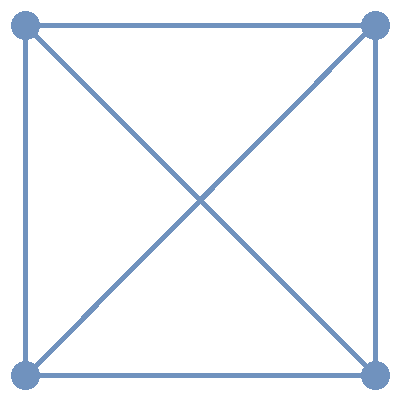
The complete graph \(K_n\) is the simple graph with \(n\) vertices such that any two vertices are adjacent, that is, every pair of vertices are the endpoints of an edge. The image shows \(K_{4},\) the complete graph on 4 vertices. Click here to see images of \(K_{n}\) for the positive integers that are less than or equal to \(12.\)
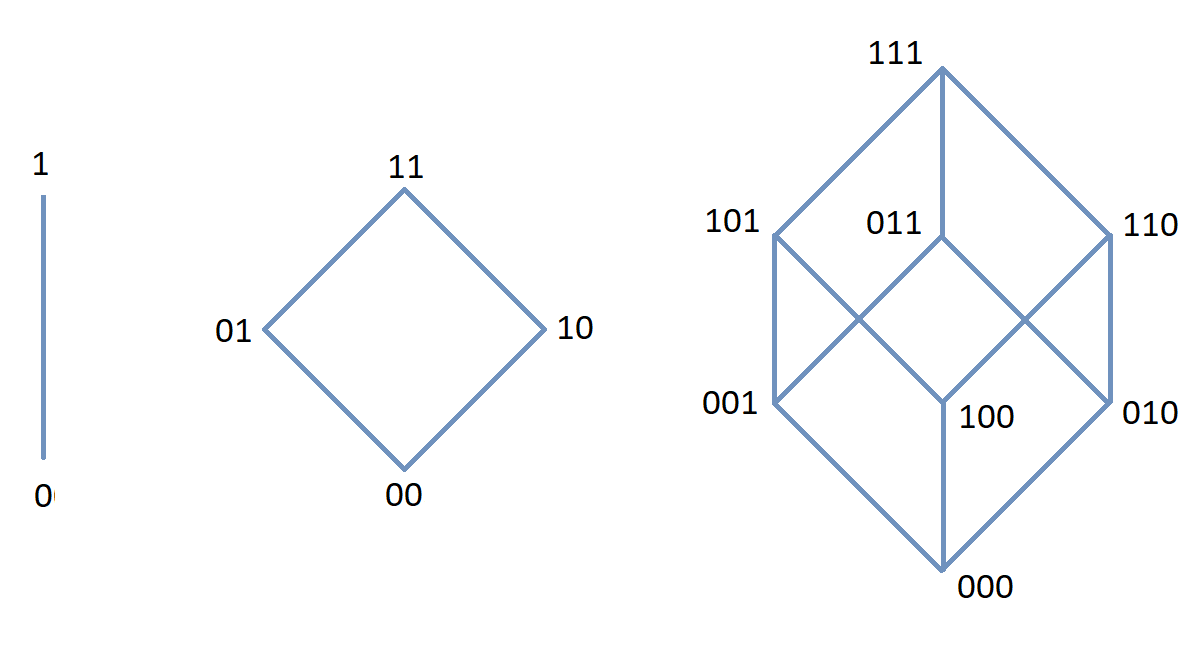
The n-cube \(Q_{n}\) can be described as the graph that has vertex set consisting of the \(2^{n}\) bitstrings of length \(n,\) and edges such that two vertices are adjacent if and only if the bitstrings differ in exactly one bit position. The image shows the three graphs \(Q_{1},\) \(Q_{2},\) and \(Q_{3};\) these graphs can be used as a way to represent the power sets of sets that have \(1,\) \(2,\) and \(3\) elements, respectively. Notice that \(Q_{2}\) can be drawn as a square and that \(Q_{3}\) can be represented as a cube in \(3\)-dimensional space (or by a drawing of a cube in a \(2\)-dimensional plane.)
A bipartite graph is a simple graph whose set of vertices can be partitioned into two disjoint nonempty sets such that every vertex is in exactly one of the two sets and every edge has one endpoint in each of the two sets. One way to think of a bipartite graph is that each vertex can be assigned one of two colors so that every edge must connect vertices of different colors. Notice that \(Q_{1},\) \(Q_{2},\) and \(Q_{3}\) are all examples of bipartite graphs (Question: Is \(Q_{n}\) a bipartite graph for every natural number \(n?\) Why or why not?)
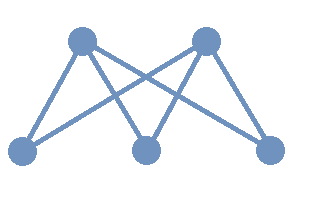
This image shows the graph \(K_{2,3}\) and is another example of a bipartite graph.
Notice that \(K_{2,3}\) has an additional property: Every pair of vertices \(\{a, b \}\) with \(a\) in the set of \(2\) "upper" vertices and \(b\) in the set of \(3\) "lower" vertices are the endpoints of an edge. A bipartite graph that has this additional property is called a complete bipartite graph. In general, the symbol \(K_{m,n}\) represents the complete bipartite graph that has two disjoint sets of vertices, one of cardinality \(|m|\) and the other of cardinality \(|n|,\) such that every pair of vertices that come from the different sets are joined by an edge. Notice that \(Q_{1} = K_{1,1}\) and \(Q_{2} = K_{2,2}\) are complete bipartite graphs, but that \(Q_{3}\) is not a complete bipartite graph because, for example, there is no edge joining \(000\) and \(111.\)
NOTE: The phrase "complete bipartite" needs to be read as a single term used to indicate that a bipartite graph has all the edges it can possibly have. For example, \(K_{2,3}\) is a bipartite graph such that if you tried to enlarge it by inserting an additional edge into the graph, that edge would join either the \(2\) "upper" vertices, \(2\) of the "lower" vertices, or \(2\) vertices that are already joined; in this sense, \(K_{2,3}\) is "complete" as a bipartite graph. \(K_{2,3}\) is not a "complete graph" in the sense of the earlier example in this section. In fact, since a "complete graph" must contain an edge for every pair of distinct vertices, the only graph that can be both a "complete graph" and a "complete bipartite graph" is \(Q_{1} = K_{2} = K_{1,1}.\) Mathematicians recycle and reuse a lot of words… .
15.5. Representing Simple Graphs
In addition to the vertex-edge drawing, a simple graph can be represented in other ways that are more useful for computing.
First, recall that if \(u\) is a vertex of a simple graph, then vertex \(v\) is said to be adjacent to \(u\) if and only if \(\{u, v \}\) are the endpoints of an edge of the graph.
One way to represent a simple graph is by using an adjacency list. This list can be written as a table, where each row has two columns. In each row, the entry in the first column is a single vertex \(v\) and the entry in the second column is a list of all vertices of the graph that are adjacent to \(v.\)
Another way to represent a simple graph is by using an adjacency matrix. The adjacency matrix of a simple graph represents the graph in table form, and contains an entry for each pair of vertices. For each vertex of the graph, there is a row and also a column. If vertices \(u\) and \(v\) are adjacent (that is, connected by some edge), then the adjacency matrix will contain a \(1\) in the position that corresponds to the row for \(u\) and the column for \(v,\) otherwise the matrix contains a \(0\) at that postion. The next example may help make this more clear.
15.6. Weighted Graphs
In some applications, each edge of a graph has a weight, which is some nonnegative number. The weight could represent the physical distance between the two endpoint nodes, or could represent the cost to travel or transmit data between the endpoint nodes.
You can use an adjacency matrix to describe a weighted graph, but instead of using a \(1\) to represent that there is an edge between two vertices you place the the weight of the edge in the correct position of the adjacency matrix, as shown in the following example.
15.7. Connectivity, Eulerian Graphs, and Hamiltonian Graphs
A walk on a graph \(G=\left(V,E\right)\) is a finite, non-empty, alternating sequence of vertices and edges of the form, \(v_0e_1v_1e_2\ldots e_nv_n\), with vertices \(v_i\in V\) and edges \(e_i\in E\).
We will focus on simple graphs. For simple graphs, there is at most one edge joining adjacent vertices, so we can omit the edges from the sequence and instead write \(v_0v_1\ldots v_n.\)
-
A trail is a walk that does not repeat an edge. That is, all edges in a trail are distinct.
-
A path is a trail that does not repeat a vertex.
-
The distance between two vertices, \(u\) and \(v\), denoted \(d(u,v)\), is the number of edges in a shortest path connecting them.
-
A cycle is a non-empty trail in which the only repeating vertices are the beginning and ending vertices, \(v_0=v_n\).
A graph is connected if there is a path from each vertex to every other vertex.
15.7.1. Eulerian Graphs
An Euler path on a graph is a path that uses each edge of the graph exactly once.
An Euler circuit (also called an Eulerian trail) is a closed trail containing each edge of the graph \(G\) exactly once and returning to the start vertex. A graph with an Euler circuit is considered Eulerian or is said to be an Eulerian graph.
In the following, the first graph is Eulerian. The sequence of edges \(e_1 e_2 e_3 e_4 e_5 e_6 e_7\) describes an Euler circuit. The second graph is not an Eulerian graph. Convince yourself of this fact by looking at all necessary trails or closed trails.
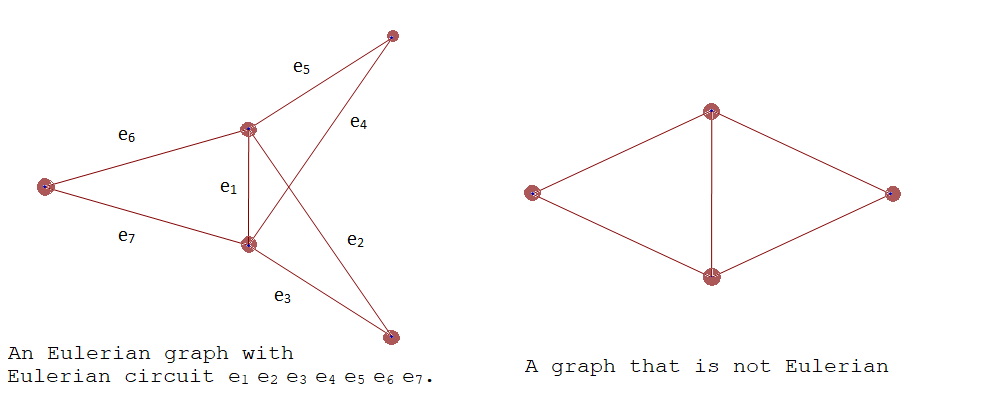
The following are useful characterizations of graphs with Euler circuits and Euler paths and are due to Leonhard Euler
15.7.2. Hamiltonian Graphs
A cycle in a graph \(G\), is said to be a Hamiltonian cycle if every vertex, except for the starting and ending vertex, is visited exactly once.
A graph is Hamiltonian, or said to be a Hamiltonian graph, if it contains a Hamiltonian cycle.
The following graph is Hamiltonian and shows a Hamiltonian cycle \(ABCDA\), highlighted, while the second graph is not Hamiltonian.
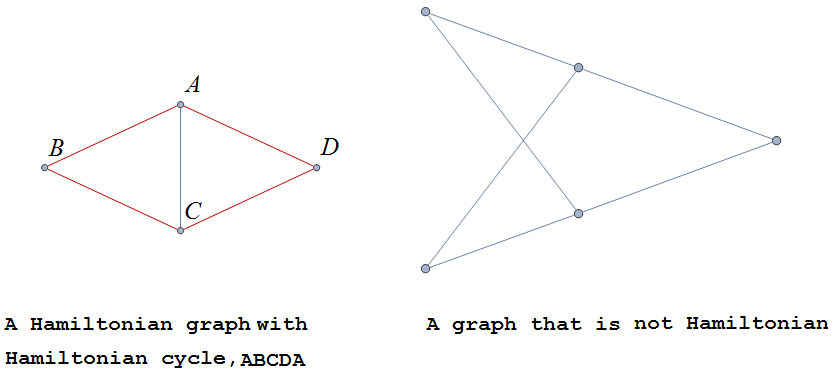
While we have the Euler Theorem to tell us which graphs are Eulerian or not, there are no comparable simple criteria to determine if graphs are Hamiltonian or not. We do have the following sufficient criterion due to Paul Dirac.
15.8. Creating New Graphs From Old Graphs
Given a set of one or more graphs, there are several ways to create new graphs using the graphs in the set.
15.8.1. Subgraphs
Given a simple graph \(G,\) you can form a subgraph \(H\) by choosing a subset of the vertices of \(G\) along with a subset of the edges of \(G\) such that each edge has endpoints in the set of vertices you chose. That is, \(H\) is a subgraph of \(G\) if \(H\) is a graph such that every vertex of \(H\) is a vertex of \(G\) and every edge of \(H\) is a vertex of \(G.\)
More formally, \(H = (V_{H}, E_{H})\) is a subgraph of \(G = (V,E)\) if and only if all three of the following statements are True: \(V_{H} \subseteq V,\) \(E_{H} \subseteq E,\) and for every edge \(e \in E_{H}\) the endpoints of \(e\) are in \(V_{H}.\)
If \(v\) is a vertex of \(G,\) we denote by \(G-v\), the subgraph obtained from \(G\) by removing the vertex \(v\) along with all edges in \(E\) that have \(v\) as an endpoint.
The image shows a graph \(G\), and the subgraph \(G-d\) formed by removing the vertex \(d\).

In the same way, you can obtain a subgraph by removing multiple vertices along with the edges associated with the removed vertices. The subgraph obtained is called the subgraph induced by removing those vertices.
15.8.2. Unions and Intersections Of Graphs
Given two simple graphs \(G_{1}\) and \(G_{2}\), you can form the union of the graphs by taking the union of the two sets of vertices to get a new set of vertices, and taking the union of the two sets of edges to get a new set of edges. Notice that any edge that is in both graphs will only appear once in the new graph because you took the union of the sets of edges, that is, you can’t create parallel edges by forming the union.
In the same way, you can form the intersection of two simple graphs by taking the intersection of the two sets of vertices to get a new set of vertices, and taking the intersection of the two sets of edges to get a new set of edges.
15.9. Graph Isomorphism
Recall that a graph is determined by its set of vertices and how those vertices are connected by edges, but not the drawing you use to represent the graph.
Sometimes, different graphs may be essentially the same graph, as in the next example.
A one-to-one correspondence between the set of vertices of two simple graphs that preserves adjacency is called a graph isomorphism, and the two graphs are said to be isomorphic. Informally, you can think of two isomorphic graphs as a pair of graphs where one graph can be relabeled and/or reshaped to obtain the other graph (That is, the two graphs are the same graph but have drawings that are labeled and/or shaped differently.)
15.10. Finding A Shortest Path: Dijkstra’s Algorithm
COMING SOON!
15.10.1. Traveling Salesperson Problem (TSP)
COMING SOON!
15.11. Additional topics will be added to this chapter soon!
-
Traveling Salesperson Problem (TSP)
-
Algorithms for Graphs
-
Shortest-path algorithms (Dijkstra’s and Floyd’s algorithms)
-
Transitive closure (Floyd’s algorithm)
-
Topological sort
MORE TO COME!
16. Trees
CAUTION - CHAPTER UNDER CONSTRUCTION!
This chapter was last updated on November 18, 2024.
A tree is a connected graph that contains no simple circuits. Trees are used to model decisions, to sort data, and to optimize networks.
16.1. Definitions, Examples, and Properties of Trees and Forests
A tree is a simple graph \(T\) that is connected and has no cycles (that is, there is no trail in \(T\) that starts and ends at the same vertex.)
A forest is the union of several trees. A forest is a simple graph that has one or more connected components, where each connected component is a tree.

The image shows a forest composed of \(3\) trees. Notice that for any two vertices in one of the trees, there is only one simple path that joins the vertices. This is True for every tree.
16.2. Additional Topics
Students in CSC 230 Fall 2024 should refer to the slide decks posted in Canvas.
-
Spanning Trees and Spanning Forests
-
Kruskal’s Algorithm
-
-
Binary Trees
-
Tree Traversal Strategies
-
Expression Trees
-
-
Algorithms for Binary search trees
-
Algorithms for Depth- and breadth-first traversals
-
17. Appendix: On-Demand Math Resources
This chapter was last updated on August 25, 2024.
This appendix discusses material that you have likely seen before but may need some review.
17.1. Linear Functions And Their Equations
A linear function is one that has a constant rate of change.
\begin{array}{|l|c|c|c|c|c|} & x & 1 & 2 & 3 & 4 & 5 \\ \hline \\ & y & 1 & 3 & 5 & 7 & 9 \end{array}
The table above displays a function with independent variable \(x\) and dependent variable \(y\).
Notice that the value of \(y\) increases by \(2\) for each increase in \(x\) by \(1\). The rate of change of this function is \(2\); this corresponds to the slope \(m\) of the continuous line that passes through the points with \(xy\)-coordinates given in the table.
The vertical intercept \(b\) (in this case, the y-_intercept) is the \(y\)-value that corresponds to \(x = 0\), that is, \((0,\,b)\) is on the same continuous line as the points represented in the table. In this example, \(0\) is not a value of \(x\), but we can still find the vertical intercept by _subtracting \(1\) from the smallest \(x\)-value and subtracting \(2\) from the corresponding \(y\)-value , which tells us that the point \((0,\,-1)\) lies on the same continuous line as the points represented in the table.
The equation of the linear function determined by the points in the table is \(y = 2 \cdot x + (-1)\), which can be written more simply as \(y = 2x - 1\). This also is the equation of the continuous line that passes through the points with \(xy\)-coordinates given in the table, but the linear function can be restricted to a smaller domain as needed by the context where it is being used, for example, we may only need to use inputs \(x\) from the set of positive integers or possibly just the set \(\{ 1,\,2,\,3,\,4,\,5 \}\).
17.2. Arithmetic Sequences
An arithmetic sequence or arithmetic progression is a sequence of numbers \(a_{0}, \, a_{1}, \, a_{2}, \, \ldots\) such that there is a constant \(d\) so that \[ a_{i+1}-a_{i} = d \text{ for all } i \in \mathbb{N}\] The constant \(d\) is called the common difference of the sequence. The sequence can be infinite, defined for every \(i \in \mathbb{N},\) or finite, defined only for \(i \in \mathbb{N}\) less than some greatest index \(n\).
As an example, the sequence \(1, 4, 7, 10, 13, 16\) is a finite arithmetic sequence with common difference 3 and index set \(\{ 0, 1, 2, 3, 4, 5 \}.\) We can extend that sequence to an infinite arithmetic sequence \(1, 4, 7, 10, 13, 16, \ldots\) using a recursive definition \[a_{0} = 1, \text{ and } a_{i+1} = a_{i} + 3 \text{ for integer } \in \mathbb{N} \]
Notice that there is also a nonrecursive definition for this sequence: Since the difference between two consecutive terms of the sequence is always \(d\) the points \((i, \, a_{i})\) must lie on a line in the xy-plane. The slope of this line is \(d\) and the y-intercept of the line is the initial value \(a_{0},\) so the arithmetic sequence can also be described as \[ a_{i}= d \cdot i + a_{0} \text{ for all } i \in \mathbb{N}\]
For the example \(1, 4, 7, 10, 13, 16, \ldots\), the nonrecursive definition is \[a_{i} = 3i + 1 \text{ for all } i \in \mathbb{N}\]
17.3. Geometric Sequences
A geometric sequence or geometric progression is a sequence of numbers \(a_{0}, \, a_{1}, \, a_{2}, \, \ldots\) such that there is a constant \(r\) so that \[ a_{i+1} = r \cdot a_{i} \text{ for all } i \in \mathbb{N}\] The constant \(r\) is called the common ratio of the sequence. The sequence can be infinite, defined for every \(i \in \mathbb{N},\) or finite, defined only for \(i \in \mathbb{N}\) less than some greatest index \(n\).
As an example, the sequence \(5, 10, 20, 40, 80\) is a finite geometric sequence with common ratio 2 and index set \(\{ 0, 1, 2, 3, 4 \}.\) We can extend that sequence to an infinite geometric sequence \(5, 10, 20, 40, 80, \ldots\) using a recursive definition \[a_{0} = 5, \text{ and } a_{i+1} = a_{i} \cdot 2 \text{ for integer } i \in \mathbb{N} \]
There is also a nonrecursive definition for this sequence: Since the ratio between a term and its predecessor in the sequence is always \(r\) the points \((i, \, a_{i})\) must lie on the graph of an exponential function in the xy-plane. The y-intercept of the graph is the initial value \(a_{0},\) so the geometric sequence can be described as \[ a_{i} = a_{0} \cdot r^{i} \text{ for all } i \in \mathbb{N}\]
For the example \(5, 10, 20, 40, 80, \ldots\), the nonrecursive definition is \[a_{i} = 5 \cdot 2^{i} \text{ for all } i \in \mathbb{N}\]
MORE TO COME!
18. Appendix: Library of Functions
This chapter was last updated on August 25, 2024.
Recall that for any function,
-
the domain is the given set of input values for the function,
-
the codomain is a given set that contains all possible output values (but may contains other values that are not outputs, too), and
-
the range is the set that contains only the output values of the function.
Functions can in many cases be visualized graphically, for example when mapping from the real line, \(\mathbb{R}\) to the real line, such maps are viewed on a Cartesian plan.
18.1. Polynomial Functions
A polynomial is an algebraic expression of the form \(a_{n}x^{n} + a_{n-1}x^{n-1} + \ldots + a_{1}x^{1} + a_{0}\), that is, \(\sum\limits_{i=0}^{n}a_{i}x^{i}\), where n is a natural number, x is a variable, and \(a_{n}, a_{n-1}, \ldots, a_{1}, a_{0}\) are real numbers. Examples of such expressions are
-
7, a constant,
-
\(2x + 7\), a linear polynomial,
-
\(3x^{2} + 2x + 7\), a quadratic polynomial.
A polynomial can be evaluated by substituting a number for each occurence of x. For example, if we substitute \(-1\) for x in each of the three polynomials above, we get
-
7 evaluated at \(x = -1\) is 7,
-
\(2x + 7\) evaluated at \(x = -1\) is \(2 \cdot (-1) + 7 = 5\),
-
\(3x^{2} + 2x + 7\) evaluated at \(x = -1\) is \(3 \cdot (-1)^{2} + 2 \cdot (-1) + 7 = 8.\)
In this way, every polynomial can be used to define a corresponding polynomial function with domain \(\mathbb{R}\) and codomain \(\mathbb{R}.\)
18.1.1. Quadratic Function
The function \(f(x) =x^2\), denotes the association \((a,b) =(x, x^2)\) with \(f : \mathbb{R} \rightarrow \mathbb{R}\). We notice that the range is the set of real numbers \([0, \infty)= \mathbb{R}^{+}\). The function is not invertible, since it is not injective. For example, we have both \(f(-3) =9\) and \(f(3)=9\). With \(f : \mathbb{Z} \rightarrow \mathbb{Z}\) notice that the range is now \(\mathbb{N}\)
\begin{array}{lccccccccccc} & x & -5 & -4 & -3 & -2 & -1 & 0 & 1 & 2 & 3 & 4 & 5 \\ & x^2 & 25 & 16 & 9 & 4 & 1 & 0 & 1 & 4 & 9 & 16 & 25 \end{array}
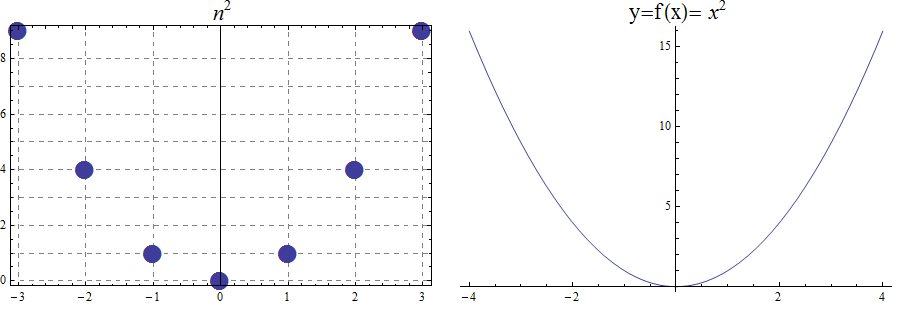
18.1.2. The Cubic function
The function \(f(x) =x^3\), denotes the association \((a,b) =(x, x^3)\) with \(f : \mathbb{R} \rightarrow \mathbb{R}\). Also, we notice that the range is the set of all real numbers \((- \infty , \infty)=\mathbb{R}\). The function is bijective and so invertible. With \(f : \mathbb{Z} \rightarrow \mathbb{Z}\), notice that the range, in addition to domain, is also \(\mathbb{Z}\)
\begin{array}{llcccccccccl} & x & -5 & -4 & -3 & -2 & -1 & 0 & 1 & 2 & 3 & 4 & 5 \\ & x^3 & -125 & -64 & -27 & -8 & -1 & 0 & 1 & 8 & 27 & 64 & 125 \end{array}

18.1.3. The Square Root and Cube Root Functions
For the purposes of completeness and for comparing how fast functions \(f(x)\) grow for large x, we present the inverse of the functions \(f(x)= x^2\) and \(f(x)= x^3\), when \(f(x):\mathbb{R}+→\mathbb{R}+\). Respectively, the functions\( f(x)=\sqrt{x}\) and \(f(x)= \) \$root(3)(x)\$.
\begin{array}{lcccccccccclll} & x & 0 & 1 & 4 & 9 & 16 & 25 & 36 & 49 & 64 & 81 & 100 & 121 & 144 \\ & \sqrt{x} & 0 & 1 & 2 & 3 & 4 & 5 & 6 & 7 & 8 & 9 & 10 & 11 & 12 \end{array}
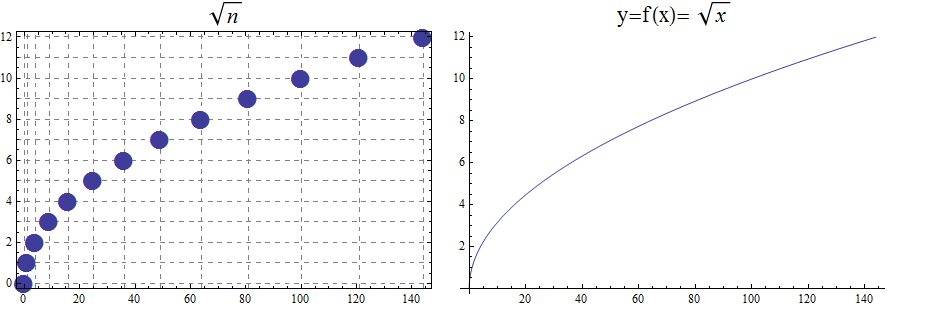
\begin{array}{lcccccl} & x & 0 & 1 & 8 & 27 & 64 & 125 \\ & \sqrt[3]{x} & 0 & 1 & 2 & 3 & 4 & 5 \end{array}
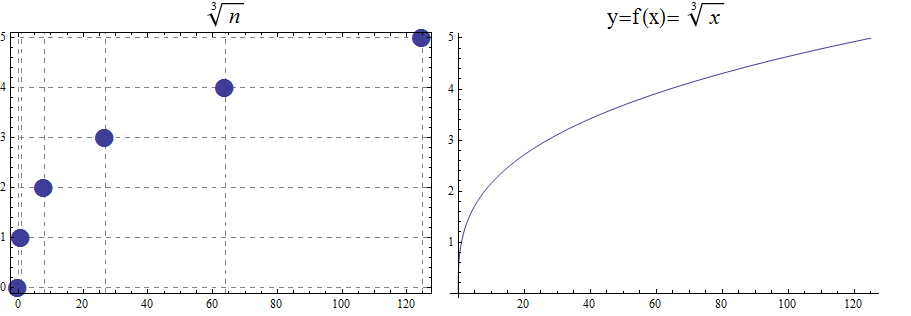
18.2. Exponential and Logarithmic Functions
We begin by summarizing important properties of exponentials.
18.2.1. Exponential Functions
Exponential functions are of the form \(f\left(x\right)=b^x\), where \(b\) is the base and the variable \(x\) is in the exponent. The base \(b>0\) and \(b ≠ 1\). Properties of exponential functions come from properties of exponents. When the base \(b\) is greater than 1 the exponential function is increasing exponentially, as in the case \(f(x) = 2^x\).
\begin{array}{llcccccccccl} & x & -5 & -4 & -3 & -2 & -1 & 0 & 1 & 2 & 3 & 4 & 5 \\ & 2^x & \frac{1}{32} & \frac{1}{16} & \frac{1}{8} & \frac{1}{4} & \frac{1}{2} & 1 & 2 & 4 & 8 & 16 & 32 \end{array}
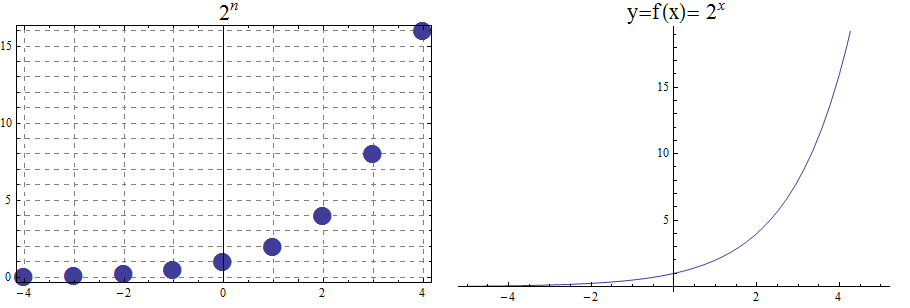
When the base \(b\) is less than 1 the exponential function is decreasing exponentially, as in the case \(f(x) = \left(\frac{1}{3}\right) ^x\).
\begin{array}{llcccccccccl} & x & -5 & -4 & -3 & -2 & -1 & 0 & 1 & 2 & 3 & 4 & 5 \\ & (\frac{1}{3})^x & 243 & 81 & 27 & 9 & 3 & 1 & \frac{1}{3} & \frac{1}{9} & \frac{1}{27} & \frac{1}{81} & \frac{1}{243} \end{array}
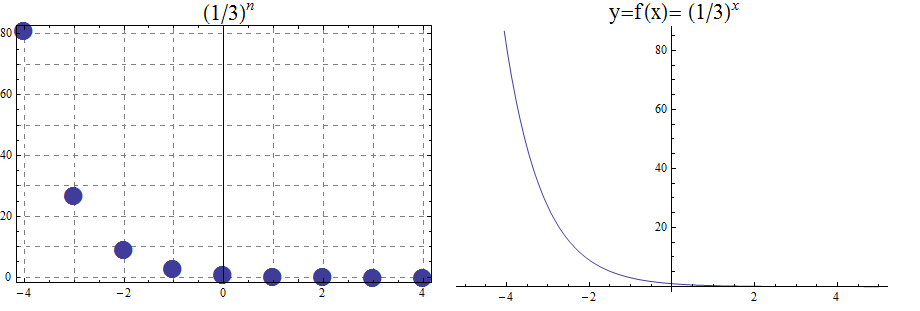
18.2.2. Logarithmic Functions
Logarithmic functions are the inverse functions corresponding to exponential functions and are used to solve exponential equations. For example, \(y=2^x\) is solved for \(x\) by inverting \(x=\log_2{y}\). Properties of logarithms follow from this relationship between exponentials and logarithms and properties of the exponentials.
We summarize three important properties of logarithms.
All other properties of logarithmic functions come from properties relating the logarithm as the inverse of the exponential and the equivalence of the logarithm \(a =\log_b m\) with \(b^a=m\).
When the base \(b\) is greater than 1, the logarithm function is increasing, as in the case \(f(x) = \log_2 x\).
\begin{array}{llllllcccccc} & x & \frac{1}{32} & \frac{1}{16} & \frac{1}{8} & \frac{1}{4} & \frac{1}{2} & 1 & 2 & 4 & 8 & 16 & 32 \\ & log_2 x & -5 & -4 & -3 & -2 & -1 & 0 & 1 & 2 & 3 & 4 & 5 \end{array}

When the base \(b\) is less than 1, the logarithm function is decreasing exponentially, as in the case \(f(x) = \log_{\frac{1}{3}} \ x\).
\begin{array}{llllllcccccl} & x & \frac{1}{243} & \frac{1}{81} & \frac{1}{27} & \frac{1}{9} & \frac{1}{3} & 1 & 3 & 9 & 27 & 81 & 243 \\ & \log_{\frac{1}{3}} x & 5 & 4 & 3 & 2 & 1 & 0 & -1 & -2 & -3 & -4 & -5 \end{array}
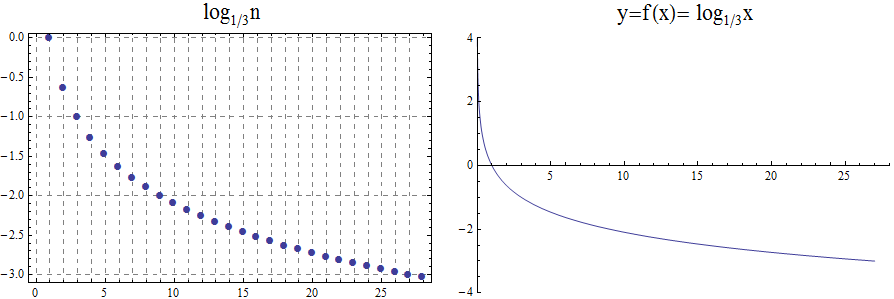
18.3. The Floor and Ceiling Functions
The floor and ceiling functions round a real number input to an integer.
-
The floor of x, written as \(\lfloor x \rfloor,\) is the greatest integer that is less than or equal to x. In older textbooks you may see this function named as the greatest integer function and denoted by \([ x ] .\) For example, \(\lfloor -1.5 \rfloor = -2\).
-
The ceiling of x, written as \(\lceil x \rceil,\) is the least integer that is greater than or equal to x. For example, \(\lceil -1.5 \rceil = -1\).
On a number line, the floor of x and the ceiling of x are the consecutive integers such that \(\lfloor x \rfloor \leq x \leq \lceil x \rceil\).
The floor and ceiling functions are step functions: In the plane, their plots look like they are made of horizontal steps.
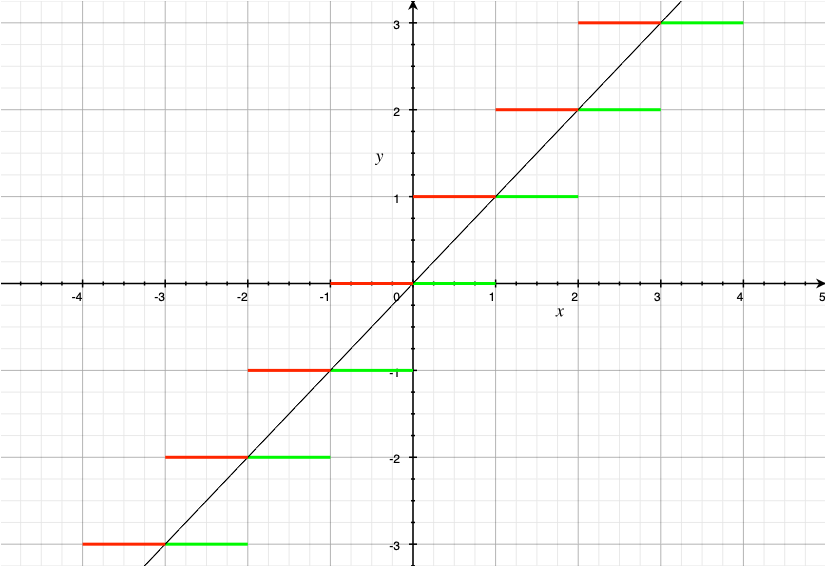
Note that the plot of the floor function, shown in green, is always at the same height or below the graph of the line \(y = x\), and that the plot of the ceiling function, shown in red, is always at the same height or above the graph of the line \(y = x.\)
18.4. Other Functions
MORE TO COME!!
19. Appendix: An Introduction to Python
19.1. Programming Basics
Computers are programmable machines that process information by manipulating data. As the data can represent any real world information, and programs can be readily changed, computers are capable of solving many kinds of problems.
19.1.1. Programming Languages and Environments
There are many different programming languages for programmers to choose from. Each language has its own advantages and disadvantages, and new languages gain popularity while older ones slowly lose ground. In this book, we use the Python 3 programming language. It is popular in both academia and industry, and was designed with education in mind.
19.1.2. PythonTutor
PythonTutor is an environment for creating very short and simple Python programs and visualizing their execution. This enables beginners to visually see the data as it gets manipulated by the instructions.
19.1.3. Comments
Program files can contain source code and comments. Comments are not instructions for the computer to follow, but instead notes for programmers to read. Comments in Python start with a pound sign (#). Anything following the pound sign that is on the same line as the pound sign will not be executed. Often, at the very beginning of a program, comments are used to indicate the author and other information. Comments are also used to explain tricky sections of code or disable code from executing.
# This line is not Python code, it is a comment.
score = 9001 # over 9000!!!
# The next line of code is disabled because is starts with a #.
# score = 800019.2. Data Types
Programming is all about information processing. Information is categorized by data types. Four basic data types we will be considering are int, float, bool, and str. Int consists of integers, which are whole numbers written without a decimal point. This includes positive and negative whole numbers as well as zero. Float consists of floating-point numbers, which are numbers that are written with a decimal point. Bool consists of Boolean values (named after the mathematician George Boole). The only Boolean values are True and False. Str consists of strings, which are sequences of text characters including punctuation, symbols, and whitespace. Every value in Python has a corresponding data type. The table below shows examples of ints, floats, and strings.
| Data Type | Example Values |
|---|---|
int |
2, -2, 0, 834529 |
float |
3.14, -2.3333, 7.0 |
bool |
True, False |
str |
"Hello World!", 'Coconut', "0", '4 + 6' |
|
Strings and Quotation Marks
Strings are always surrounded by quotation marks. Python allows either single (') or double (") quotation marks for single line strings. Python also allows triple quotation marks (either ''' or """) for a string that spans multiple lines. |
19.3. Variables
Variables are (virtual) boxes that store values for reuse later. A variable has a name and a current value. Each variable can only hold one value at a time. Variables are assigned a value using the single equal sign (=). As Python executes one line at a time, variables come into existence on the line where they are first assigned. Each variable only stores the most recent value assigned to it.
|
Variable Names
Variables can have complex names like player1_score. In general, never start a variable name with a number and never use spaces in variable names. |
19.4. Operators and Expressions
|
Expression Evaluation
When Python encounters a line with an expression, it always evaluates the expression first. Consider the following line of code: Python first calculates the value of the expression to the right of the equal sign by using the standard order of operations starting inside the parentheses. The value given by the above expression is calculated to be equal to 14. Then, Python creates the variable x and assigns the value 14 to this variable. The variable only stores the calculated value, not the entire expression that generated that value. |
19.5. Strings and Printing
Besides creating and storing values in variables, we can also output text on a screen by calling the print() function.
19.6. If Statements
A block of code is a collection of lines of code that are either all executed (in sequential order) or all skipped. Blocks always start with a colon (:) on the previous line and require every line in the block to be indented the same amount using tabs or spaces. One way in which Python can execute or skip over a block involves using an if command and a Boolean expression. If the expression is true, then the block executes. Othewise, the block is skipped.
When you want to force exactly 1 of 2 blocks to execute (as opposed to just skipping a block), you can use the else command in addition to the if command. If the expression following the if command is true, then the first block executes. Otherwise, the second block executes.
In order to force exactly 1 of more than 2 blocks to execute, you can use the elif command in addition to the if and else commands. Each elif command must be followed by a Boolean expression. When using if and elif commands, each expression is checked in sequential order, and the block following the first true expression executes. If none of the expressions are true, the block following the else command is executed.
19.7. While Statements
Python can execute a block repeatedly using a while statement and a Boolean expression. The block repeats until the Boolean expression is false.
| The += operator increases the value of the variable written to the left of the operator by the value written to the right of the operator. |
19.8. Lists and Loops
When you need to consider many values at once, use a list.
When you want to consider every value in a list, use a for loop.
| The range() function returns a sequence of numbers. The sequence starts at the value given by the first argument, increments by 1, and ends at one less than the value given by the second argument. For example, range(2,5) returns 2,3,4. If only one argument is given, that argument is considered the second argument and the first argument is set to 0 by default. For example, range(4) returns 0,1,2,3. |
19.9. List Appending and Slicing
We can append to lists with the concatenation operator (+). We can also slice a list using the bracket notation and two indices separated by a colon (:). The first index specifies the starting point of the slice while the second index specifies the stopping point of the slice + 1.
19.10. Lists versus Arrays
Python has both lists and arrays. Lists are convenient because the items in the list can be of different data types, but all items in an array must have the same data type. Arrays are more efficient because the items are stored in the array, but a list stores only a reference (or pointer) to the actual item. For the purposes of the MKD Remix, lists are preferred, but be aware that in some cases an array may be a better choice than a list. You can read more about arrays here.
19.11. Defining Custom Functions
In the examples above we have called several functions like print() and len(). You can define your own functions using def. A function definition includes zero or more parameter variables. The values of those parameter variables are referred to as the arguments of the function.
19.12. Exercises
-
Given the following Python code, what is the value and data type of each variable?
a = 6 + 8 large = a // 4 b = 22 // 3 c = 22 % 3 d = False or True e = True and False sheep = (True or (b > 10)) -
Given the following Python code, determine the printed output.
print("Hello World!") a = "The answer is" b = 6 * 7 print(a, b) print(False, "Hobbit", 1, "Ring") -
For the following code, determine the value of the variable letter when the score is 92, 84 and 59.
score = #an interger between 0 and 100 if score >= 90: letter = 'A' elif score >= 80: letter = 'B' elif score >= 70: letter = 'C' elif score >= 60: letter = 'D' else: letter = 'F' -
For the following code, determine the value of the variable ans for each case given below.
if outside == False: if (n >= 2 and n <= 20): return ans = True else: return ans = False else: if (n <= 2 or n >= 20): return ans = True else: return ans = False-
n = 3, outside = False
-
n = 15, outside = False
-
n = 15, outside = True
-
n = 12, outside = True
-
-
What will this code print out?
while count > 0: print("Welcome") count -= 1 -
Write Python code to satisfy the following conditions. Then test your code on the values of the variables given.
-
Given an int n, return the absolute diffrence between n and 10, except return triple the absolute dfference if n is over 10. It should return 1 when n=9. It should return 33 when n=21. What will the code return when n=7 or n=35?
-
We have a loud talking robot. The "hour" parameter is the current hour time in the range 0 to 23. We are in trouble if the robot is talking and the hour is before 6 or after 21. Return True if we are in trouble. It should return True when the robot is talking and the hour is 8. It should return False when the robot is not talking and the hour is 8. What does it return if the robot is talking and the hour is 9?
-
-
What will the following code print out?
numbers = [1, 3, 5, 7, 10] sq = 0 for val in numbers: sq = val * val print(sq) -
What will the following code print out?
for i in range(1, 20, 2): print(i) -
Use the following definition of the function front3() to find the output of the program for the list [1, 3, 5, 7].
def front3(nums): i = 0 while (i < len(nums) and i < 5): if nums[i] == 3: return True i += 1 return False -
Write a function that takes, as input, two lists of integers, a and b, both of length 3, and returns, as output, a new list of length 2 containing the last elements of a and b. For example, if a = [1, 2, 3] and b = [10, 20, 30], then the function should return the list [3, 30].
20. Appendix: Python Syntax Examples
1
2
3
4
5
6
7
8
9
10
11
12
13
14
15
16
17
18
19
20
21
22
23
24
25
26
27
28
29
30
31
32
33
34
35
36
37
38
39
40
41
42
43
44
45
46
47
48
49
50
51
52
53
54
55
56
57
58
59
60
61
62
63
64
65
66
67
68
69
70 # the '#' character makes a COMMENT separating Python from English
x = 3 # create the VARIABLE with NAME x and STORE INT VALUE 3
Sebastien_Score = 9001 # variable names can be long, but no spaces!
y = 1.0 * 3 # y stores EXPRESSION's RETURN FLOAT value 3.0
z = "Hi There!" # z stores a STRING value
w = False # w stores a BOOLEAN value
v = [3, 30, "Hello World"] # v stores a LIST of values
print(z) # print function displays output ("Hi There!")
# Maths
a = 3
b = 3.0 # b stores 3.0 (float values are decimal approximations)
c = 7 // 2 # c stores 3 (int division always gives ints)
d = 7 % 2 # d stores 1 (Mod or Remainder of the division)
a = 5 # change the value of a to 5
a += 1 # INCREMENT the value of a by 1 (to 6)
# Boolean Operators
a = (3 > 2) # a stores True because 3 is greater than 2
a = (2 >= 2) # a stores True because 2 is greater than or equal to 2
a = (3 < 2) # a stores False because 3 is not less than 2
a = (2 <= 2) # a stores True because 2 is less than or equal to 2
a = (3 != 2) # a stores True because 3 is not equal to 2
a = (3 == 3) # a stores True because 3 is equal to 3
a = (True and False) # a stores False, AND returns True only when both sides are True
a = (True or False) # a stores True, OR returns True if at least 1 side is True
a = (not False) # a stores True, NOT returns opposite
# BLOCKS are sections of any code chunked together with INDENTATION
# BLOCKS start with a ':' and continue with each INDENTED line
x = 7
if x > 8: # if CONDITION is True, then execute block, otherwise skip block.
print("Hello") # since x stores 7, this will skip
print("I Am Sam.") # since x stores 7, this will skip
elif x > 2: # elif condition is True AND previous if was False, execute block
print("Hi") # since x stores 7, this will execute
print("I am Sally.") # since x stores 7, this will execute
else: # if all previous conditions are False, executer block.
print("Yo") # since x stores 7, this will skip
print("I'm Bob.") # since x stores 7, this will skip
while x > 3: # repeat a block until condition becomes False
print("Apples")
x += -1
# Lists store multiple values
a = [10, 30, 20, 90] # create a new list
x = len(a) # x stores 4 (the length)
b = a[0] # INDEX into the list, 0 is first value, b stores 10
c = a[3] # c stores 90
d = a[-1] # -1 is last value, d stores 90
e = a[1:3] # slice a from index 1 up to index 3, e stores [30, 20]
a[1] = 50 # modify the second element in the list, a is now [10, 50, 20, 90]
f = a + [5, 15] # f stores [10, 50, 20, 90, 5, 15], CONCATENATION not addition
g = range(0, 4) # range function returns list 0 up to 4, g stores [0, 1, 2, 3]
# For Loops
for c in "Elephant!": # repeat block with c storing each character 1 at a time
print(c) # prints one letter per line
for x in [10, 30, 20]:
print(x) # prints one number per line
# Custom Functions
def myfunc(a, b): # DEFINES a new function that takes 2 INPUT PARAMETER values
c = 2 * a + b # executes only when function is called
return c # RETURNS a value back to the calling code
x = myfunc(10, 5) # Calls the myfunc() function, x stores return value 25
y = myfunc(1, 3) # Calls the myfunc() function, x stores return value 5



